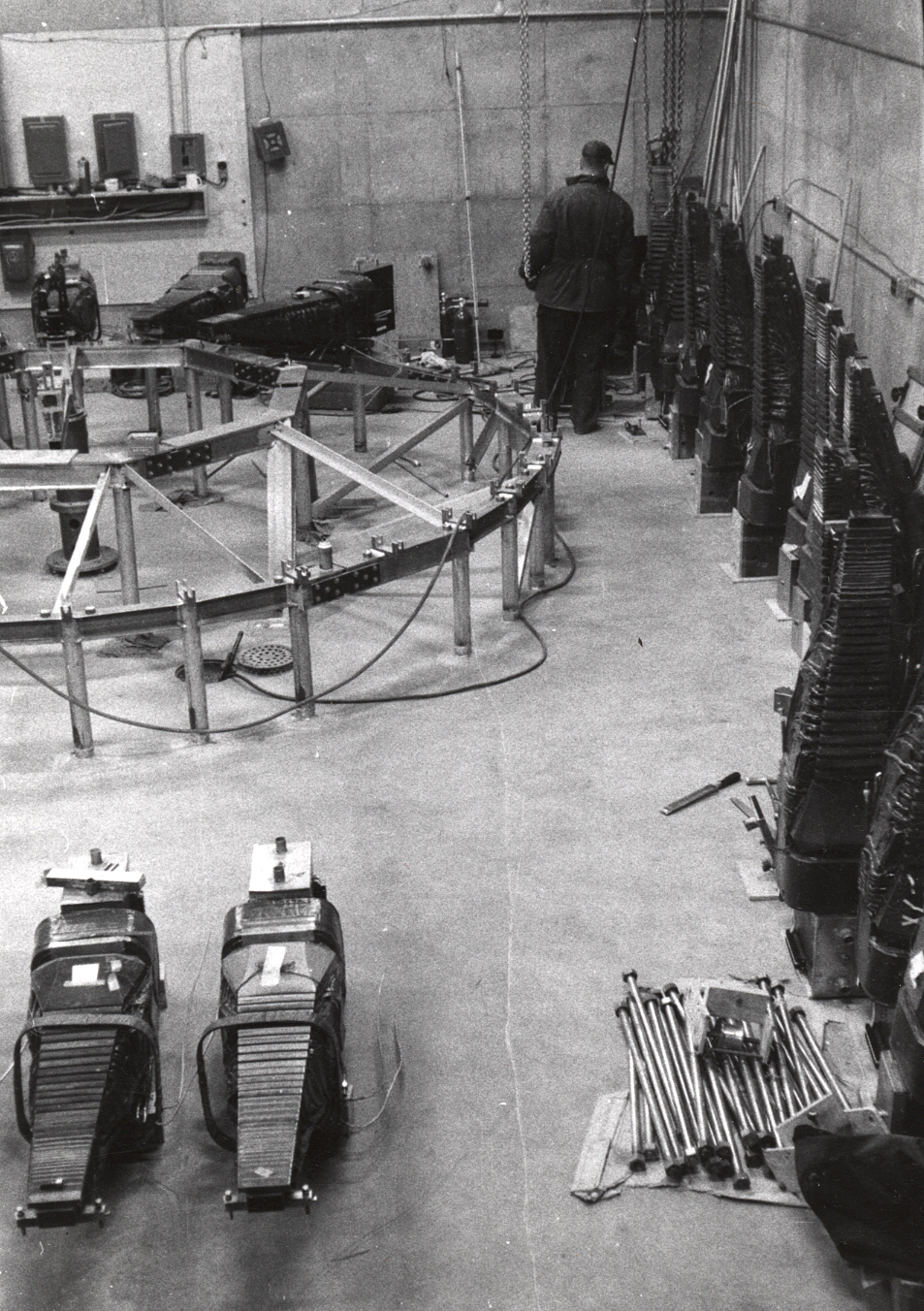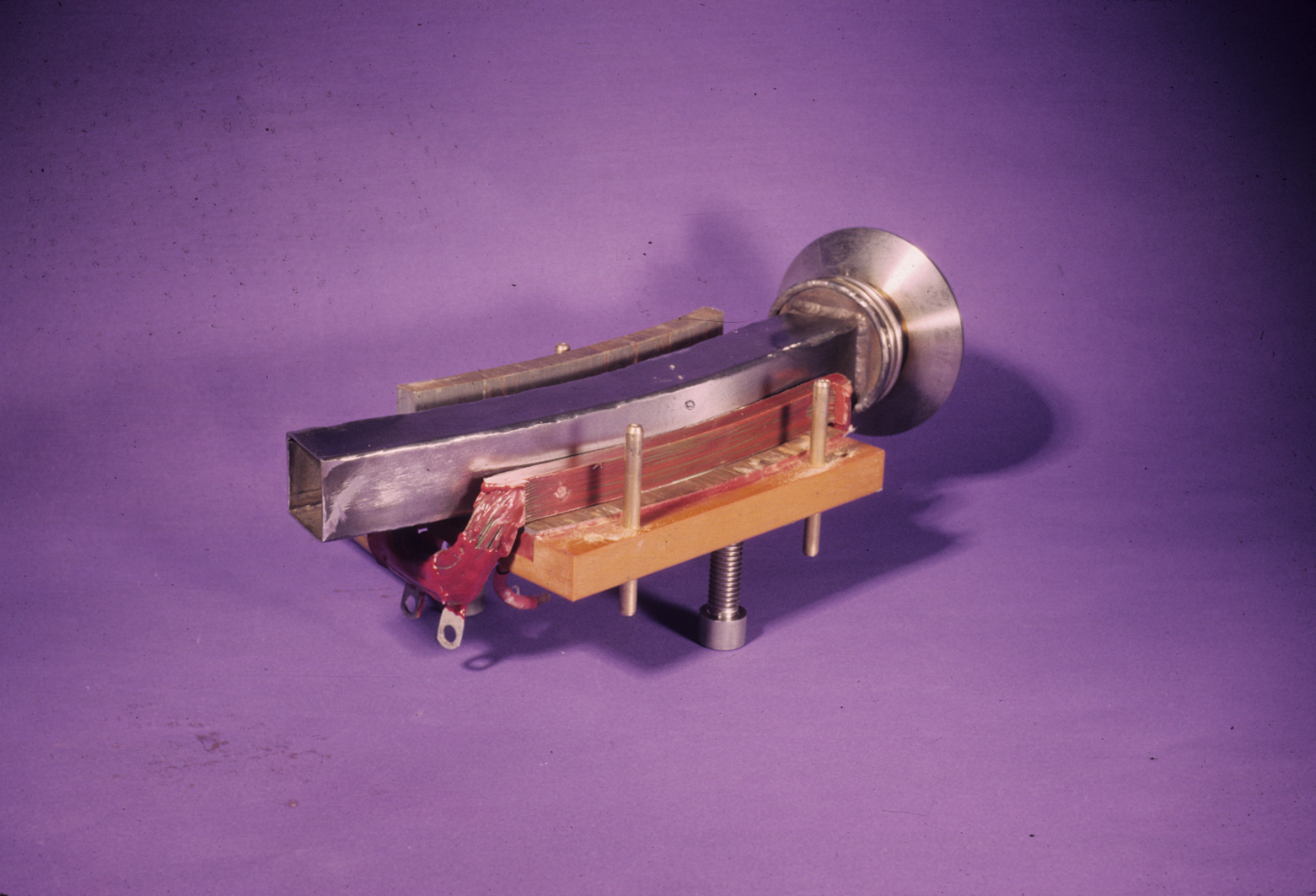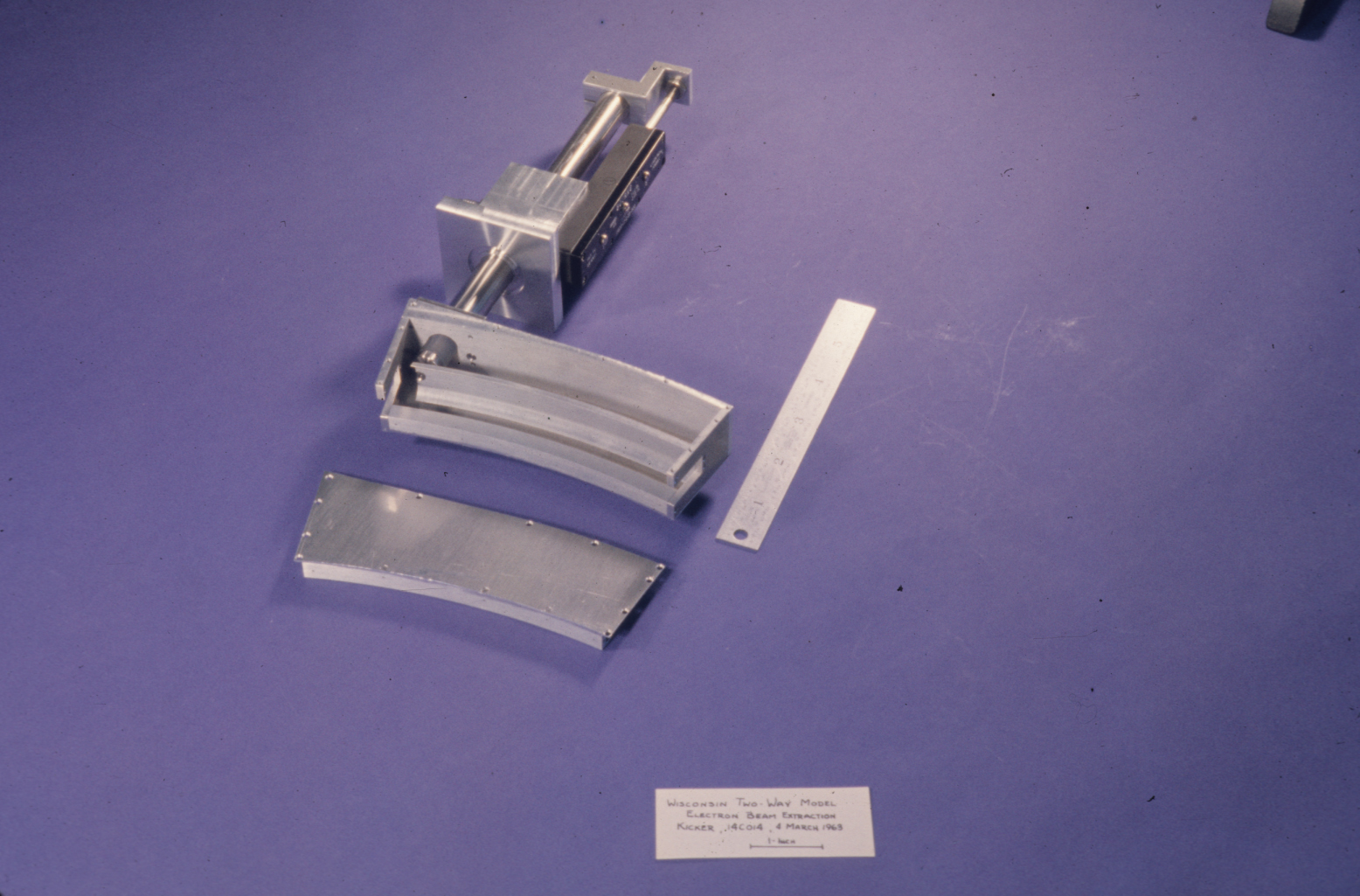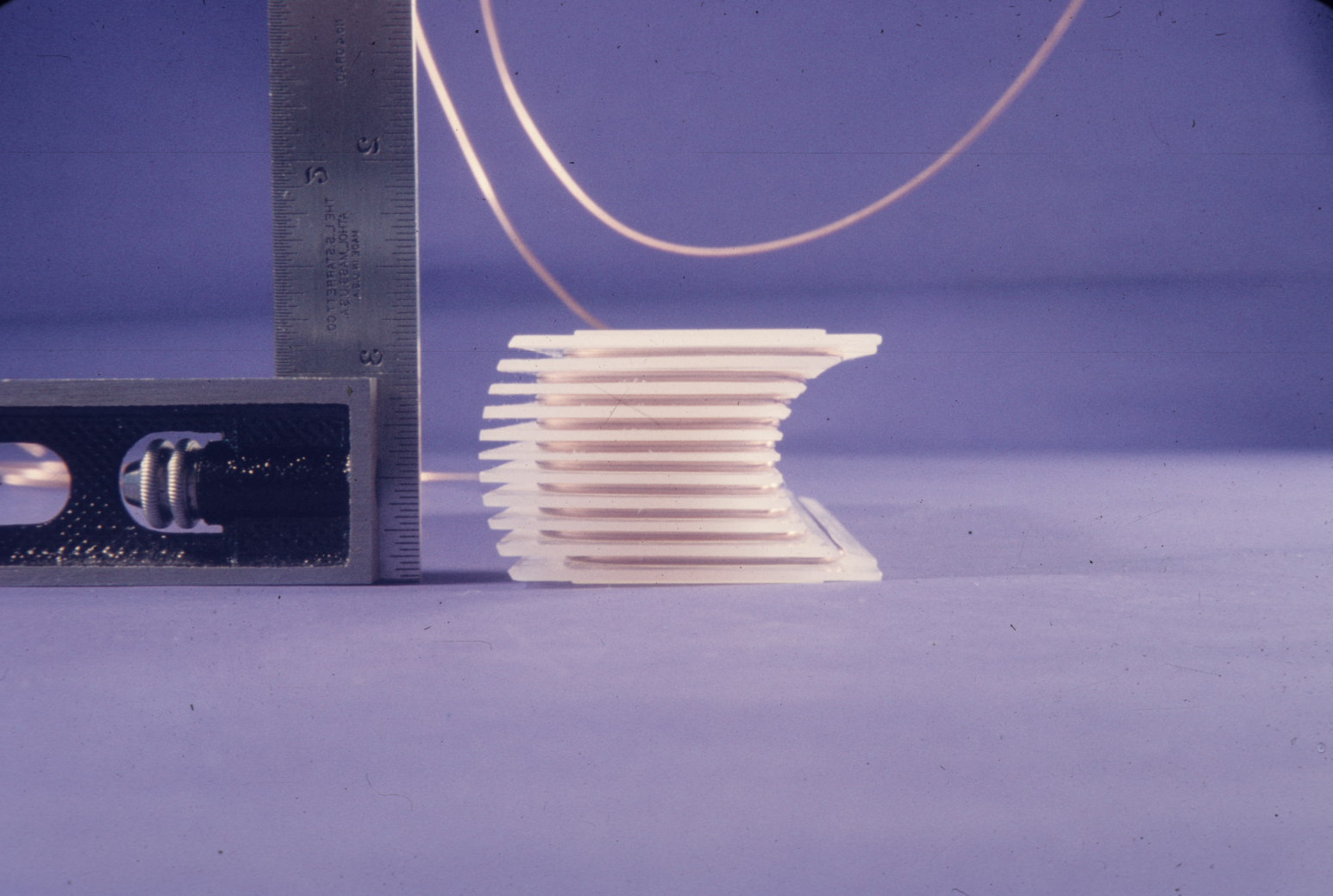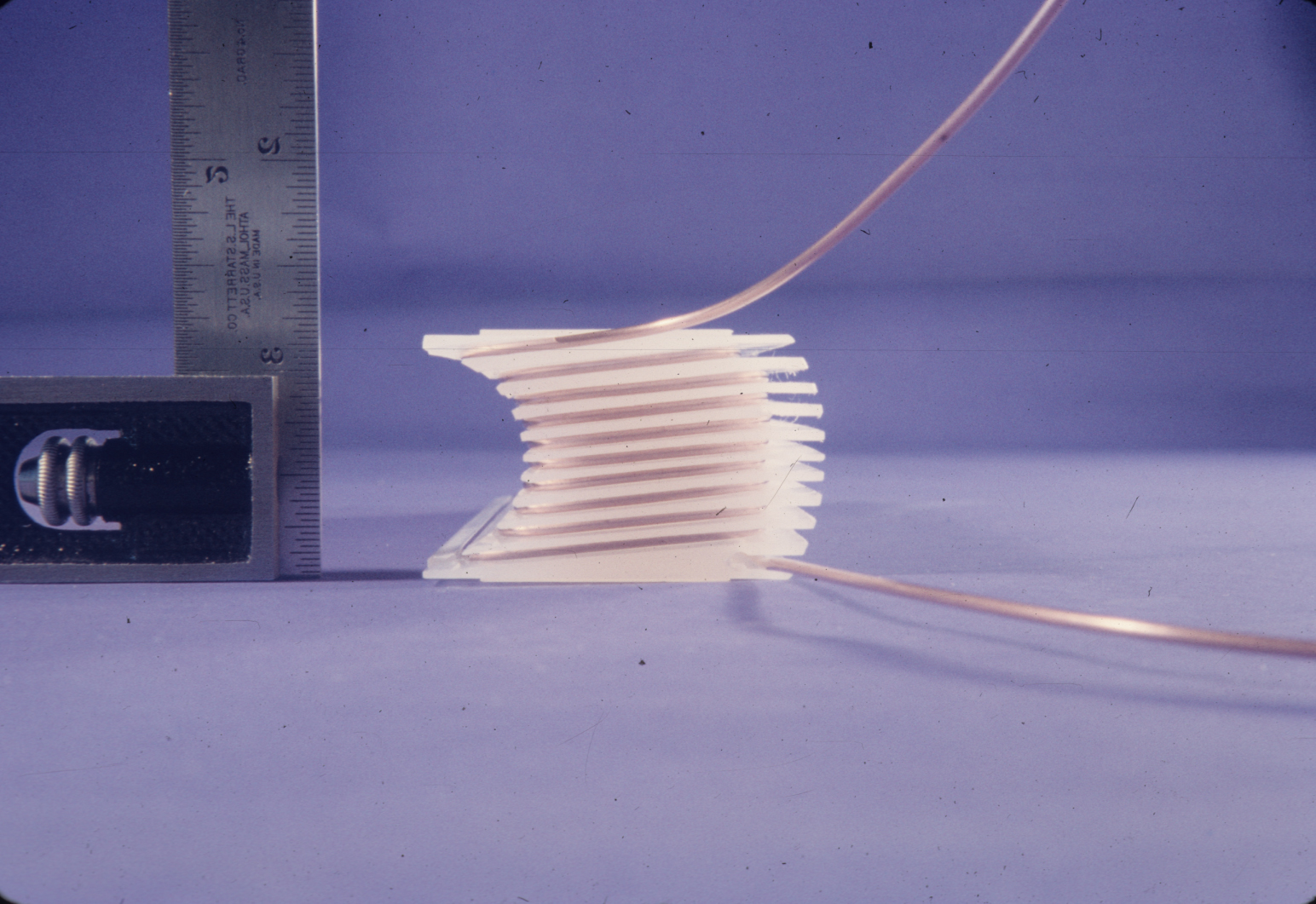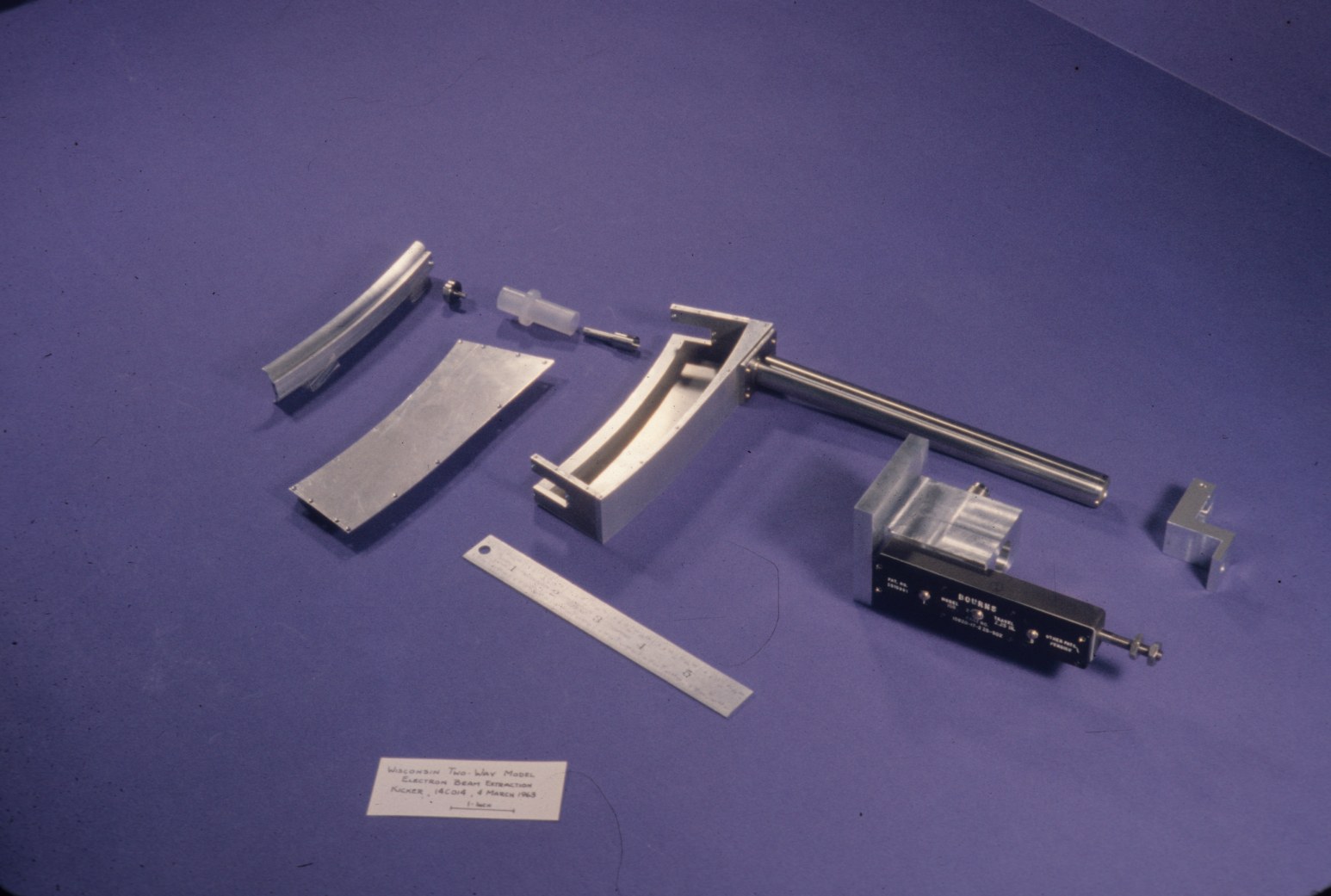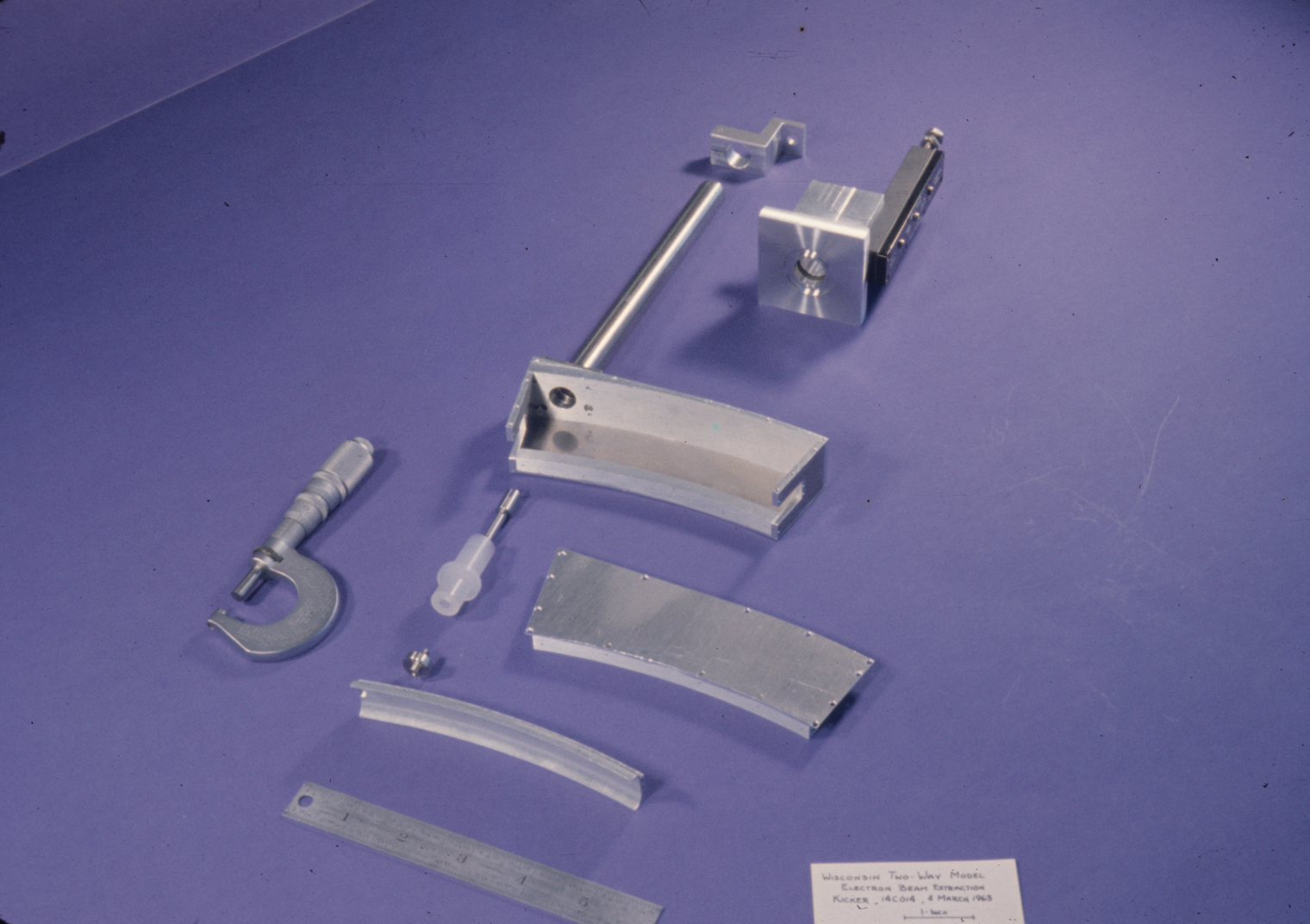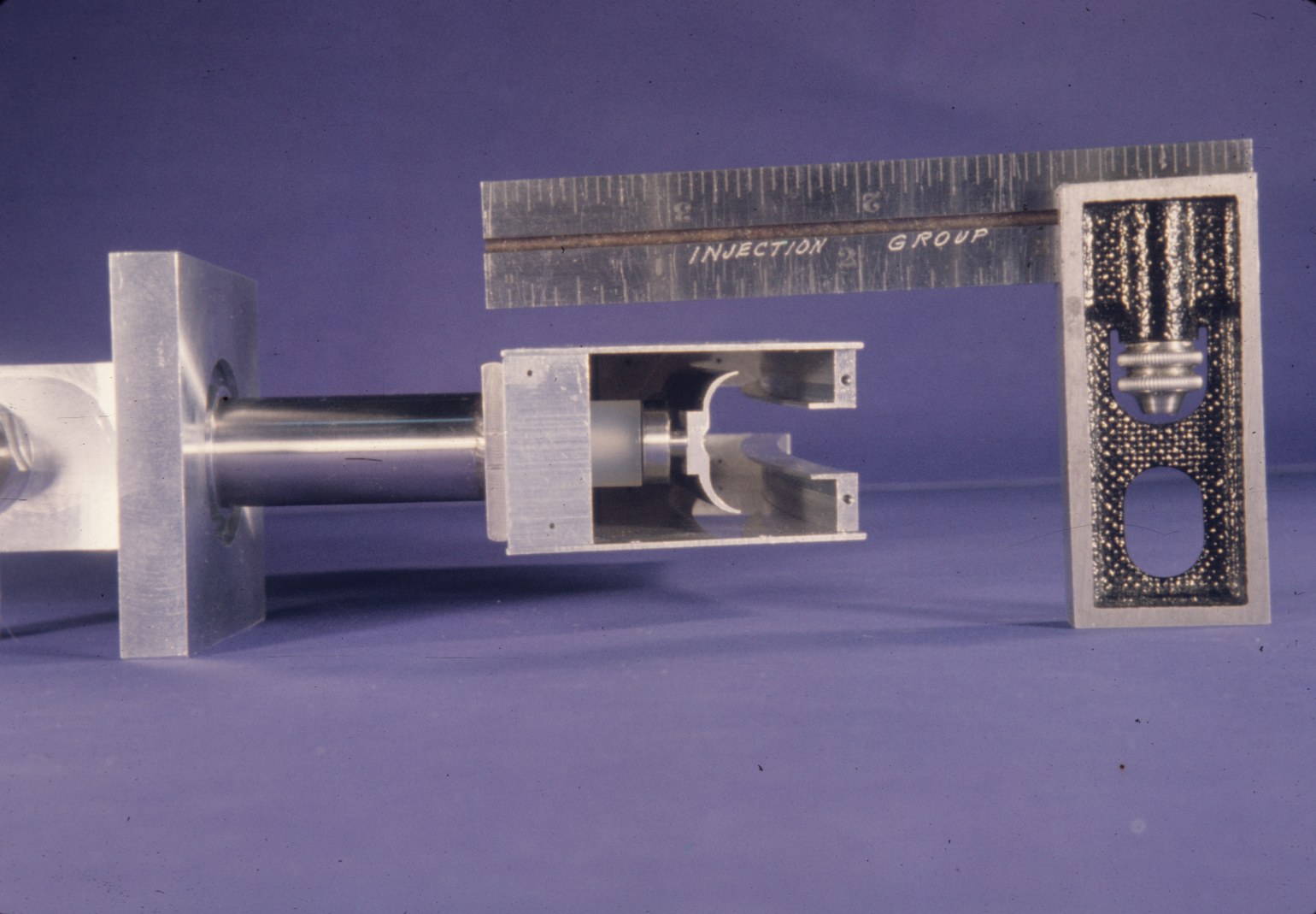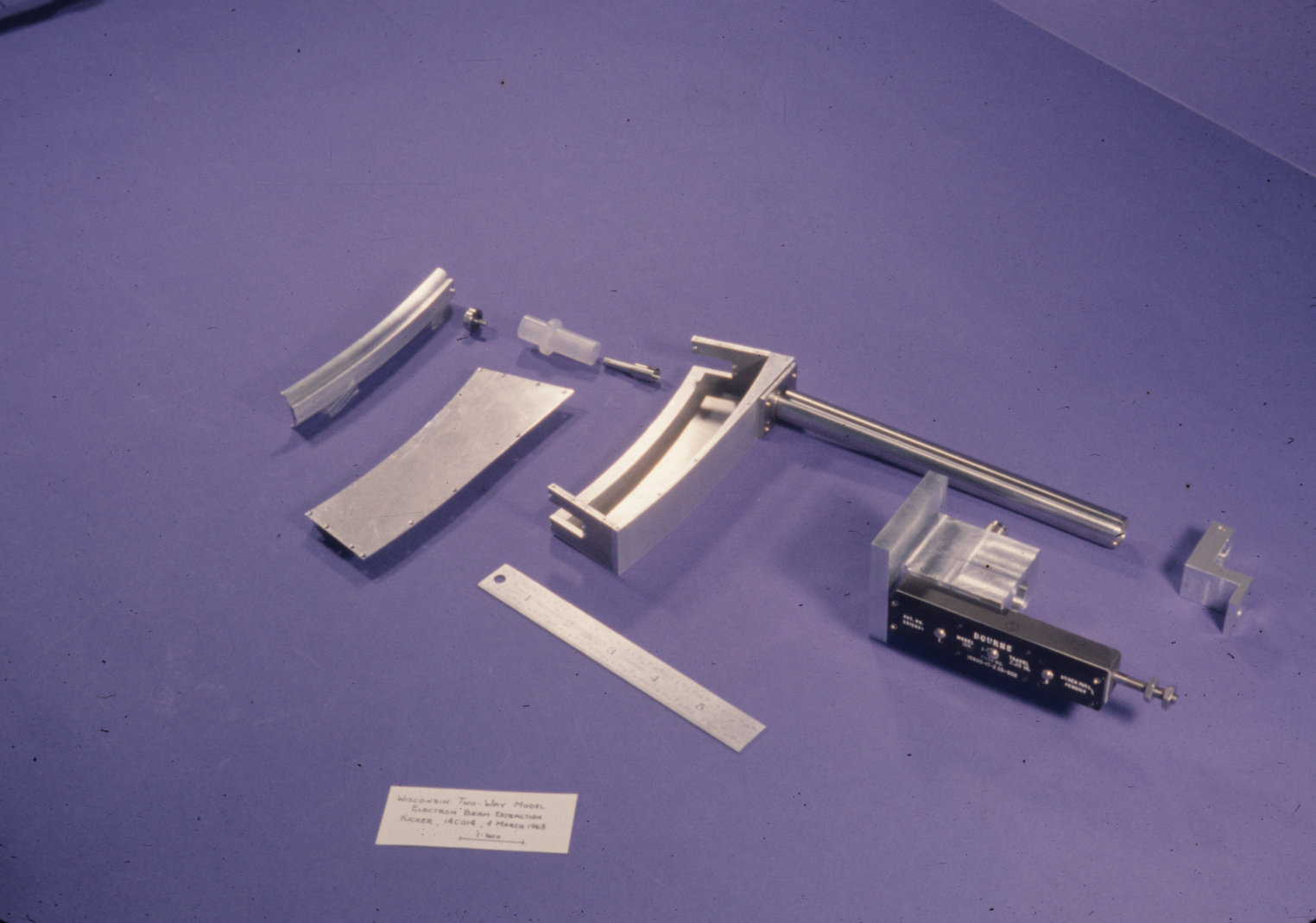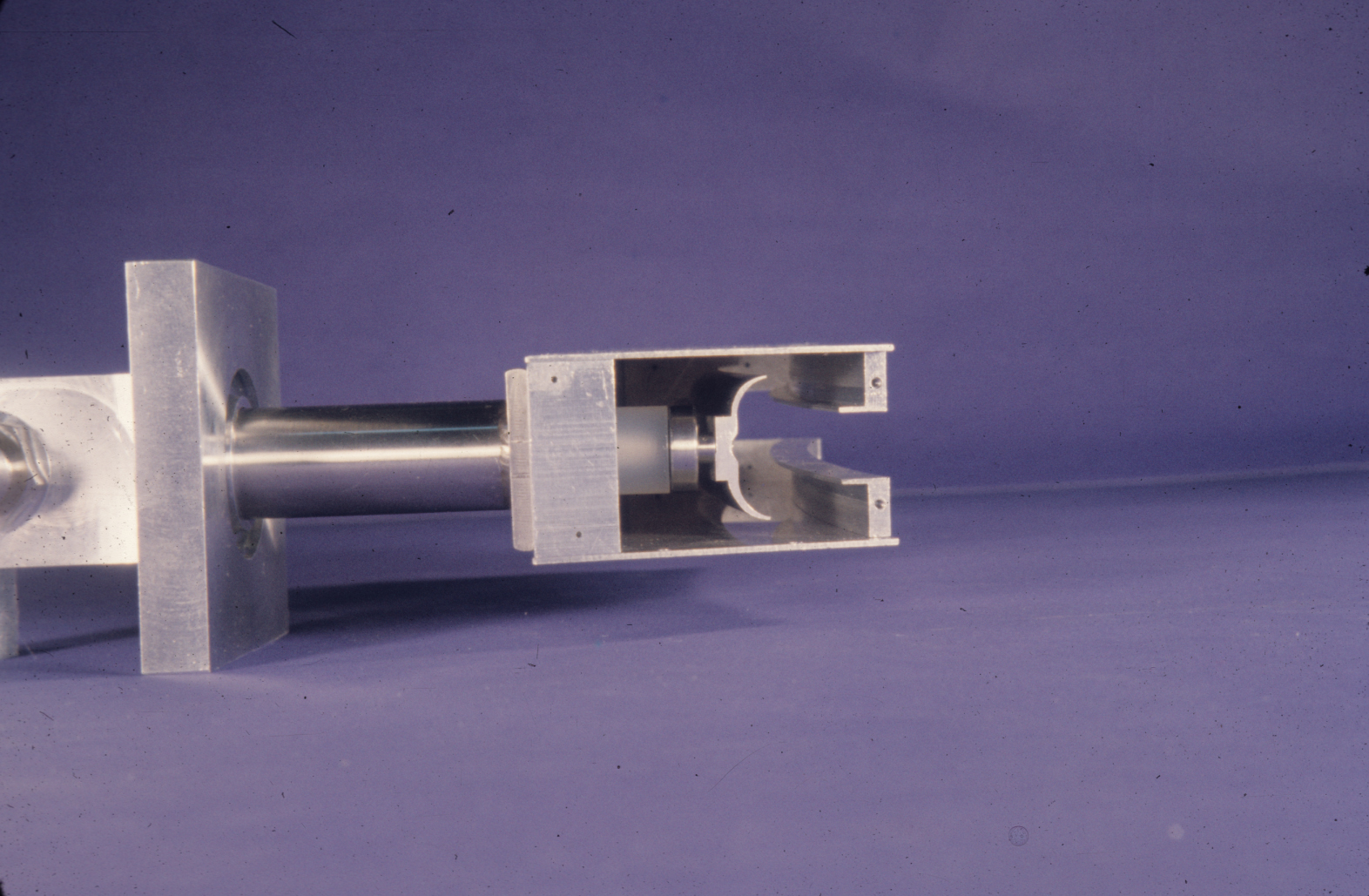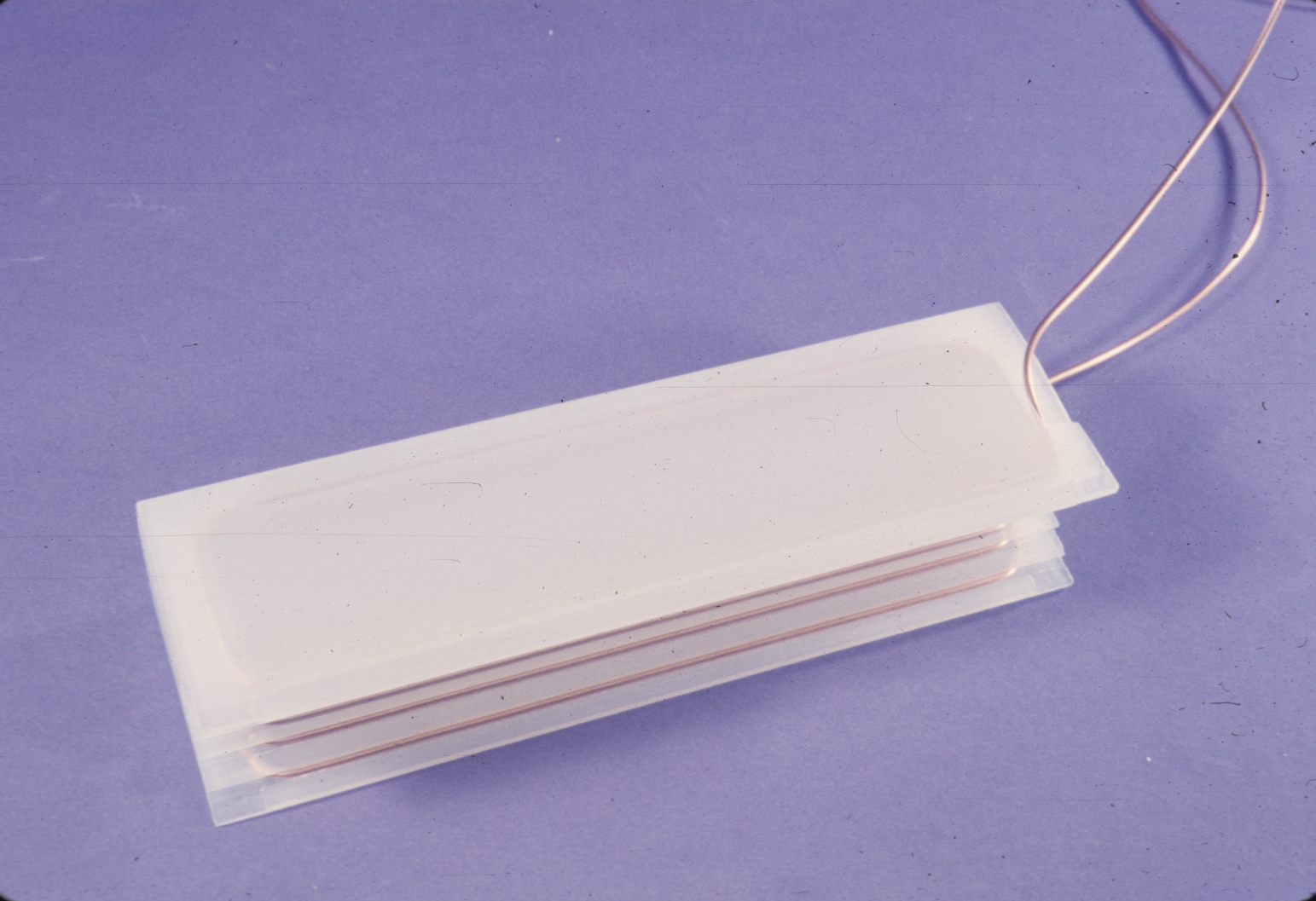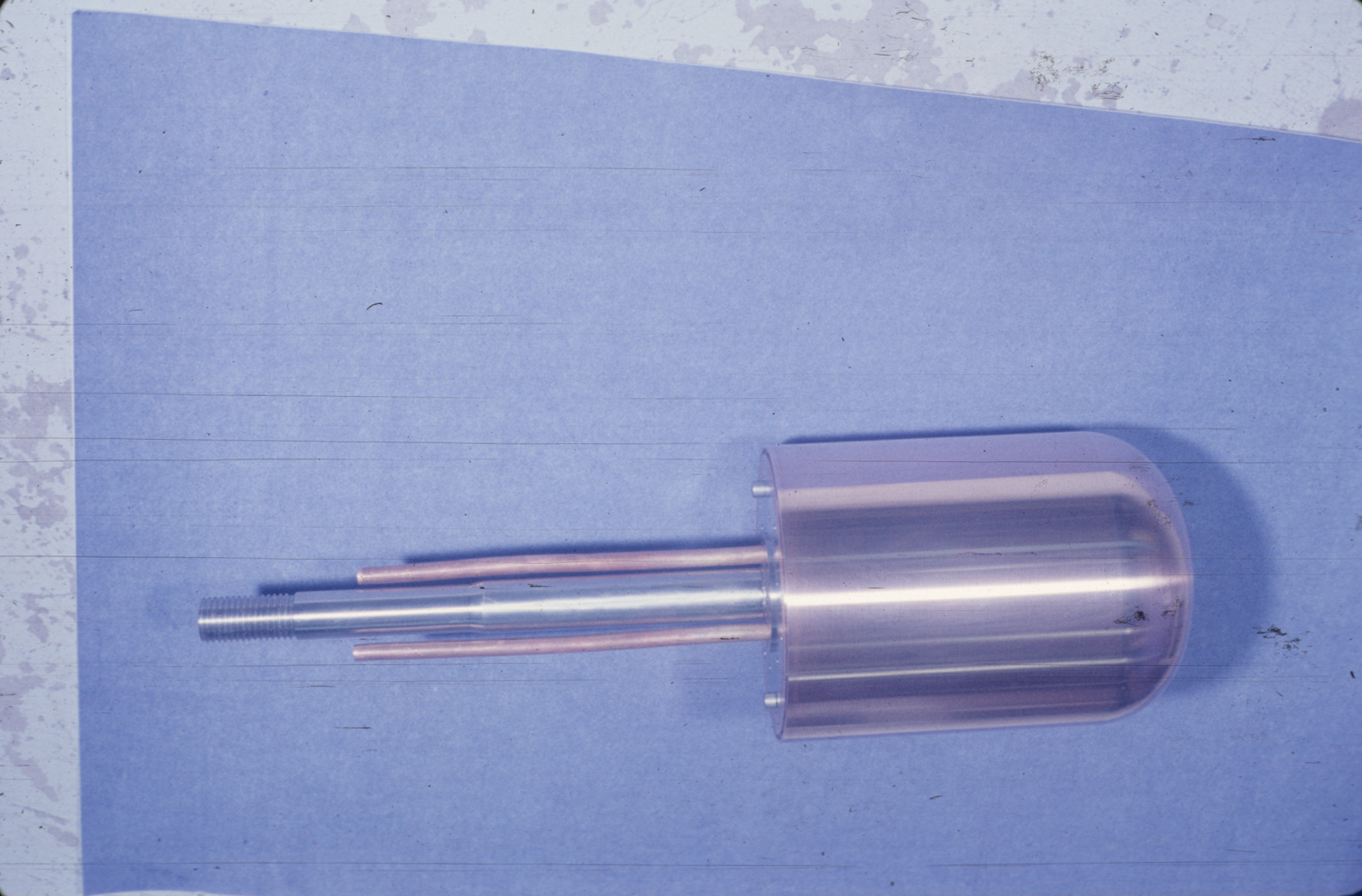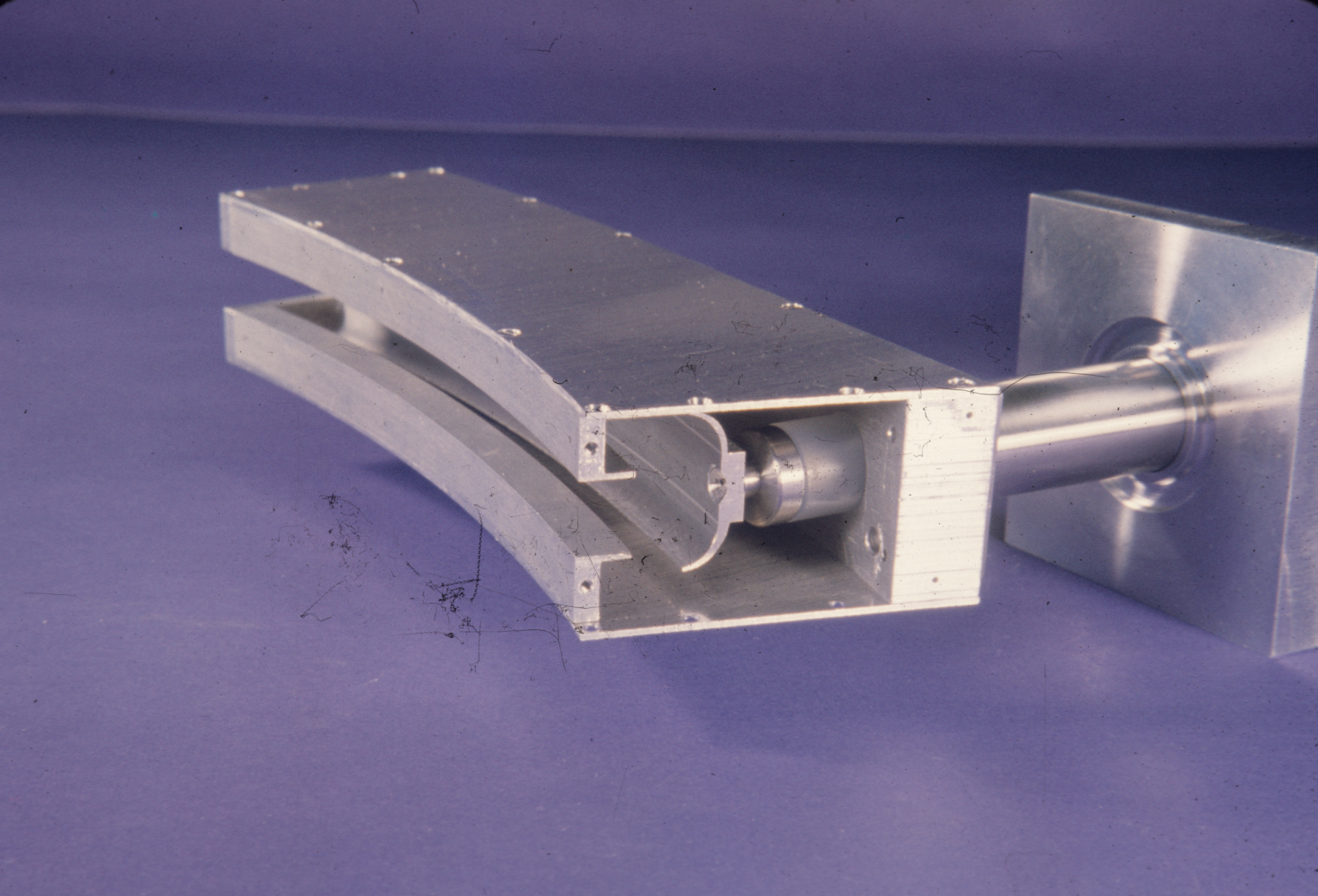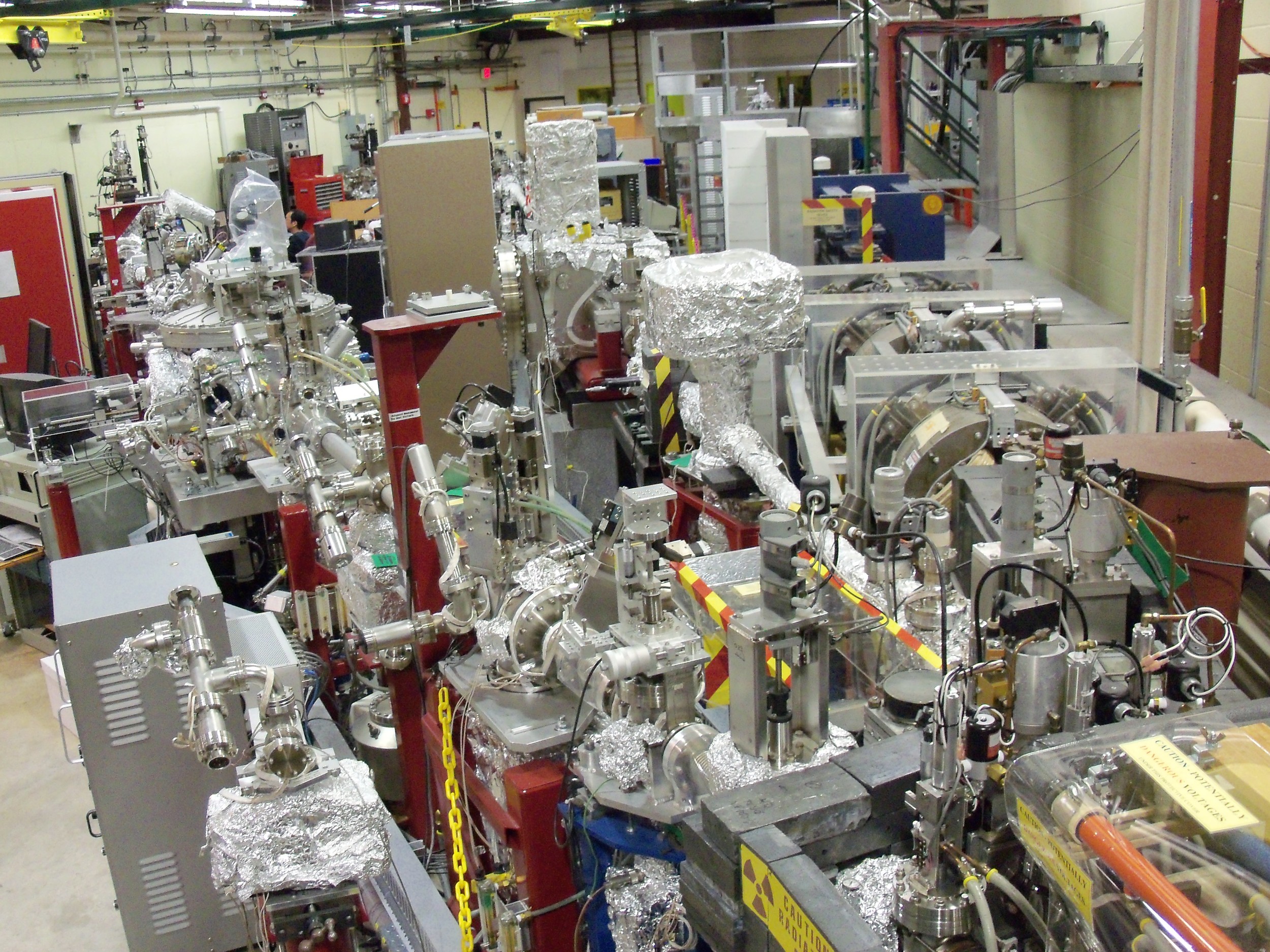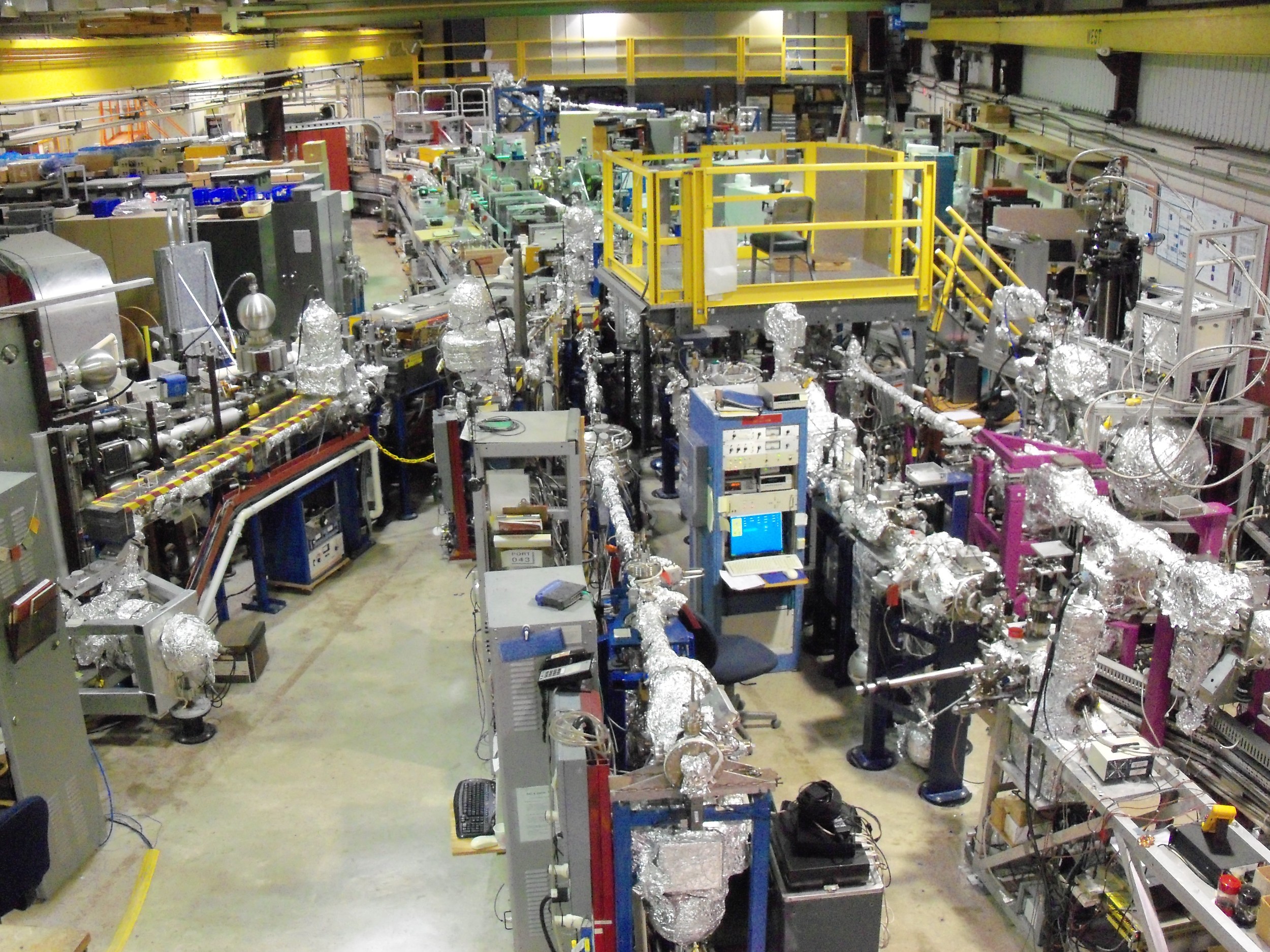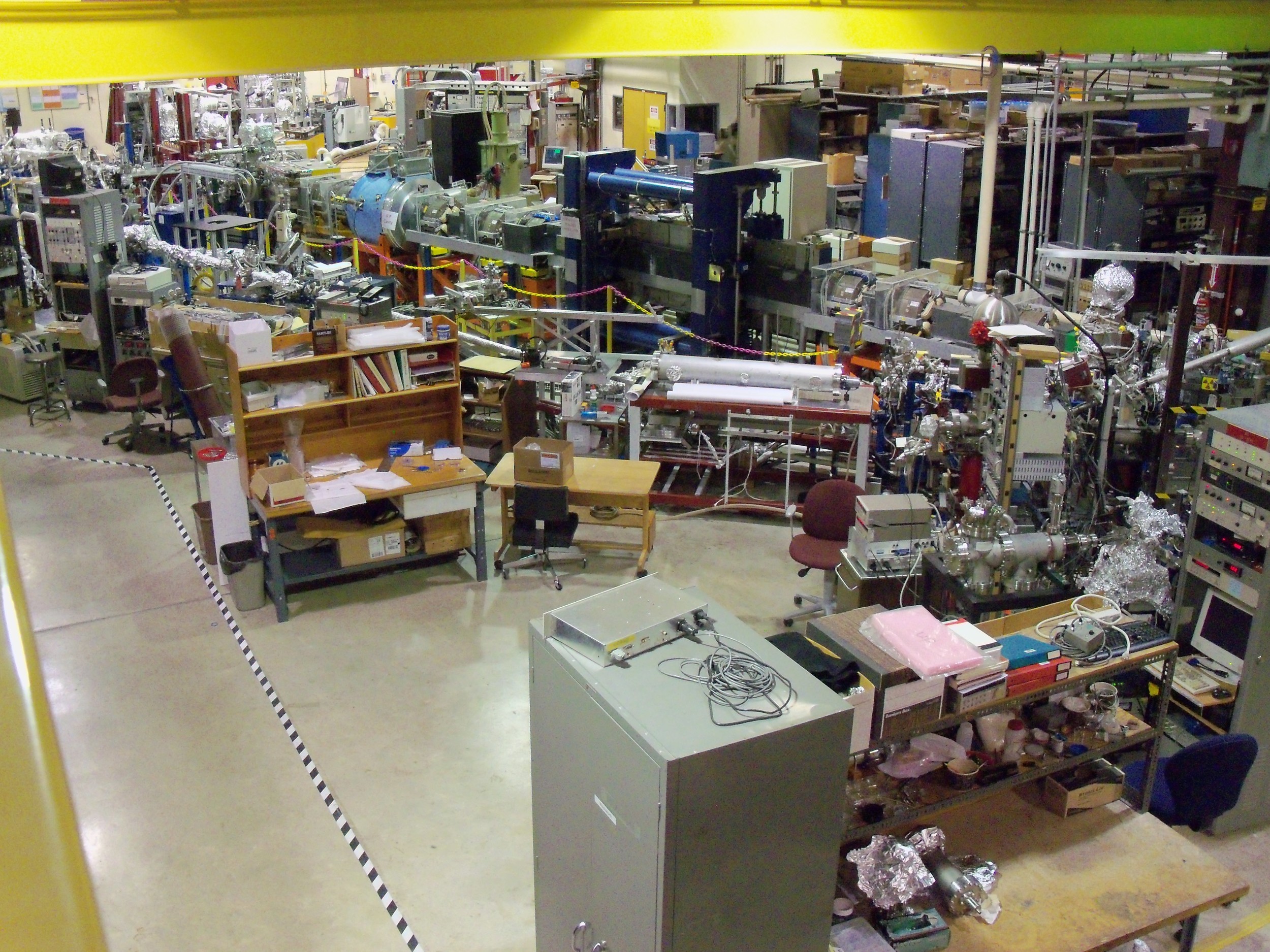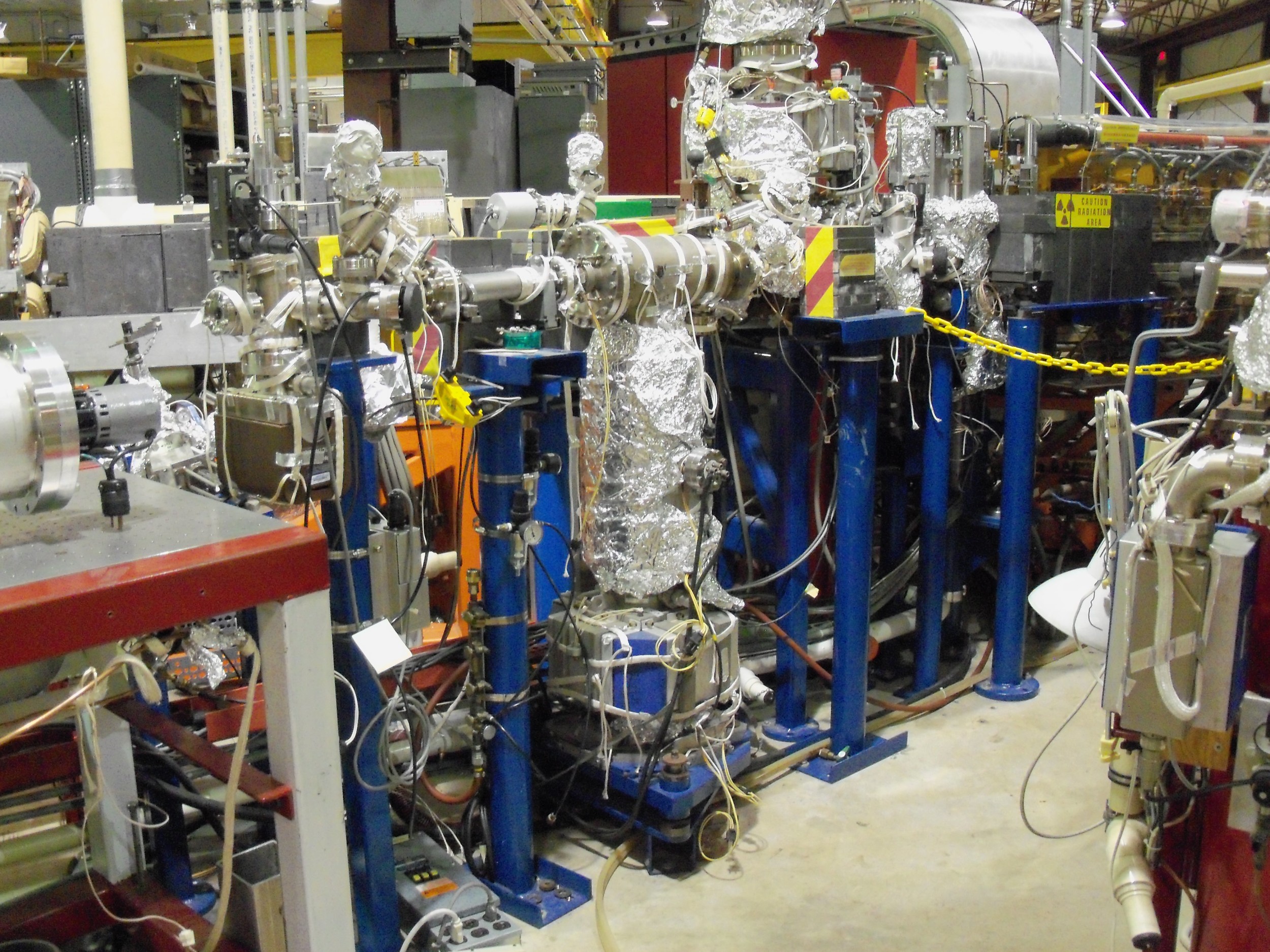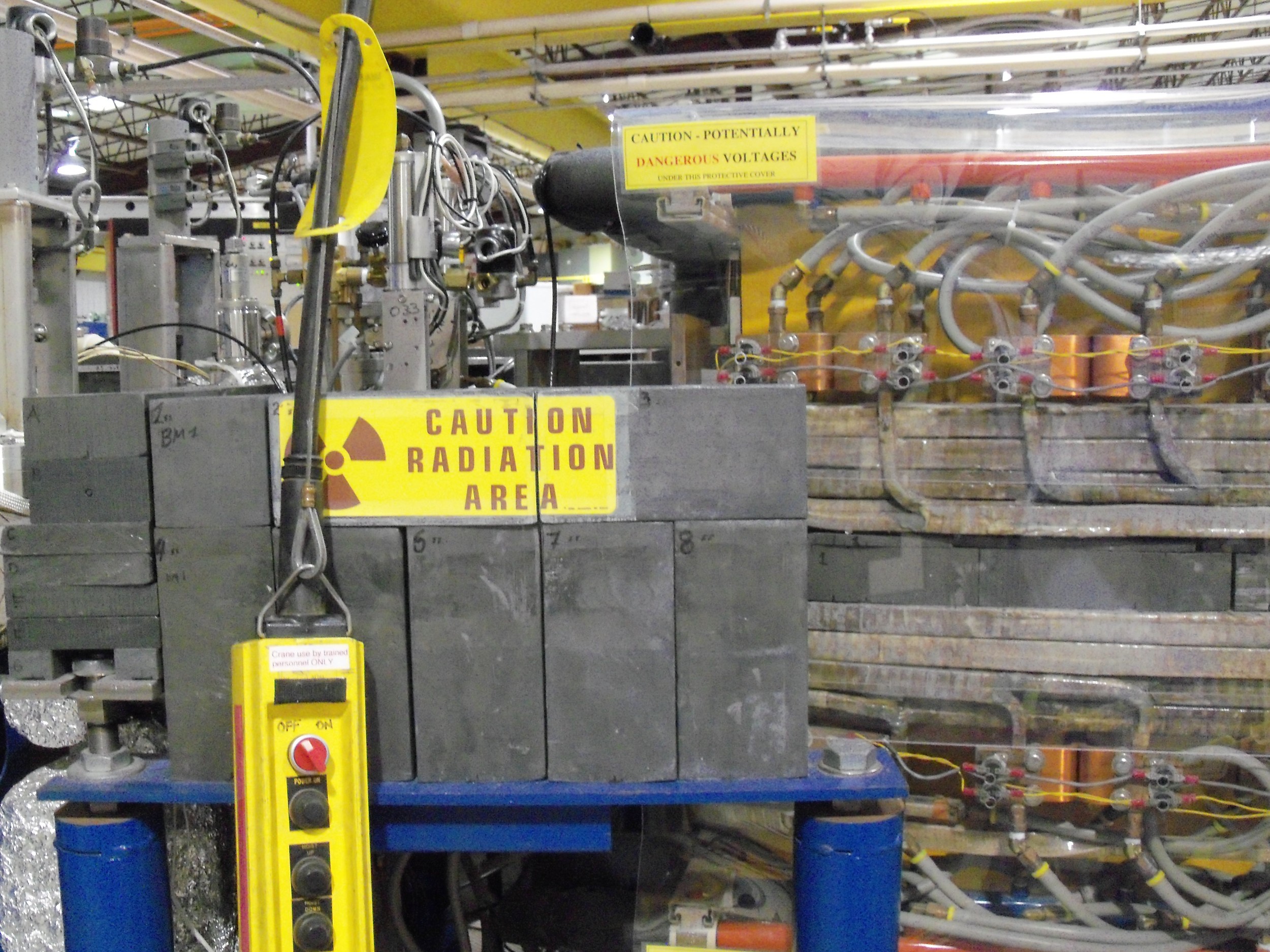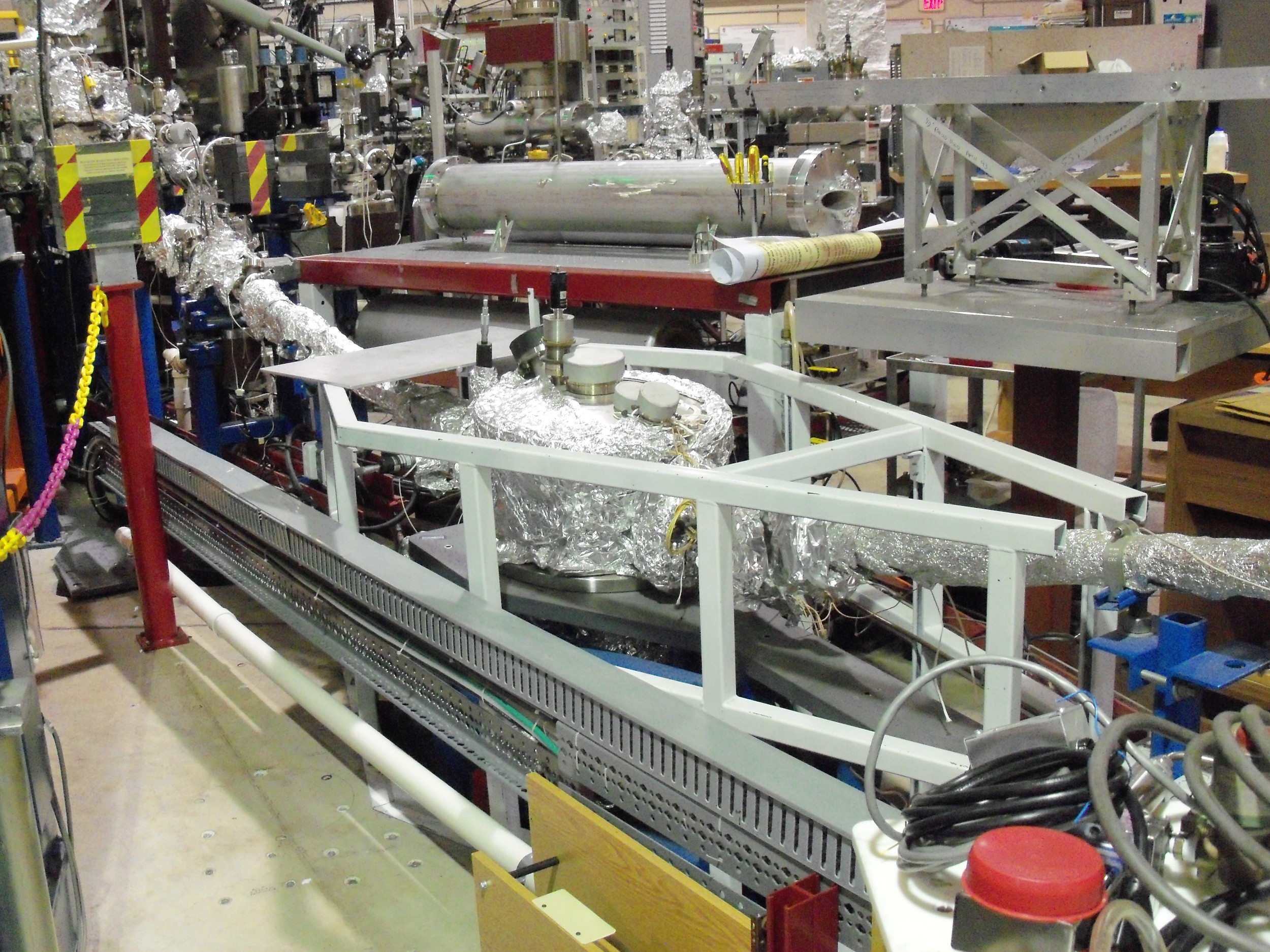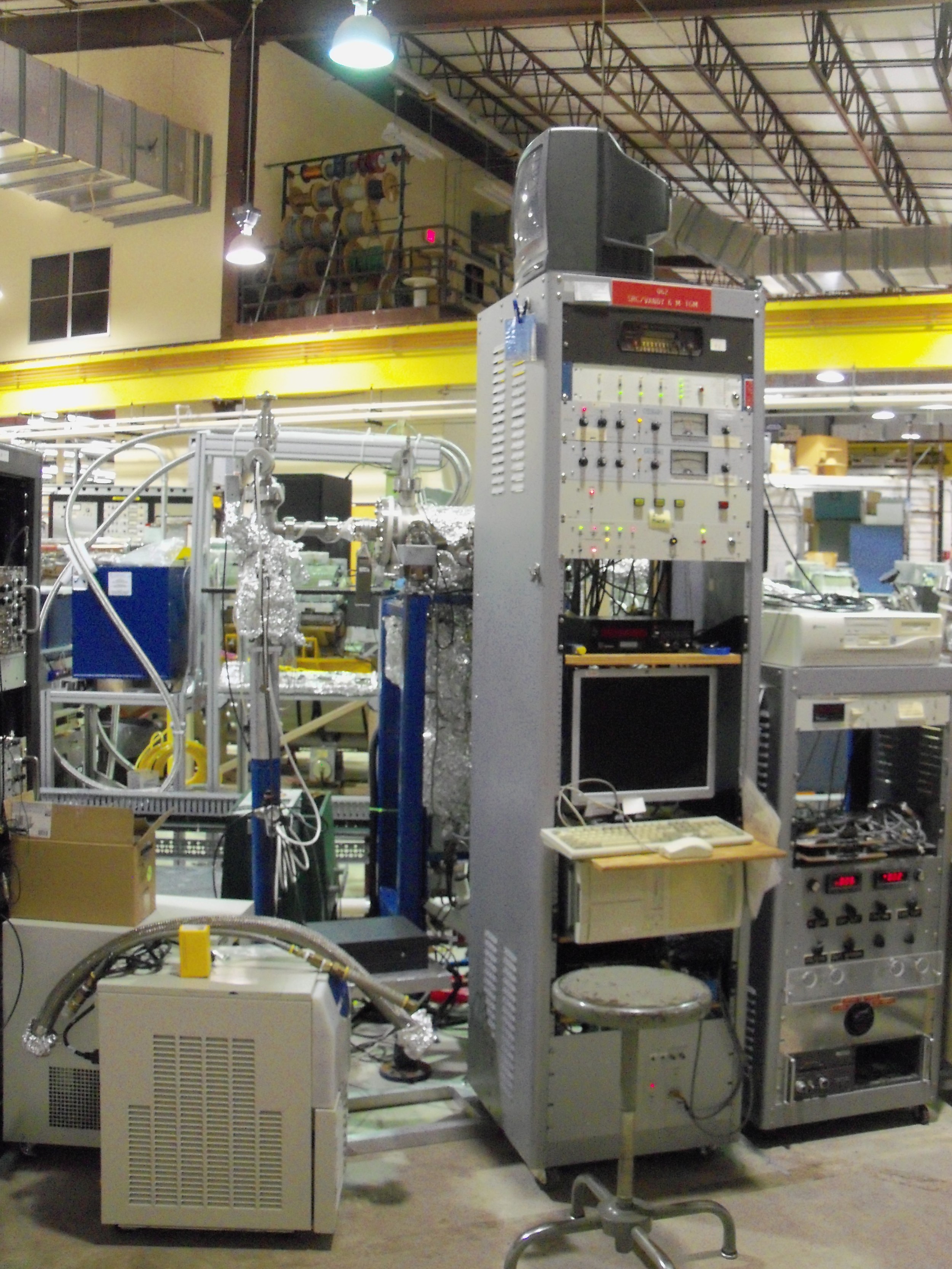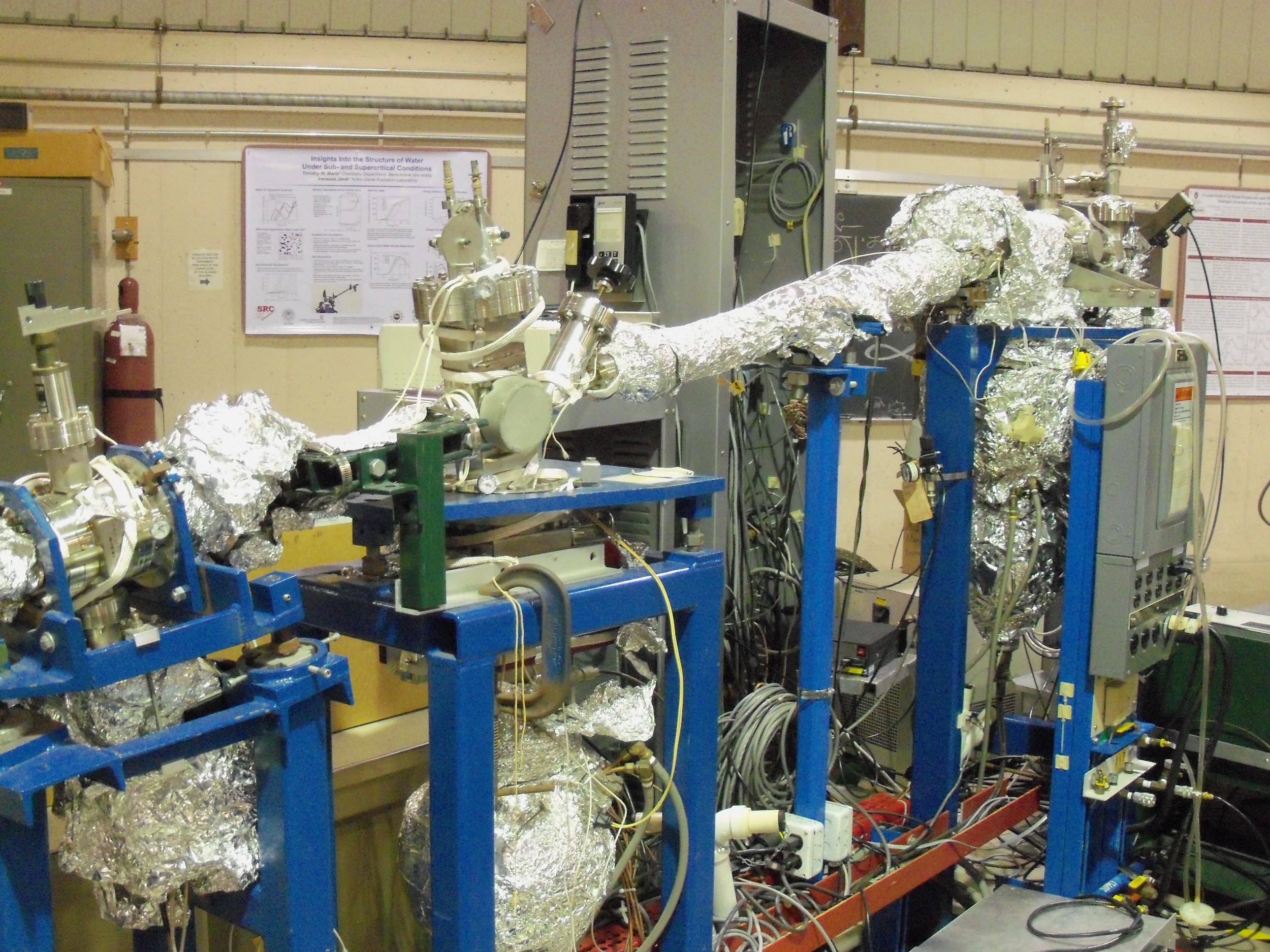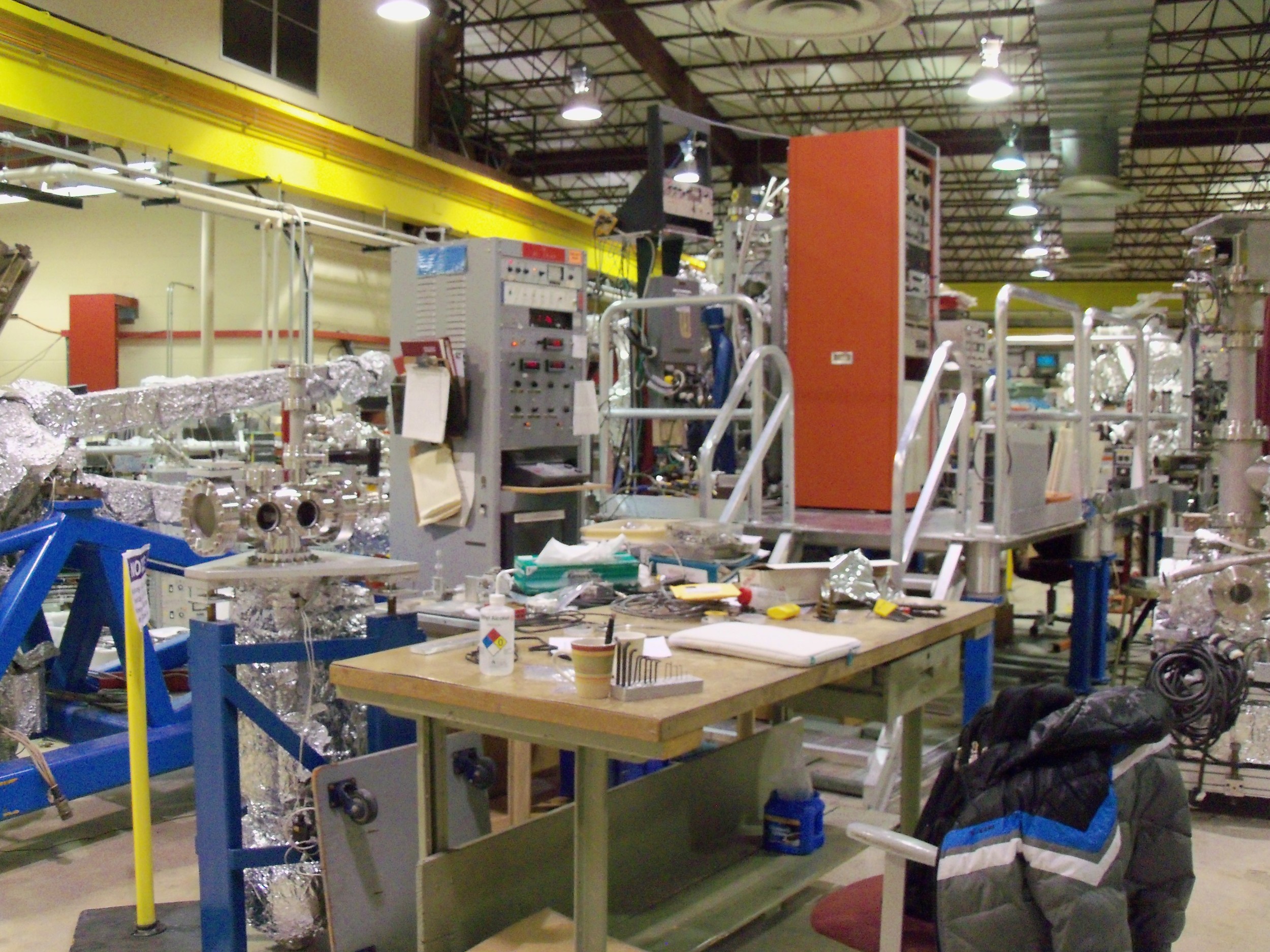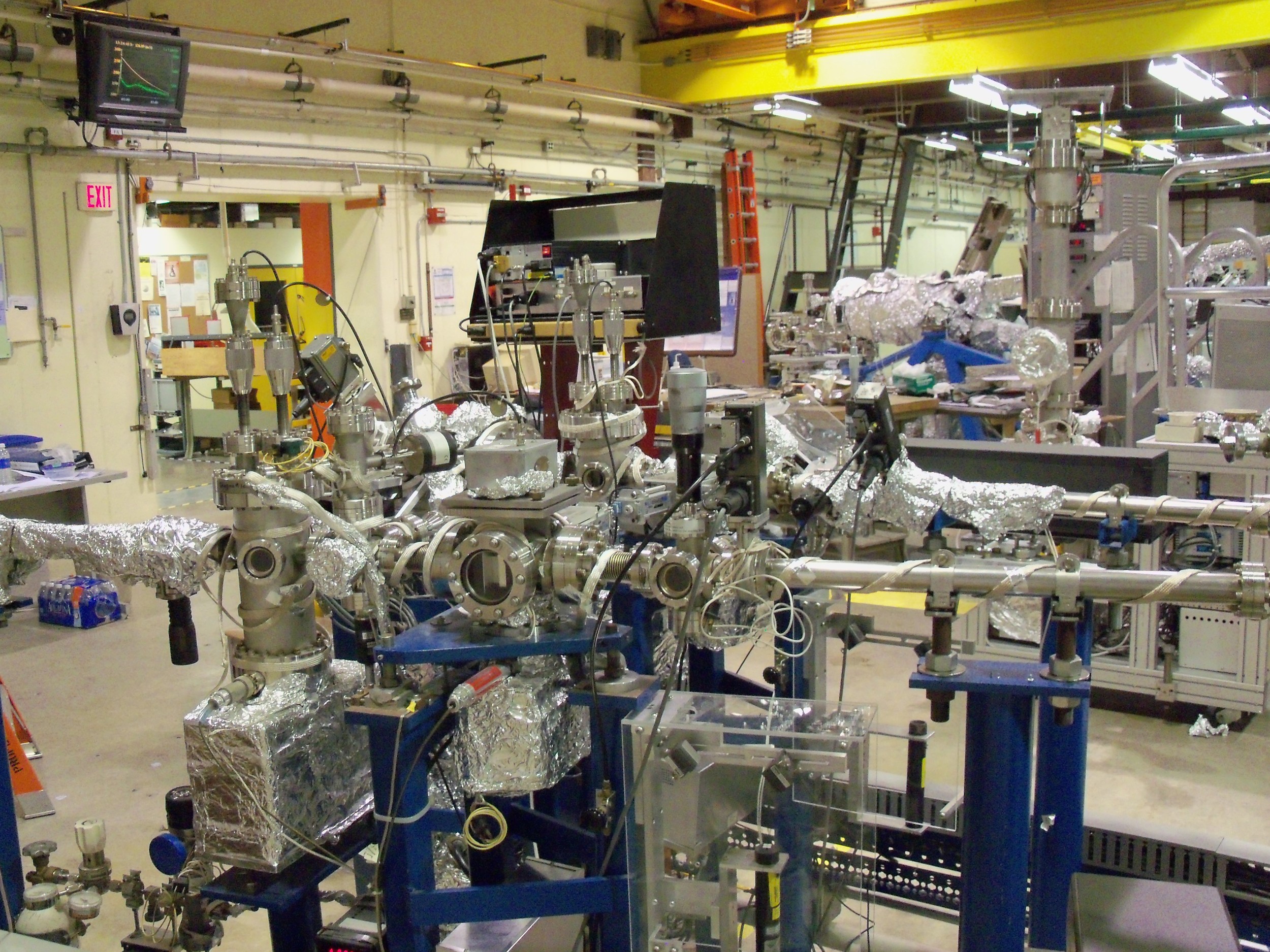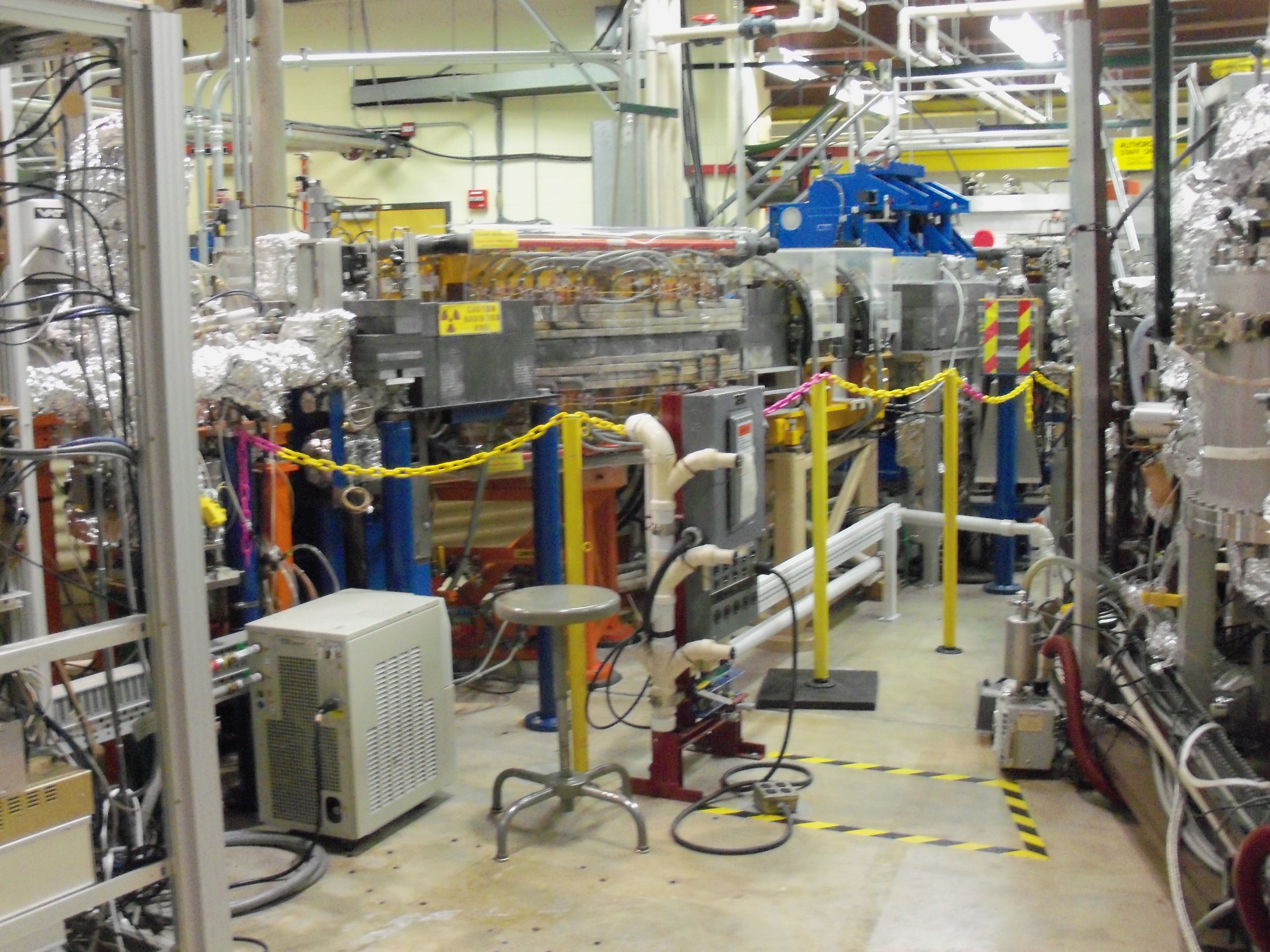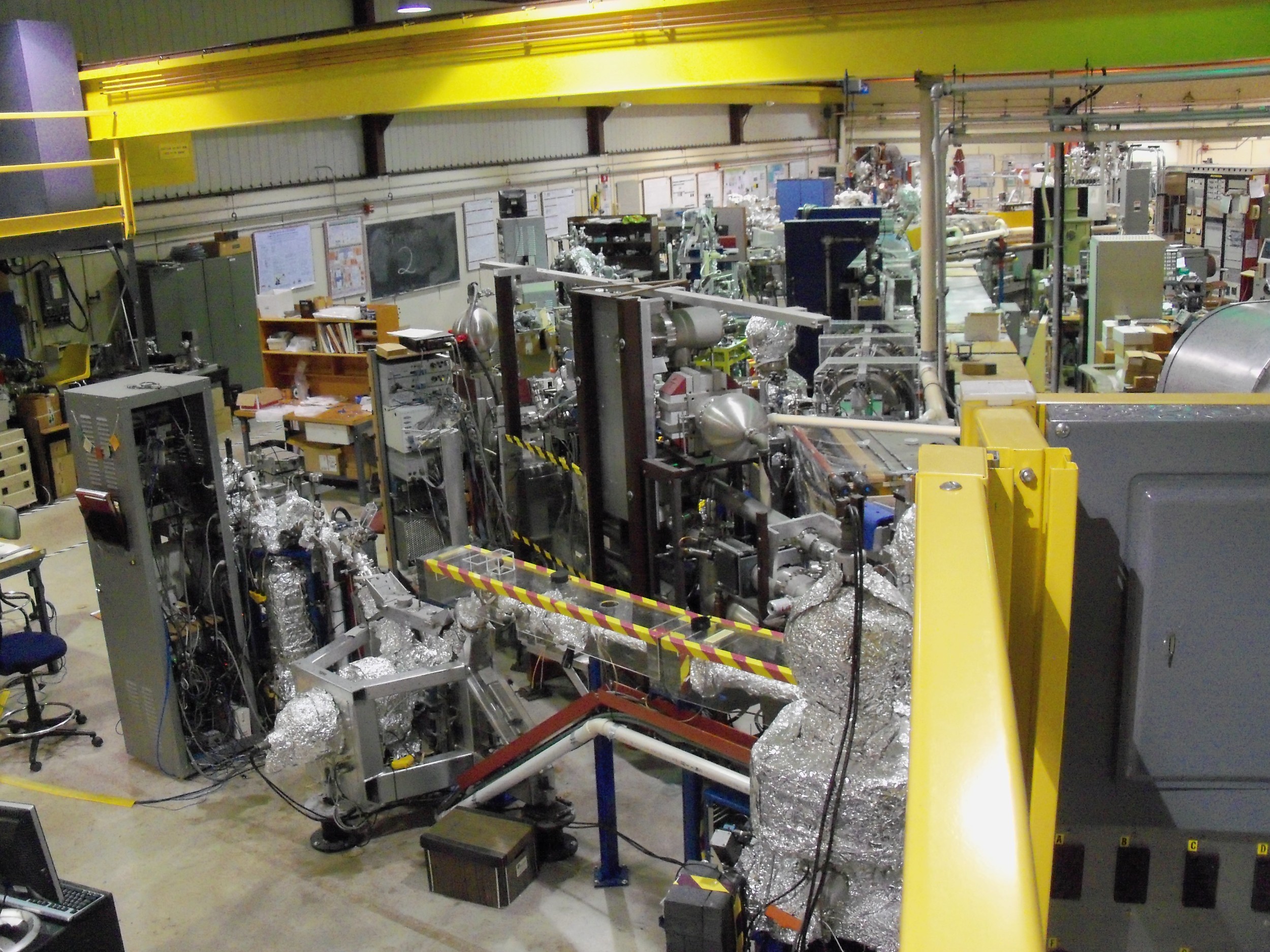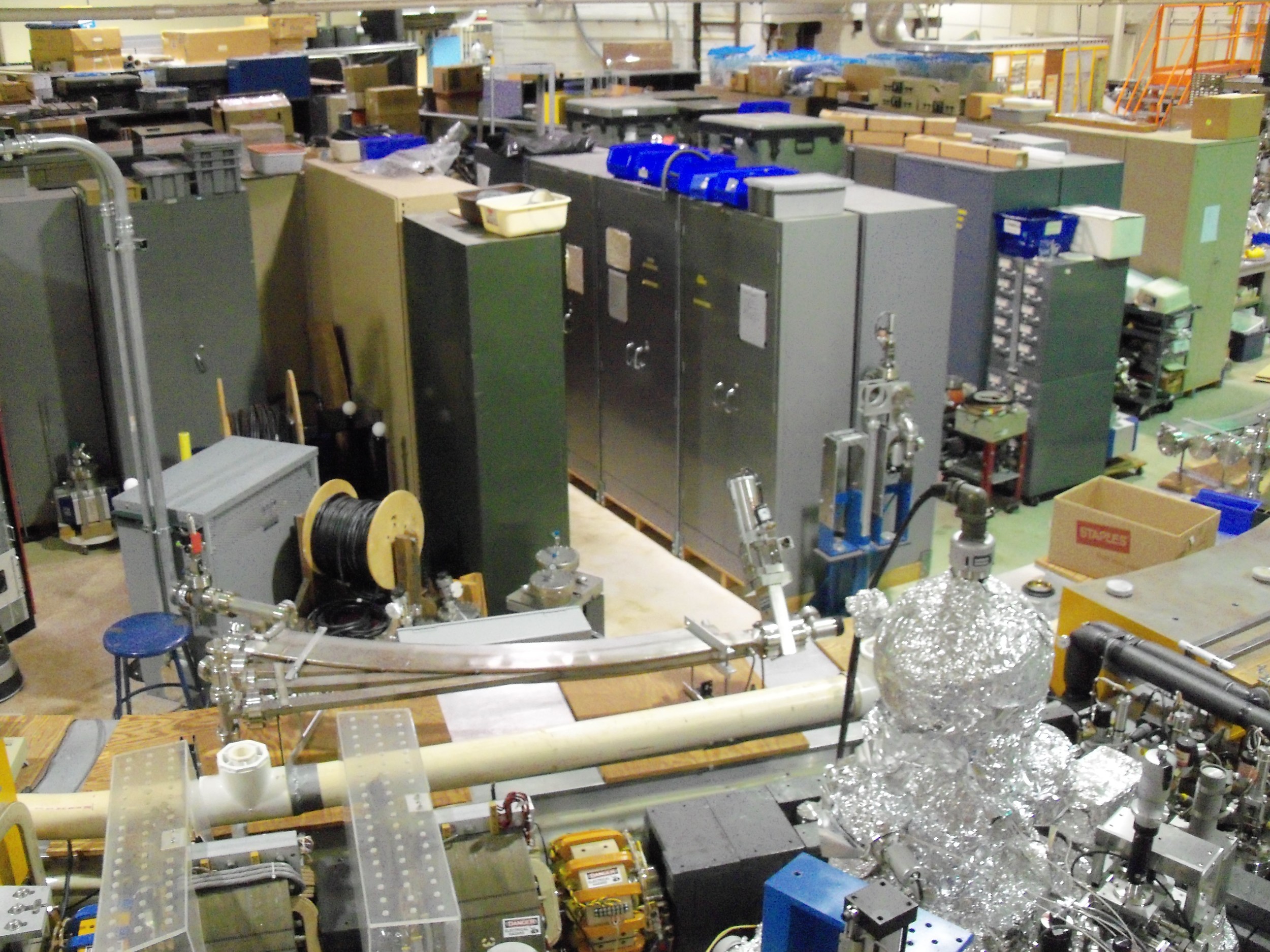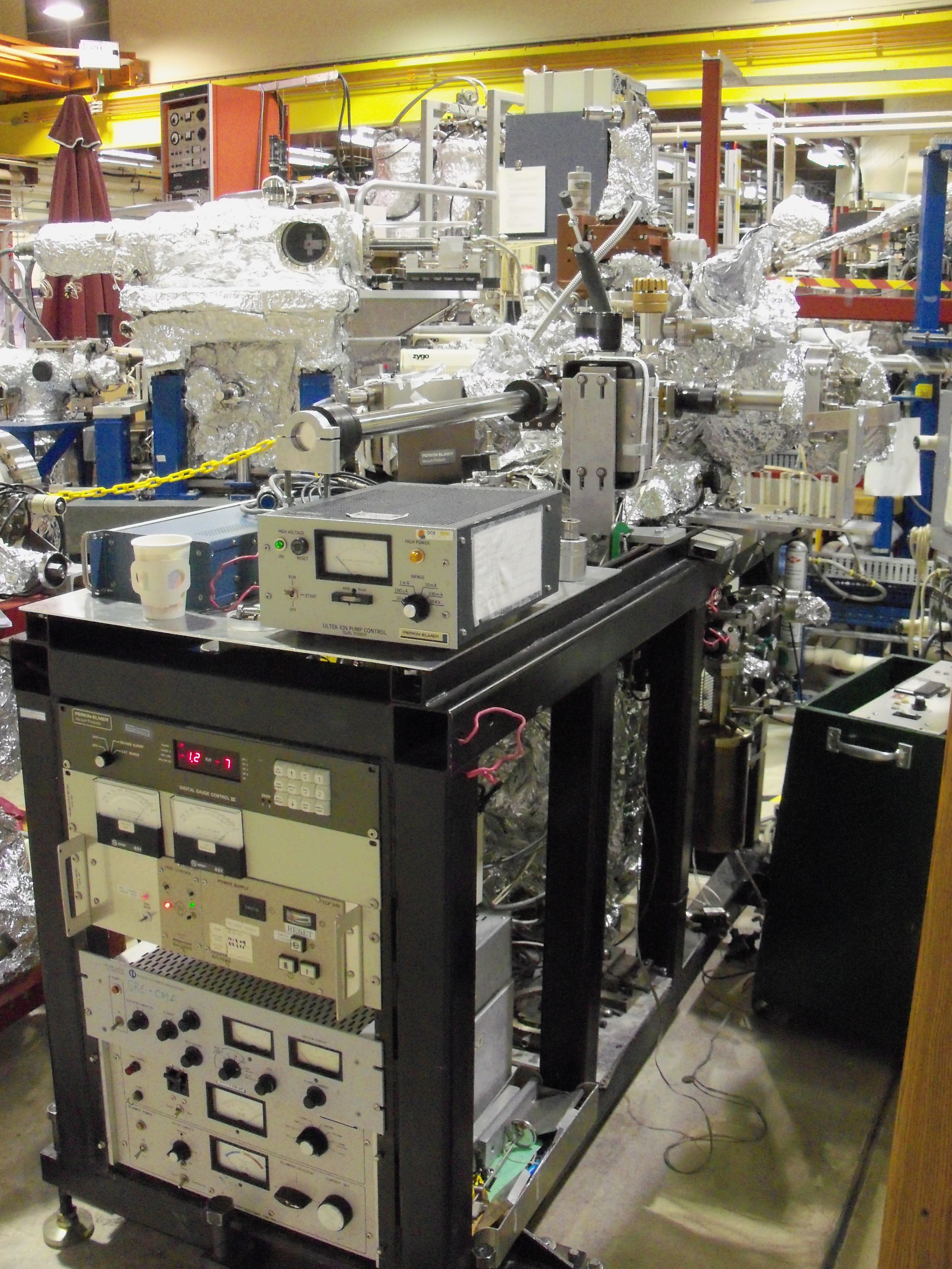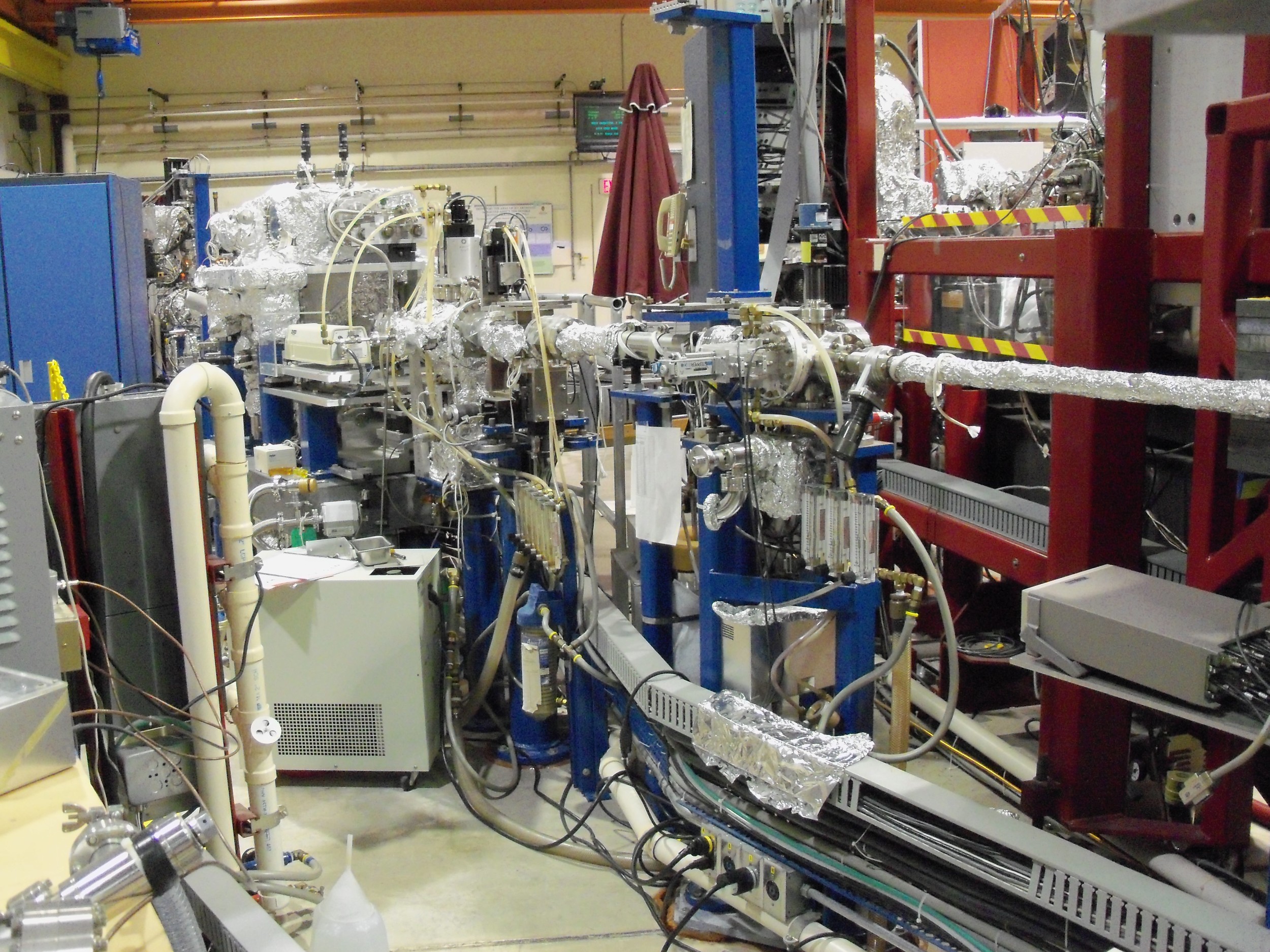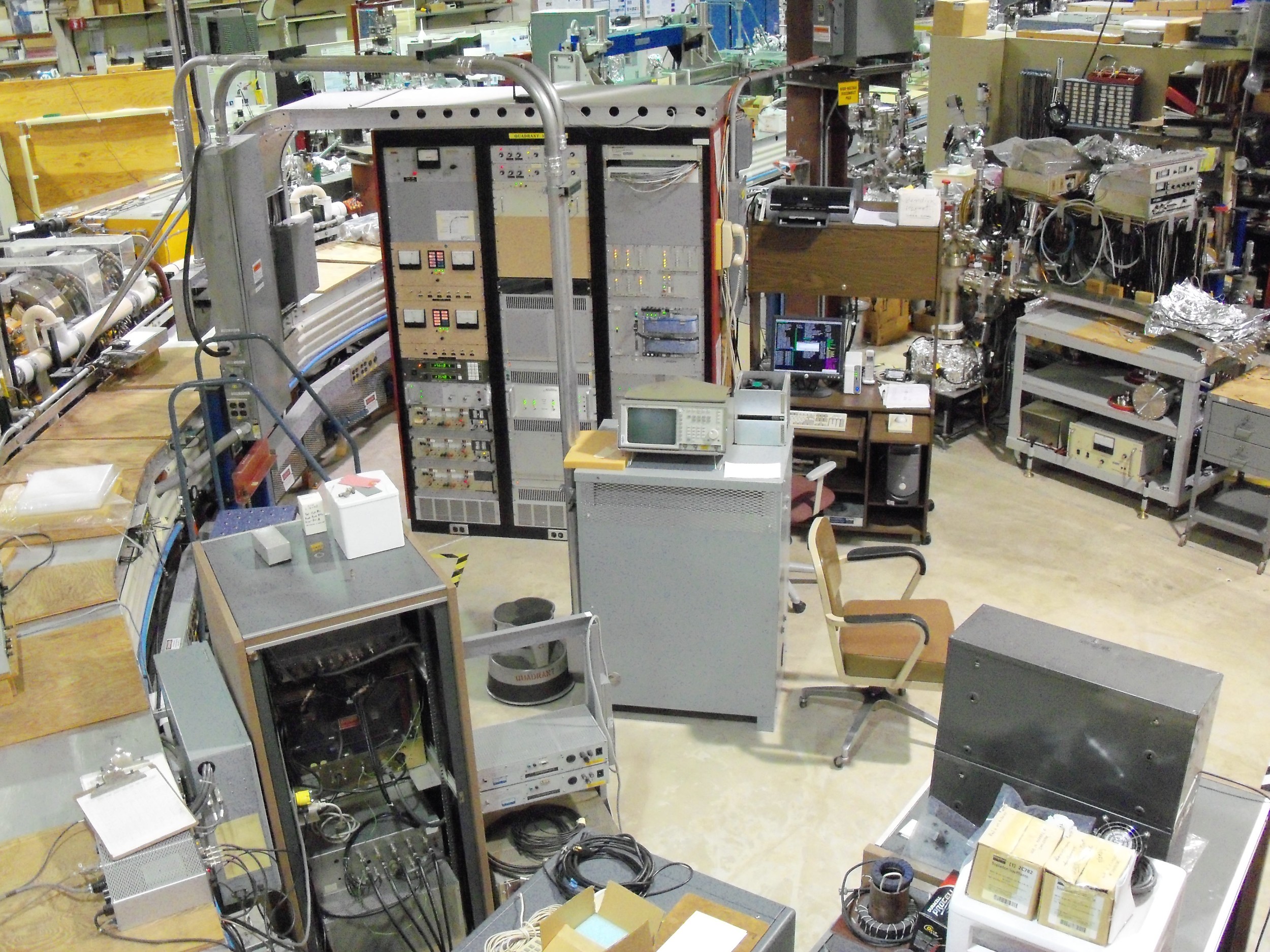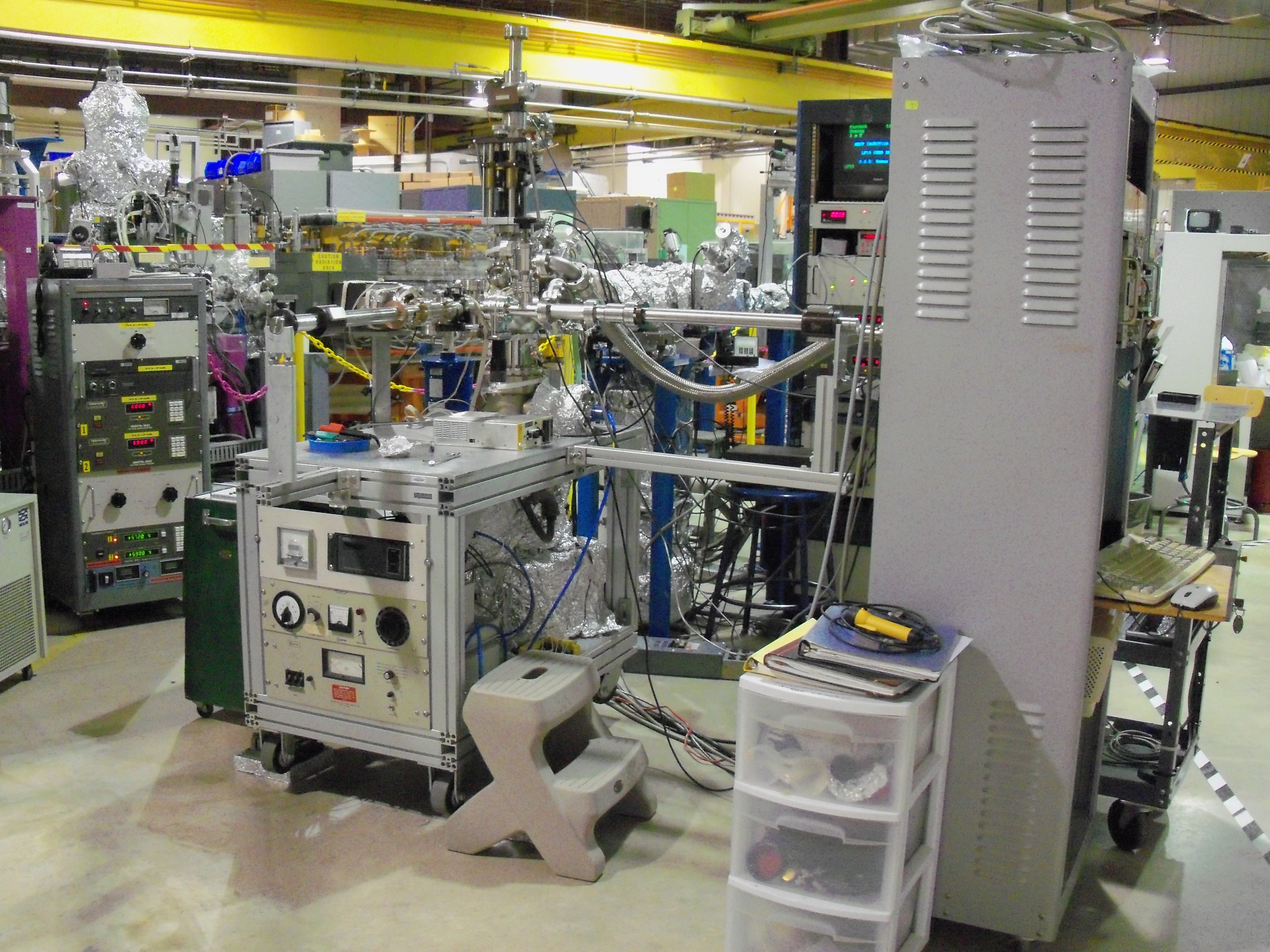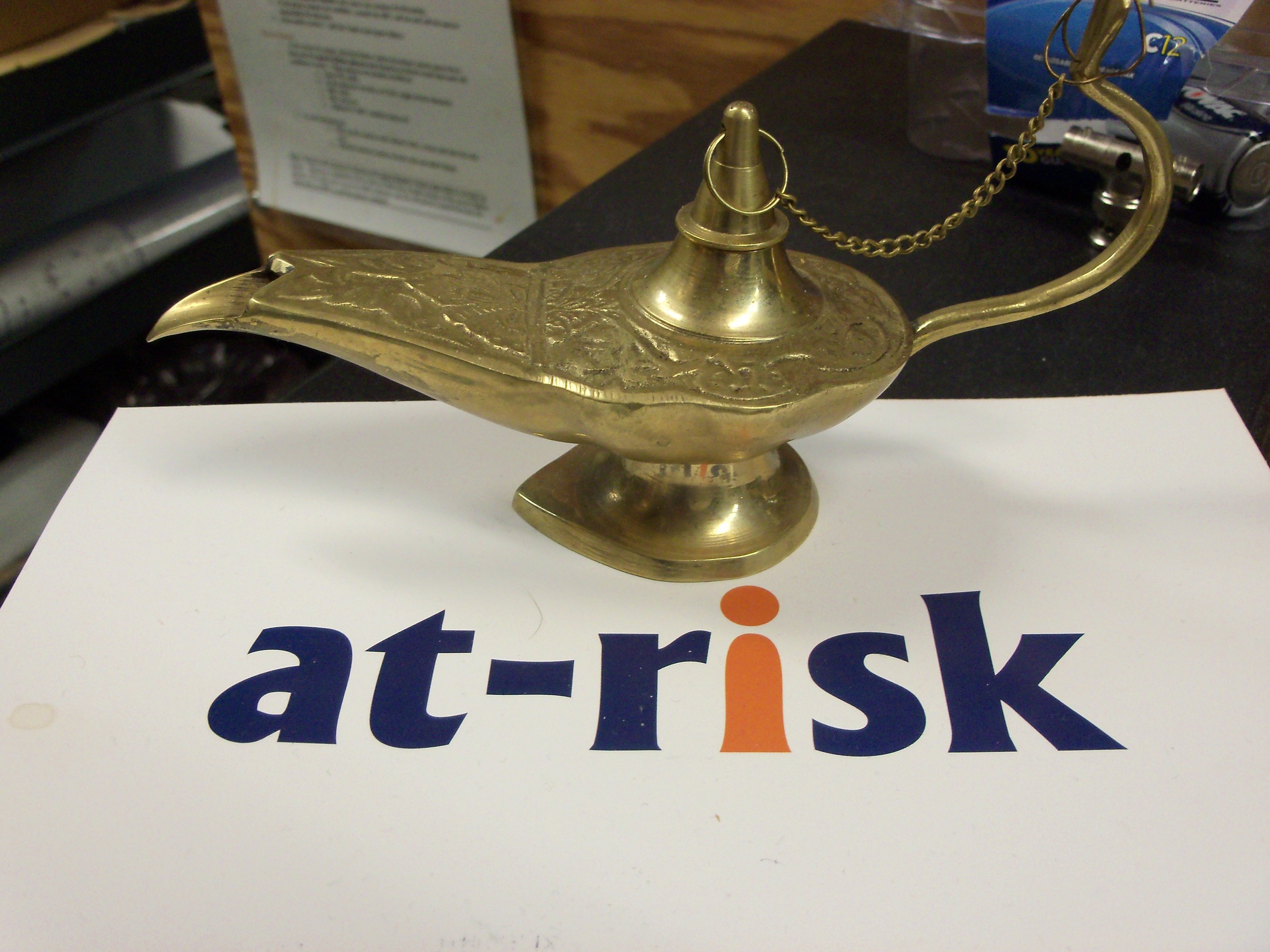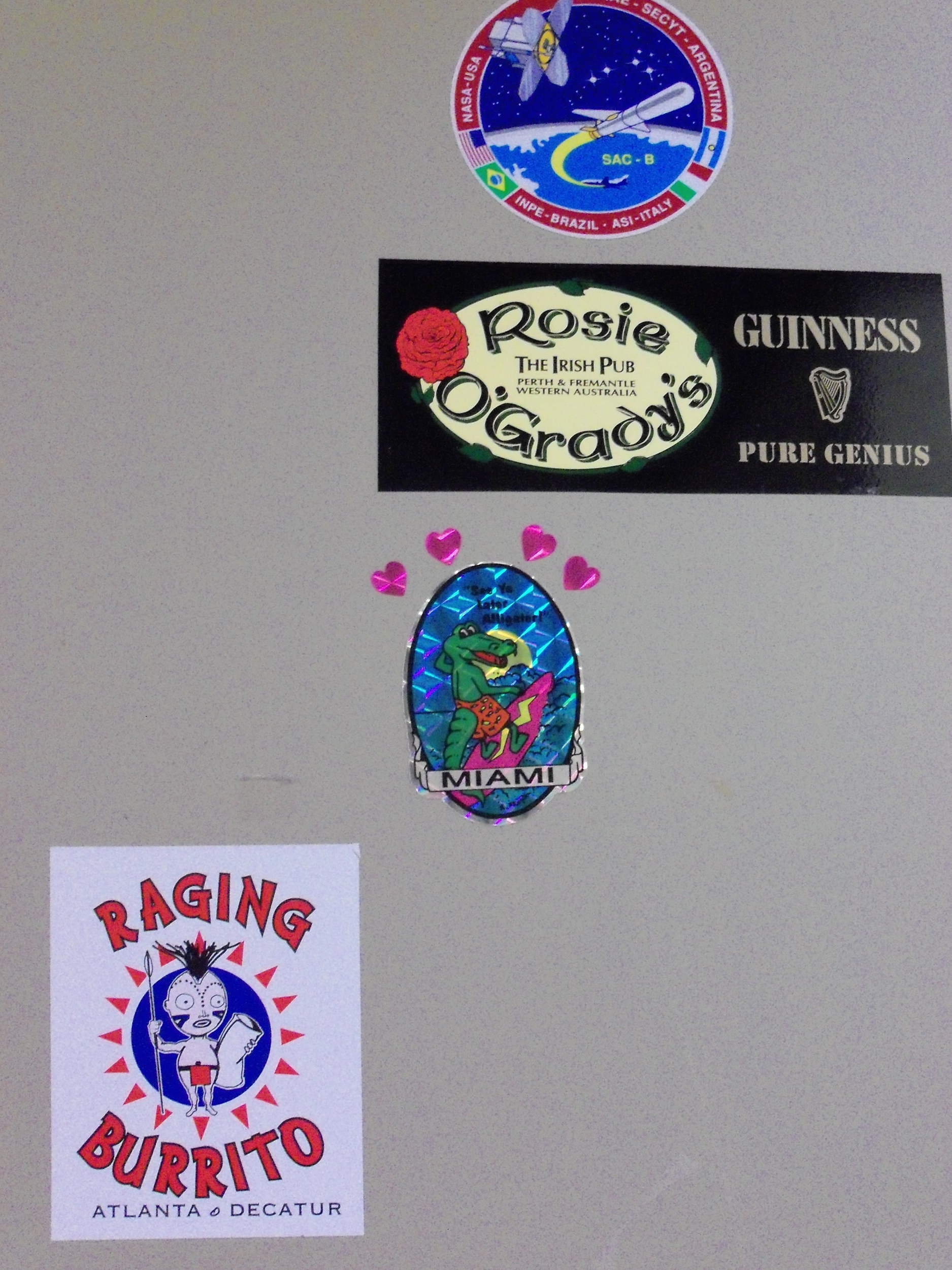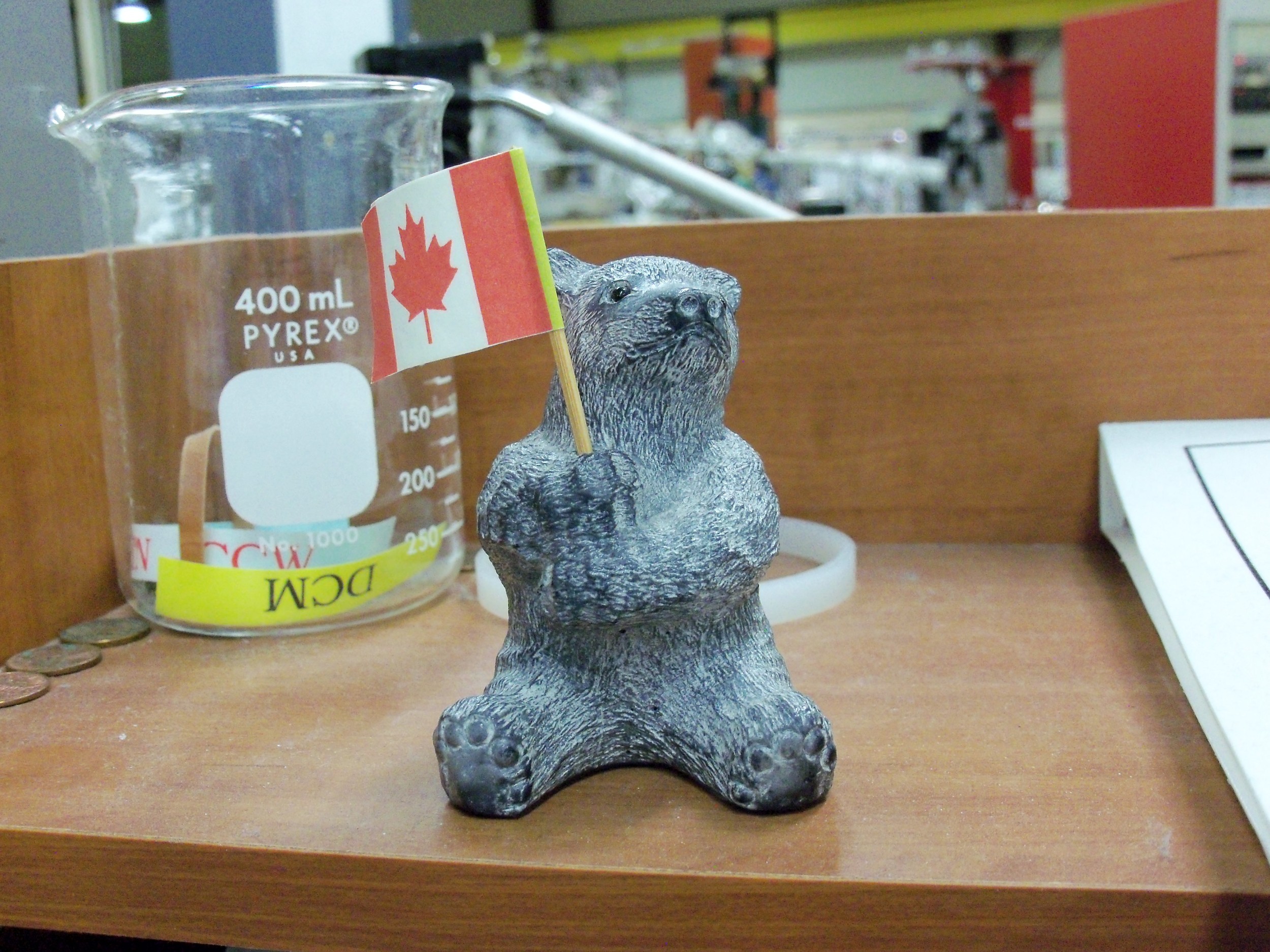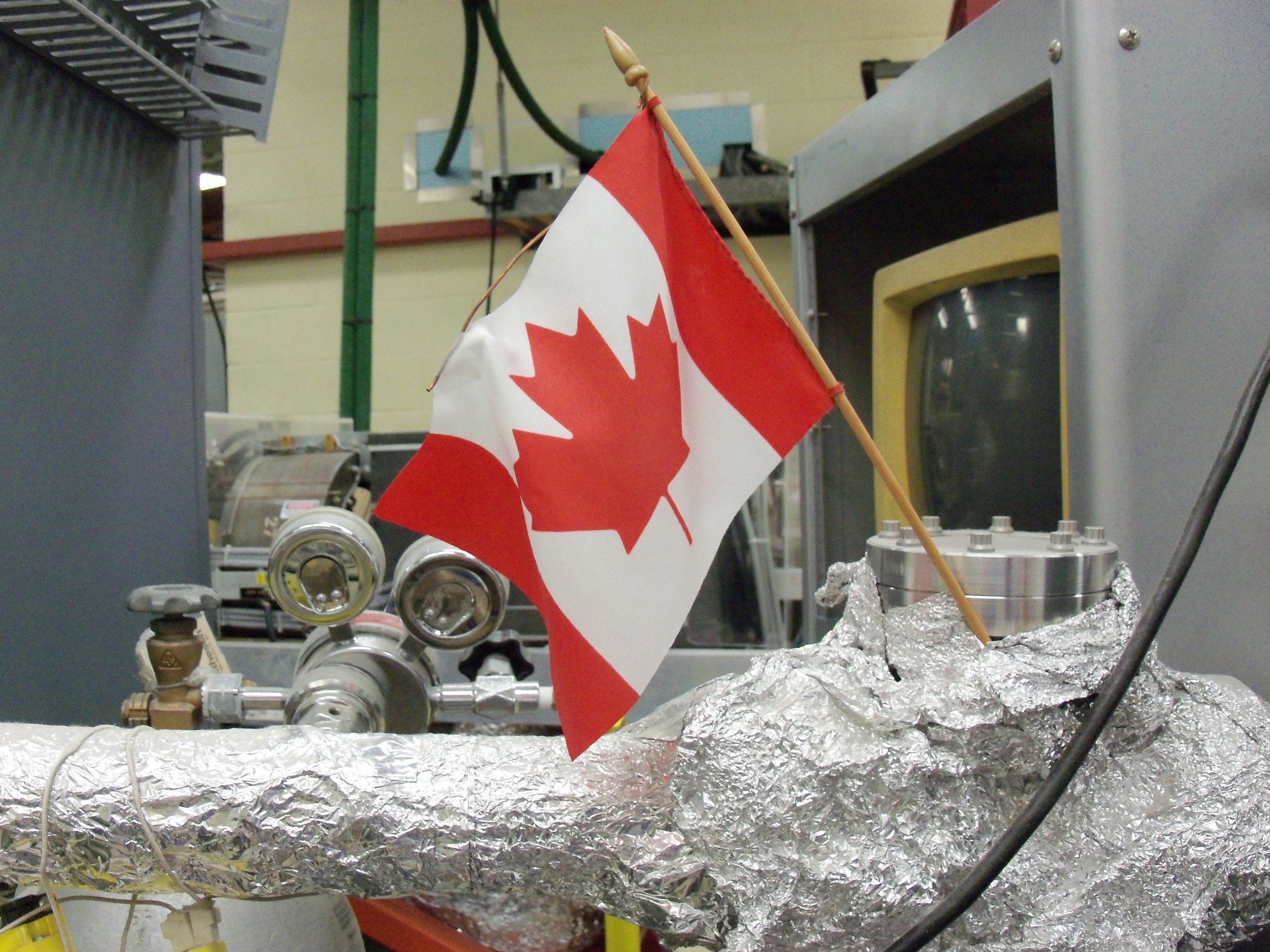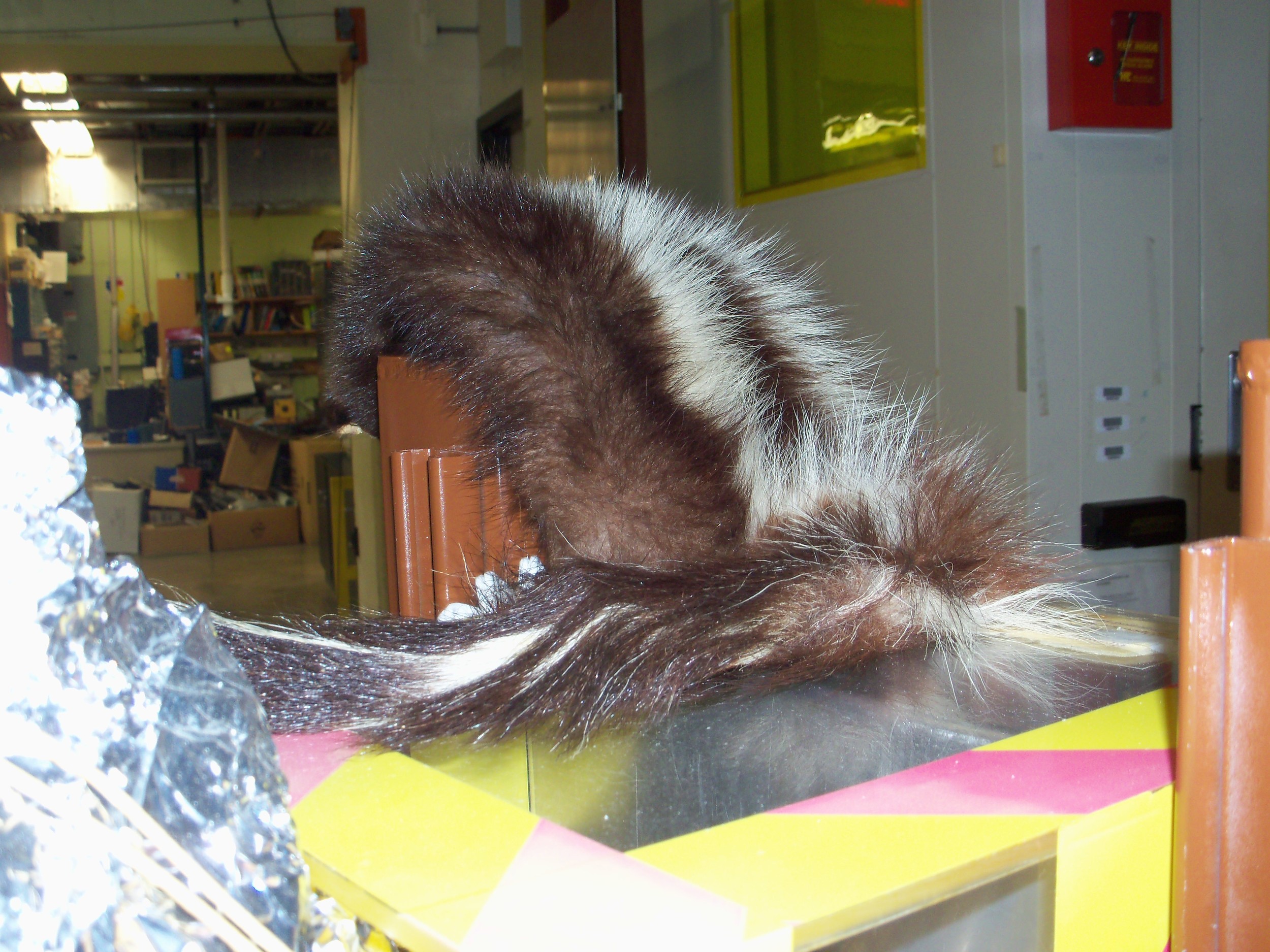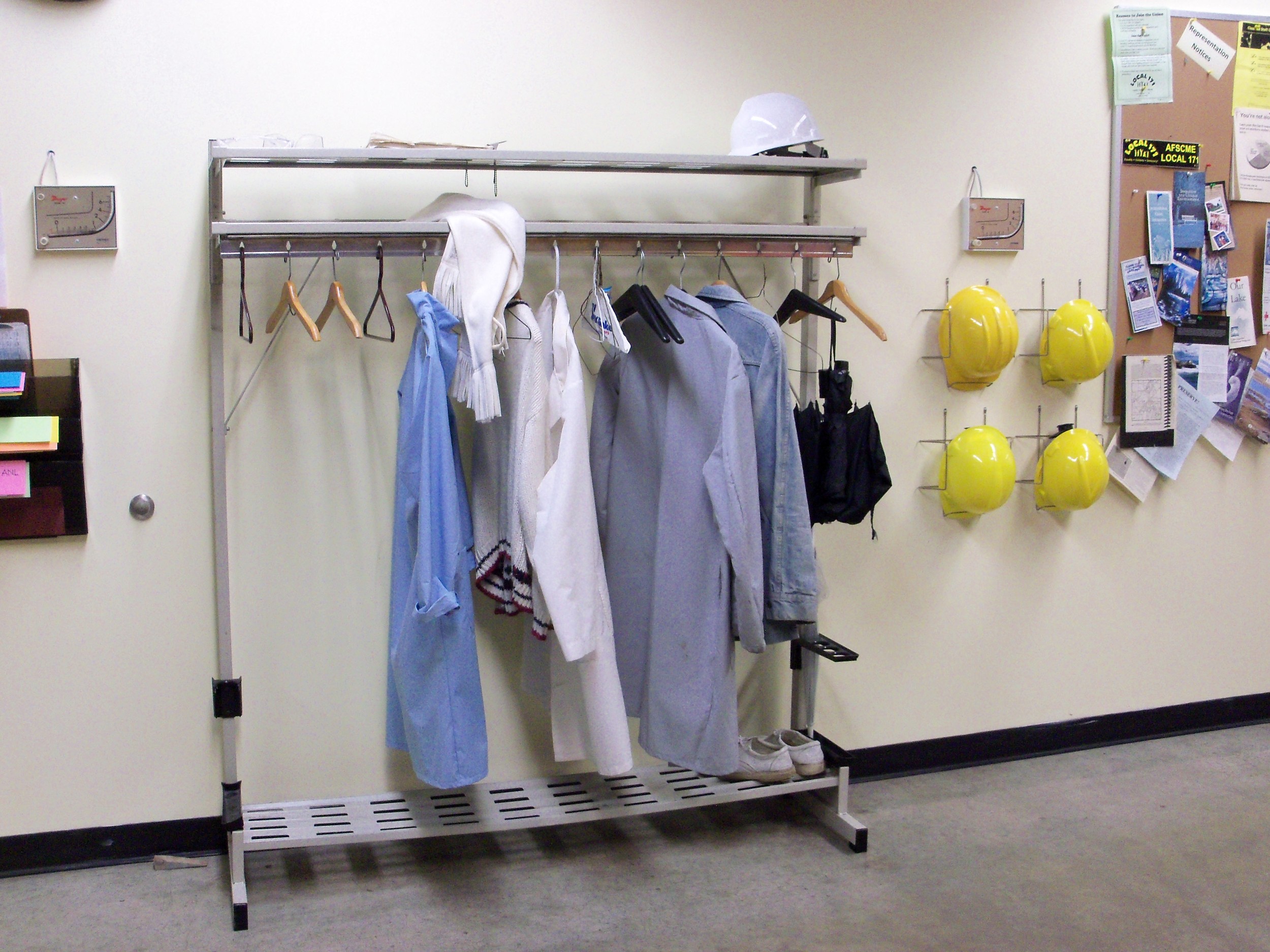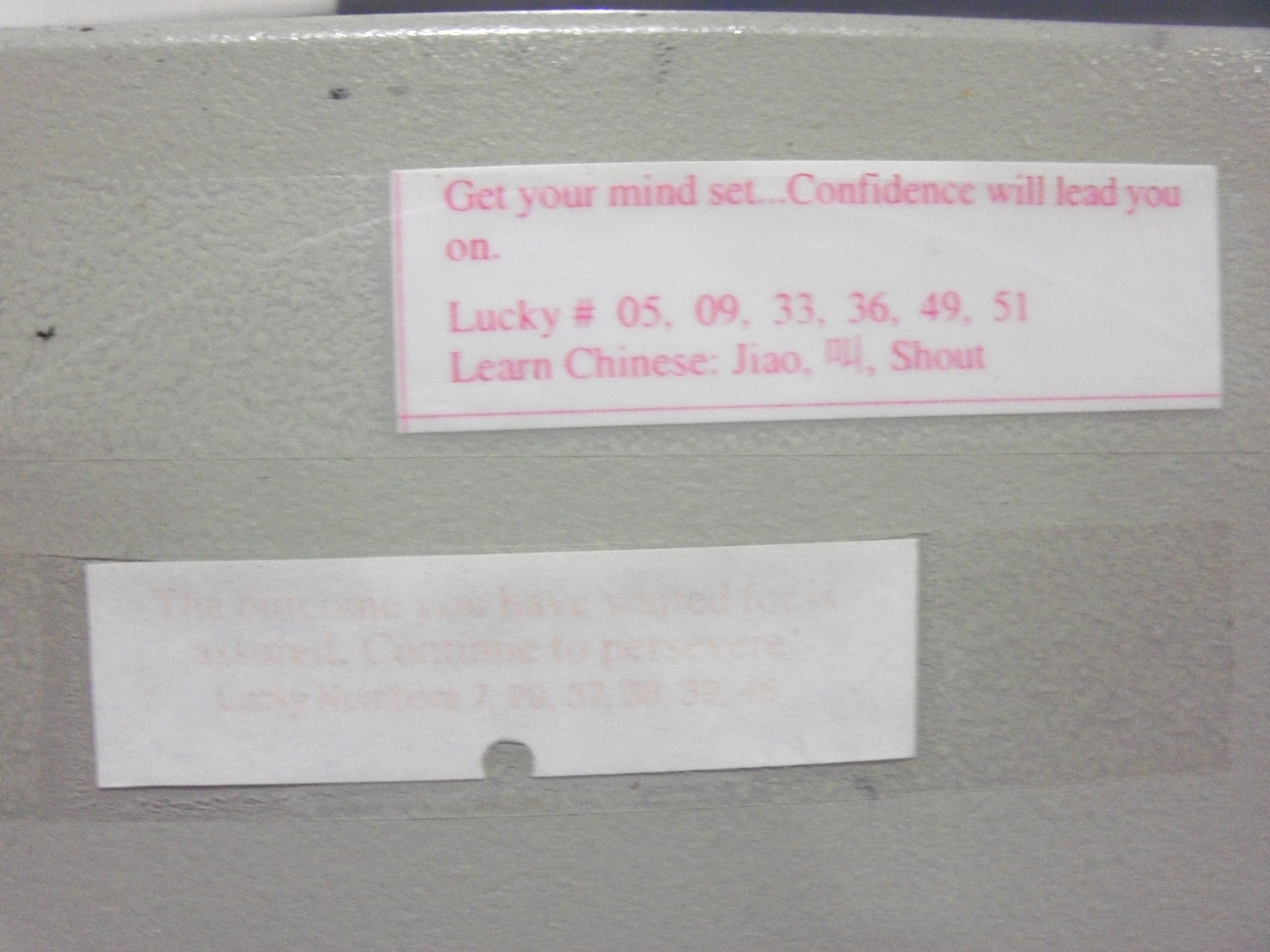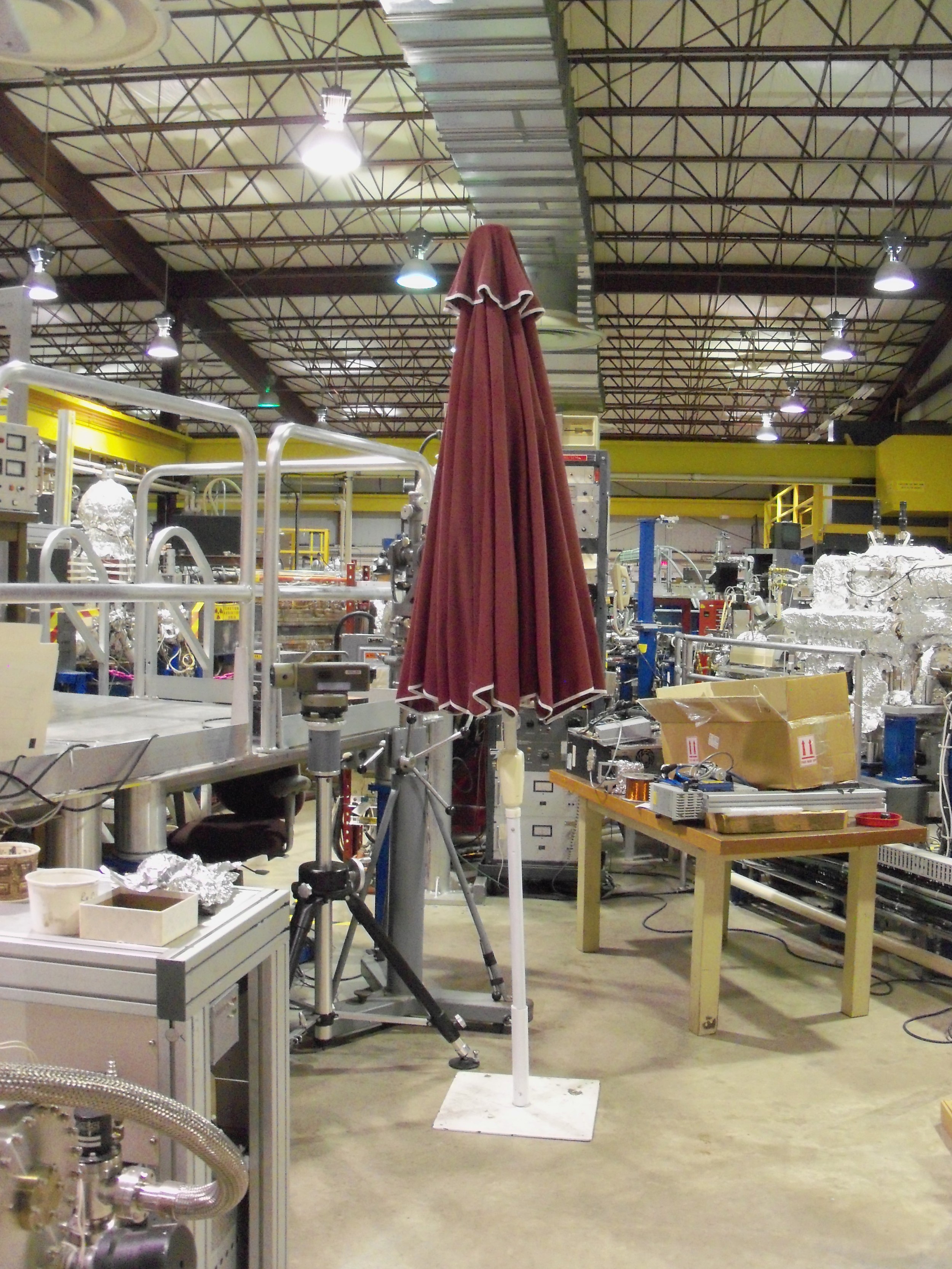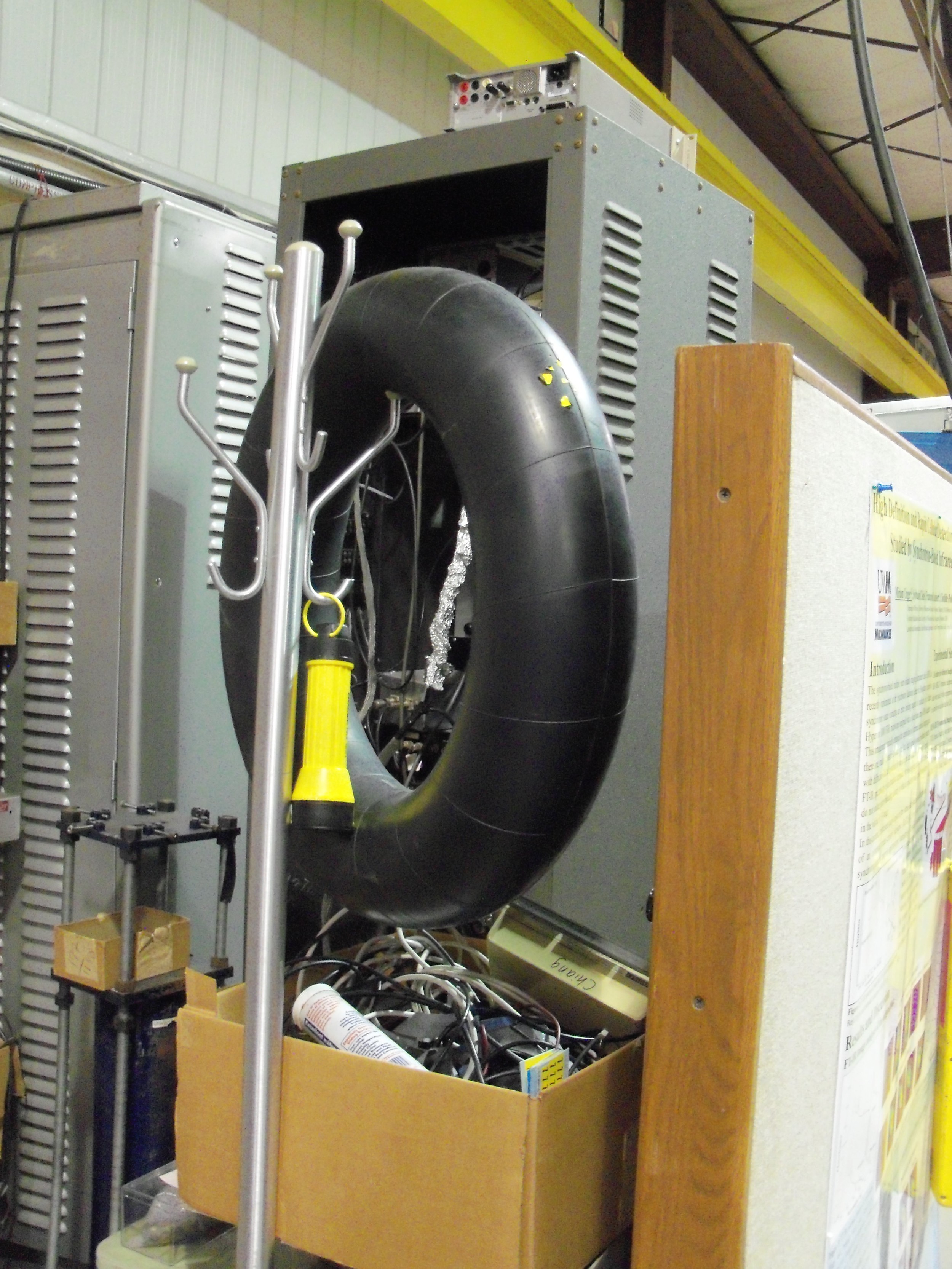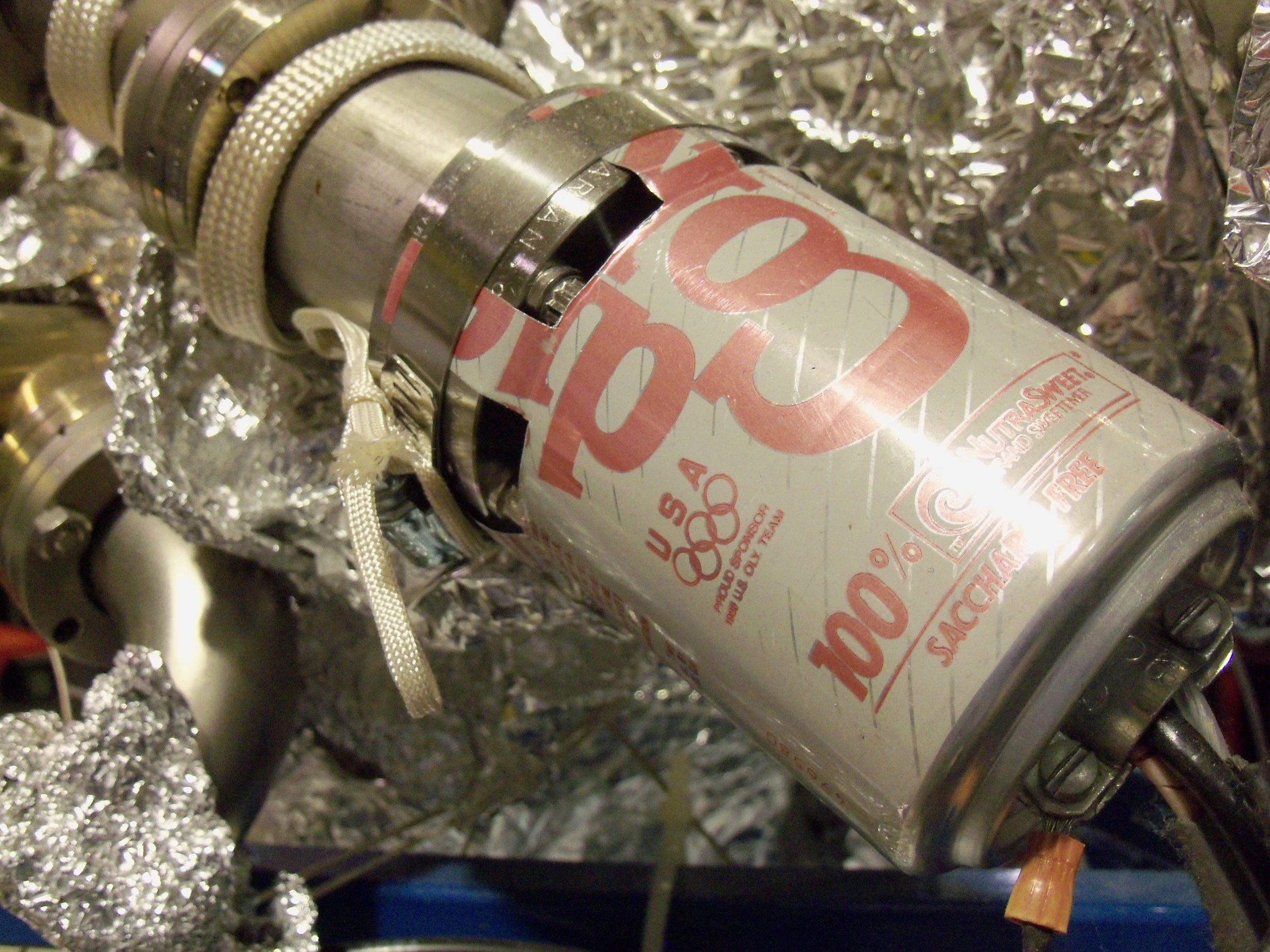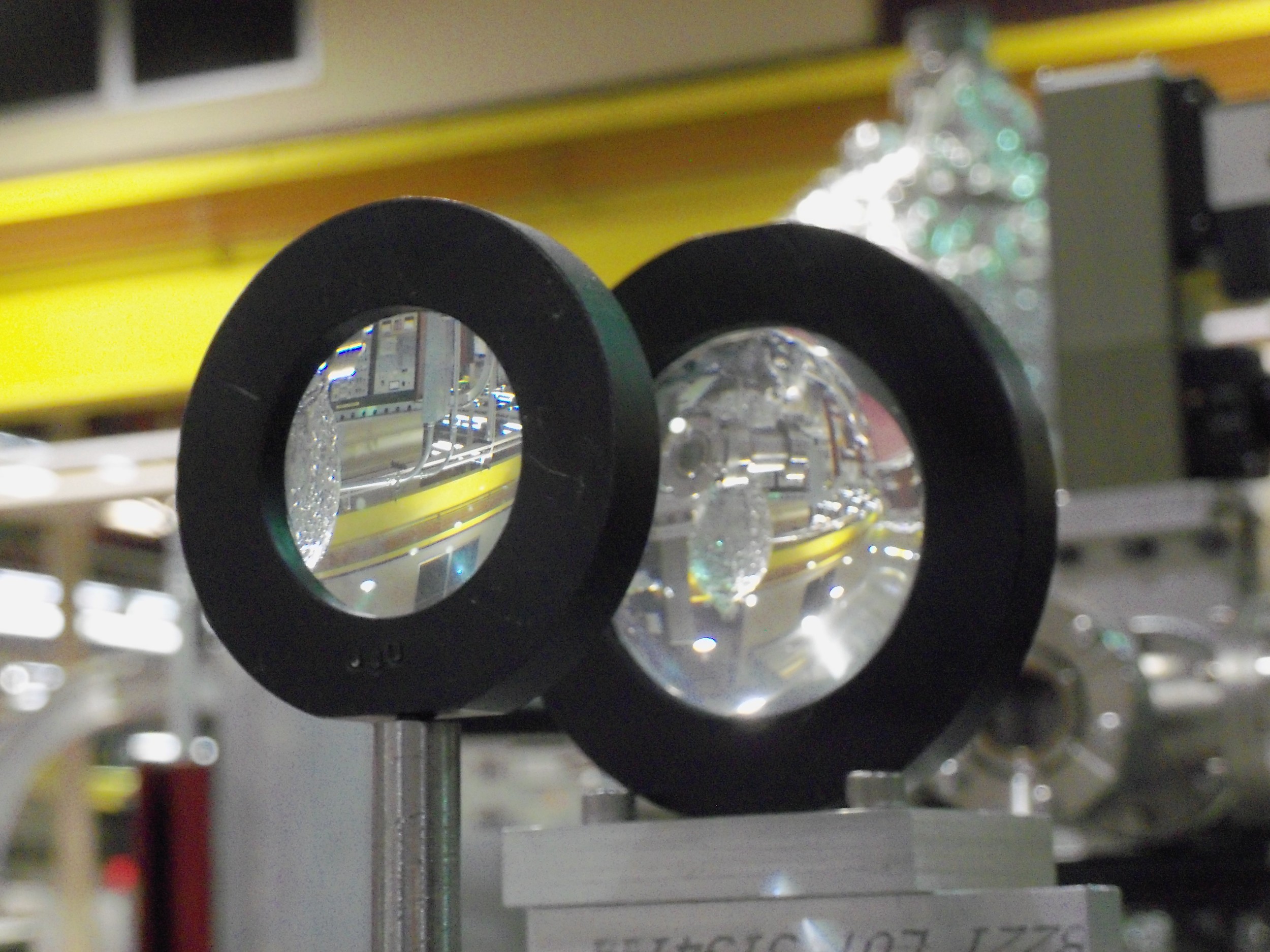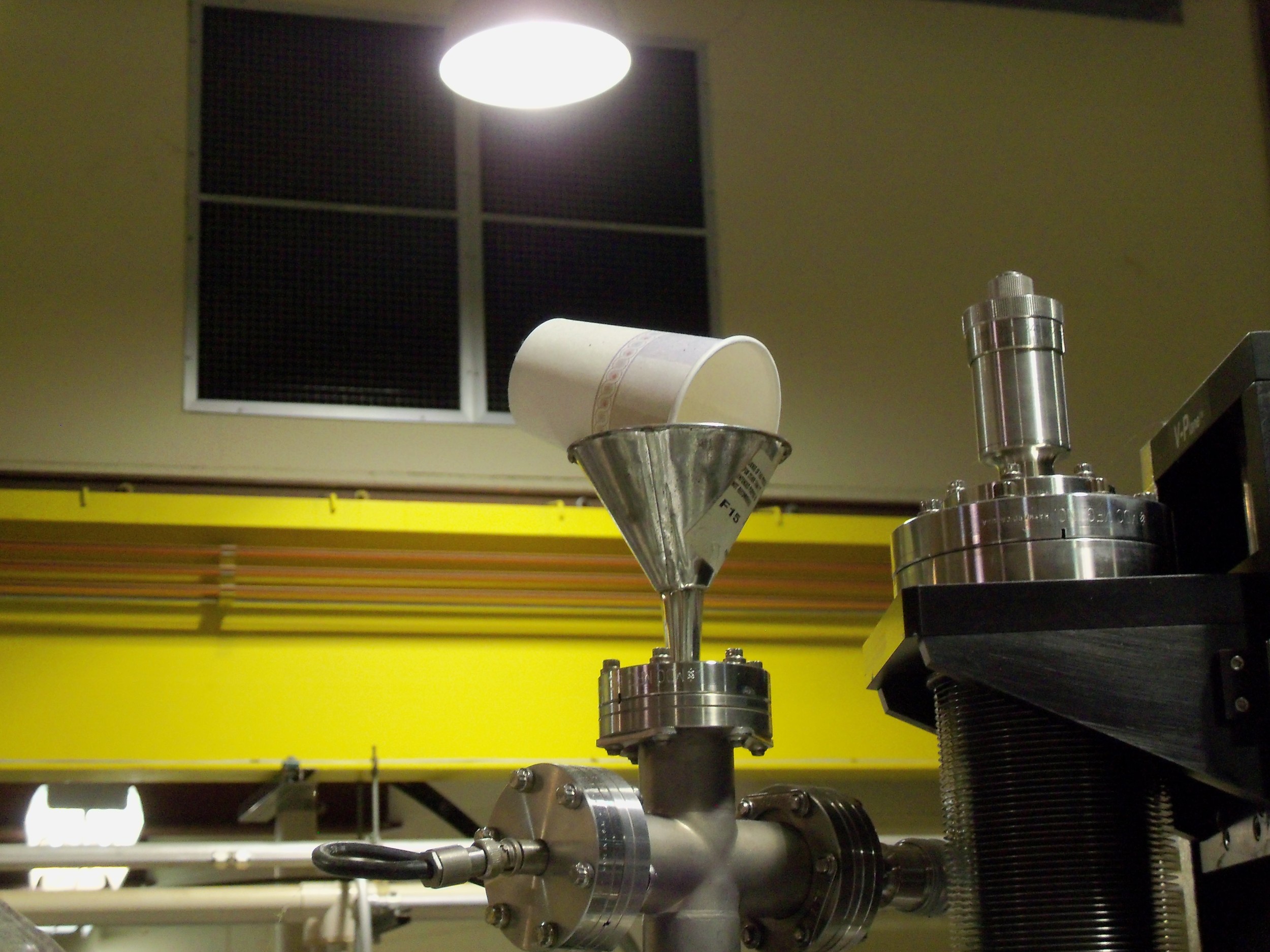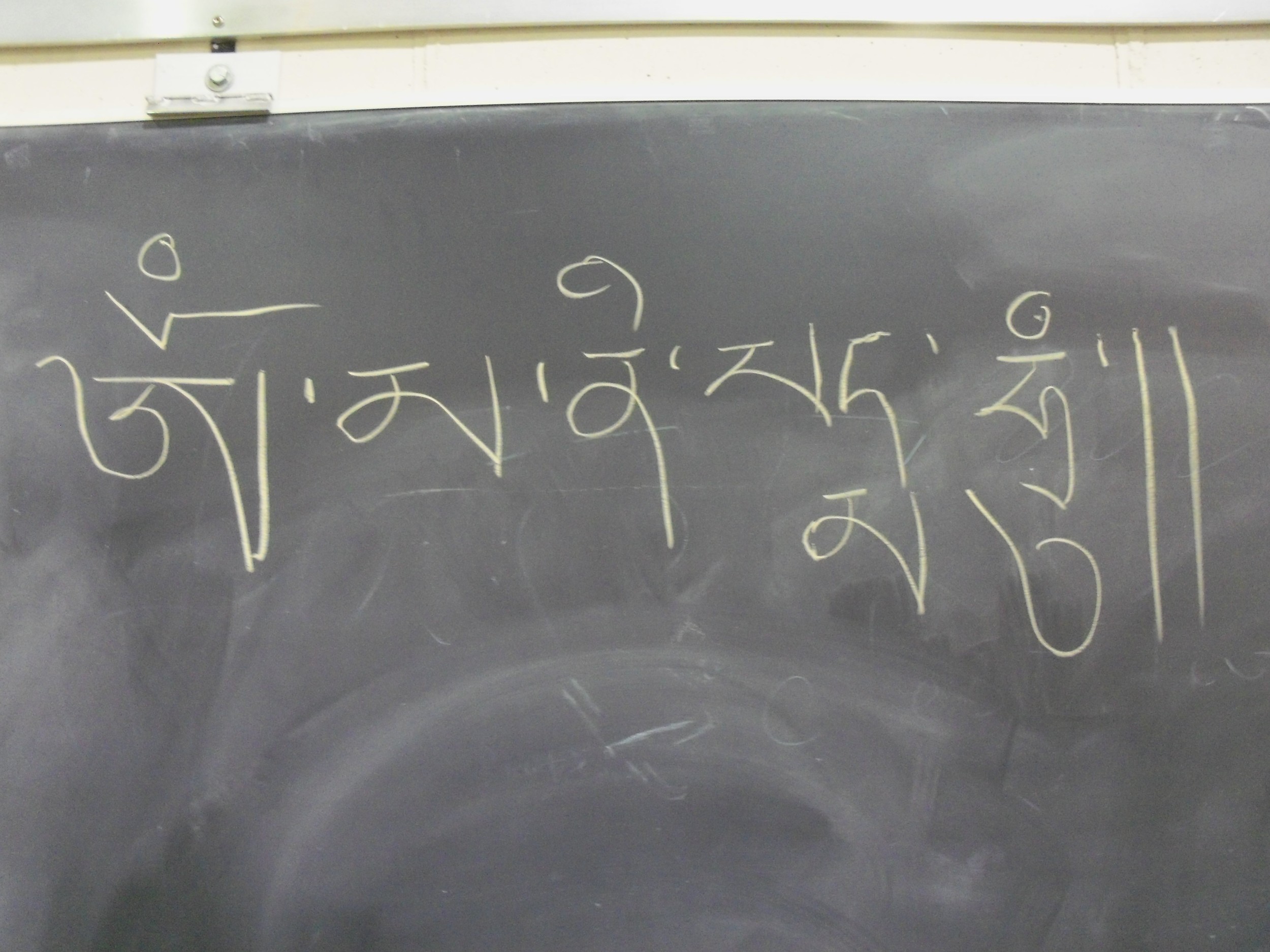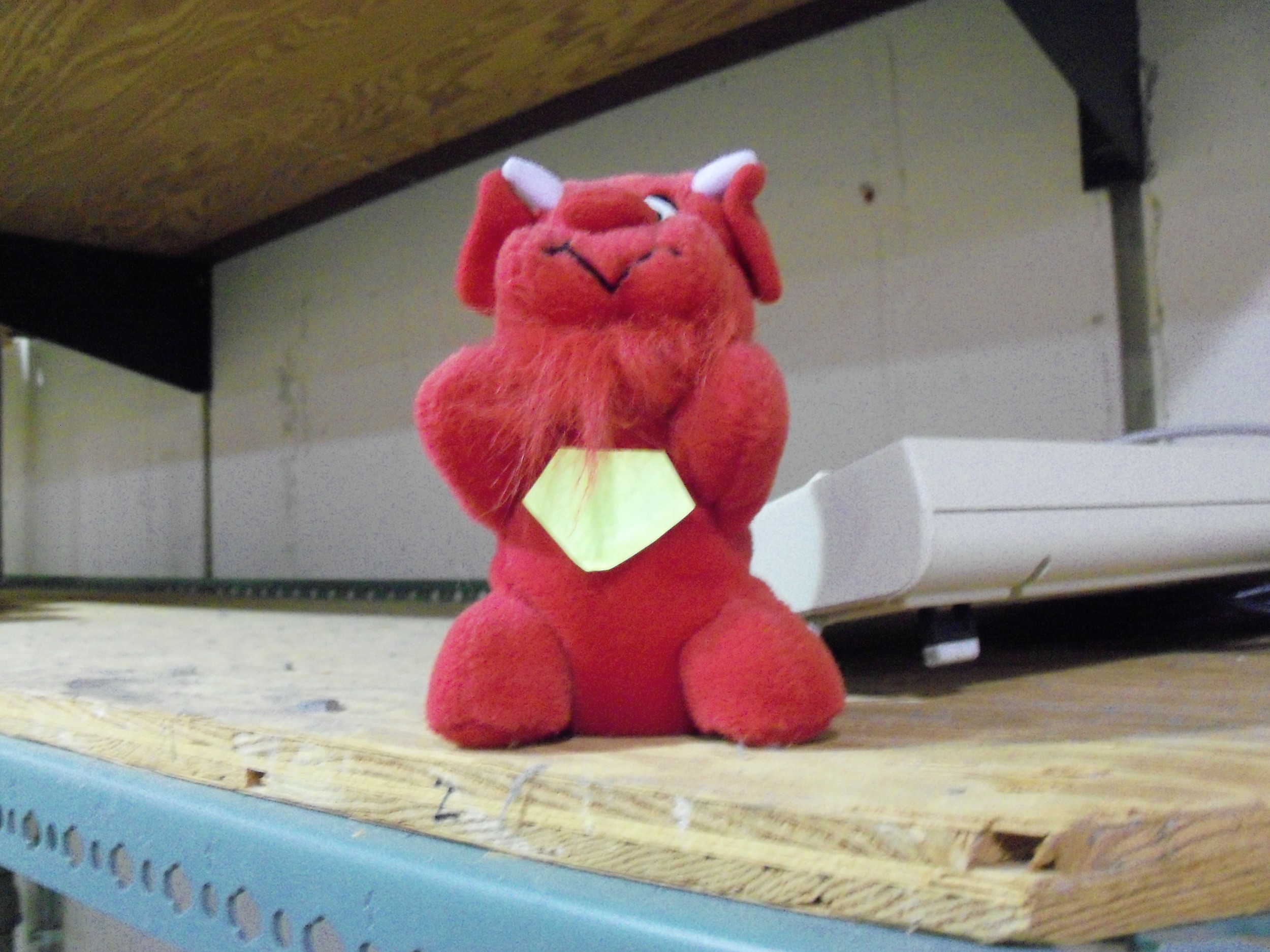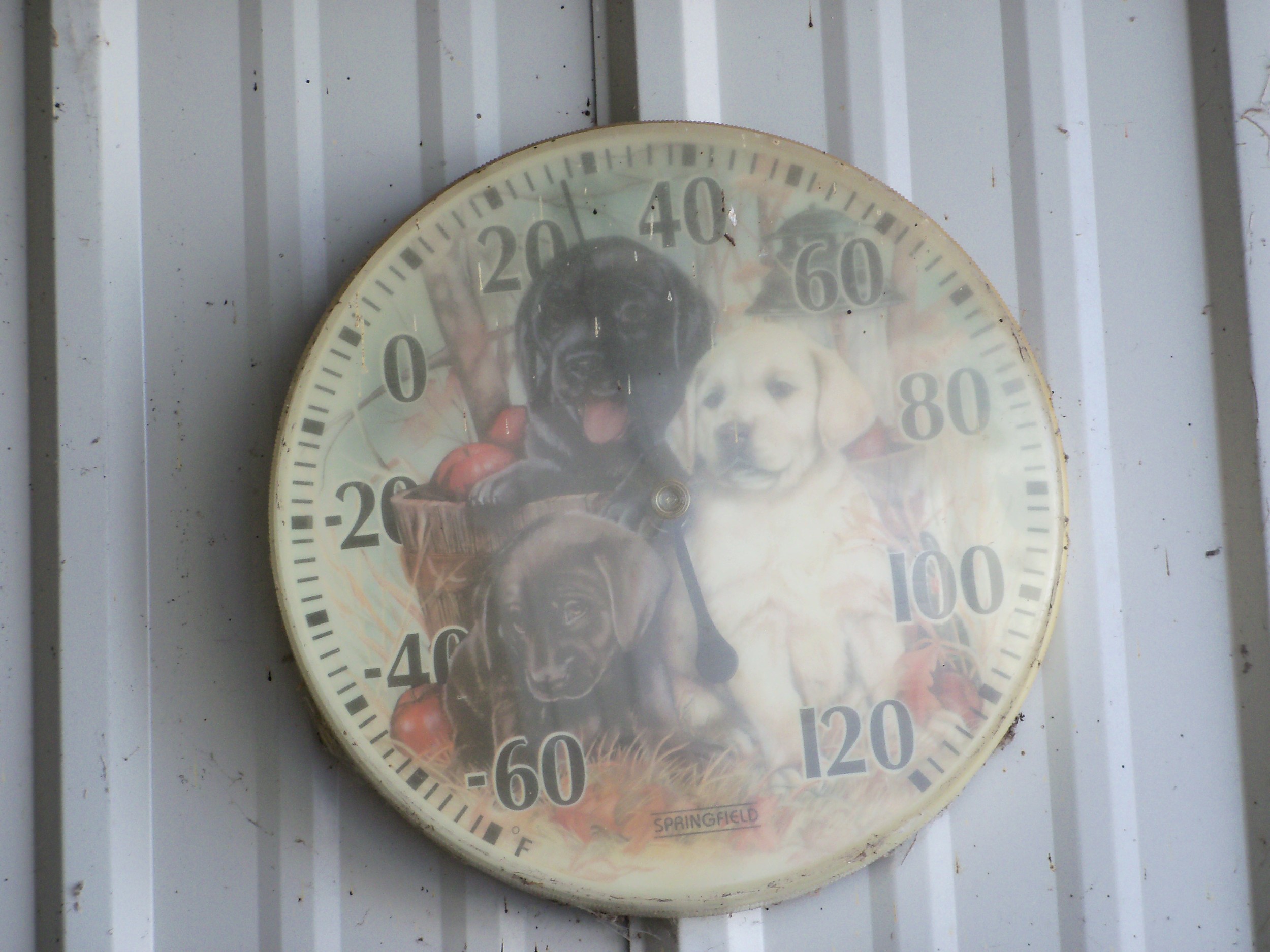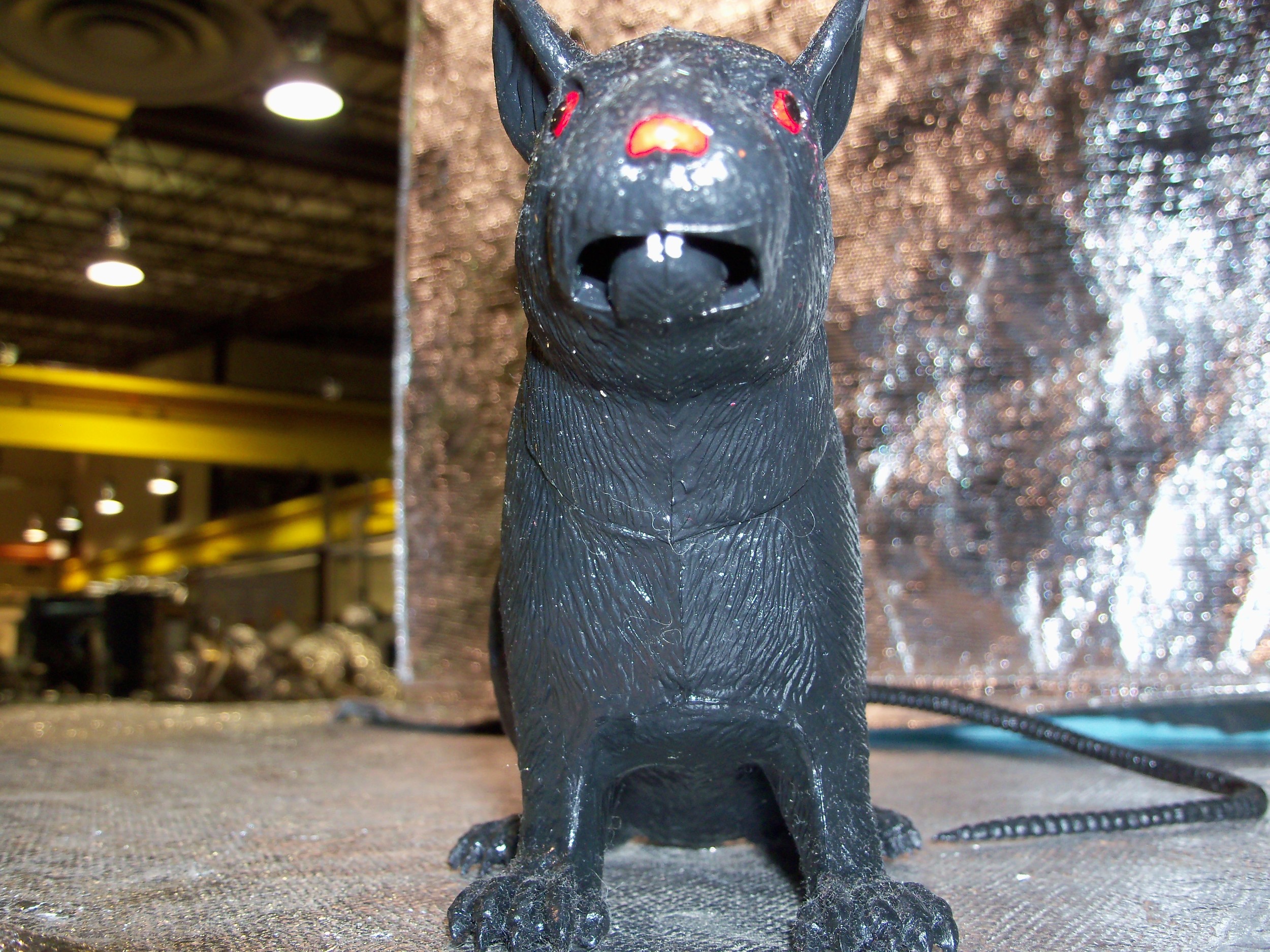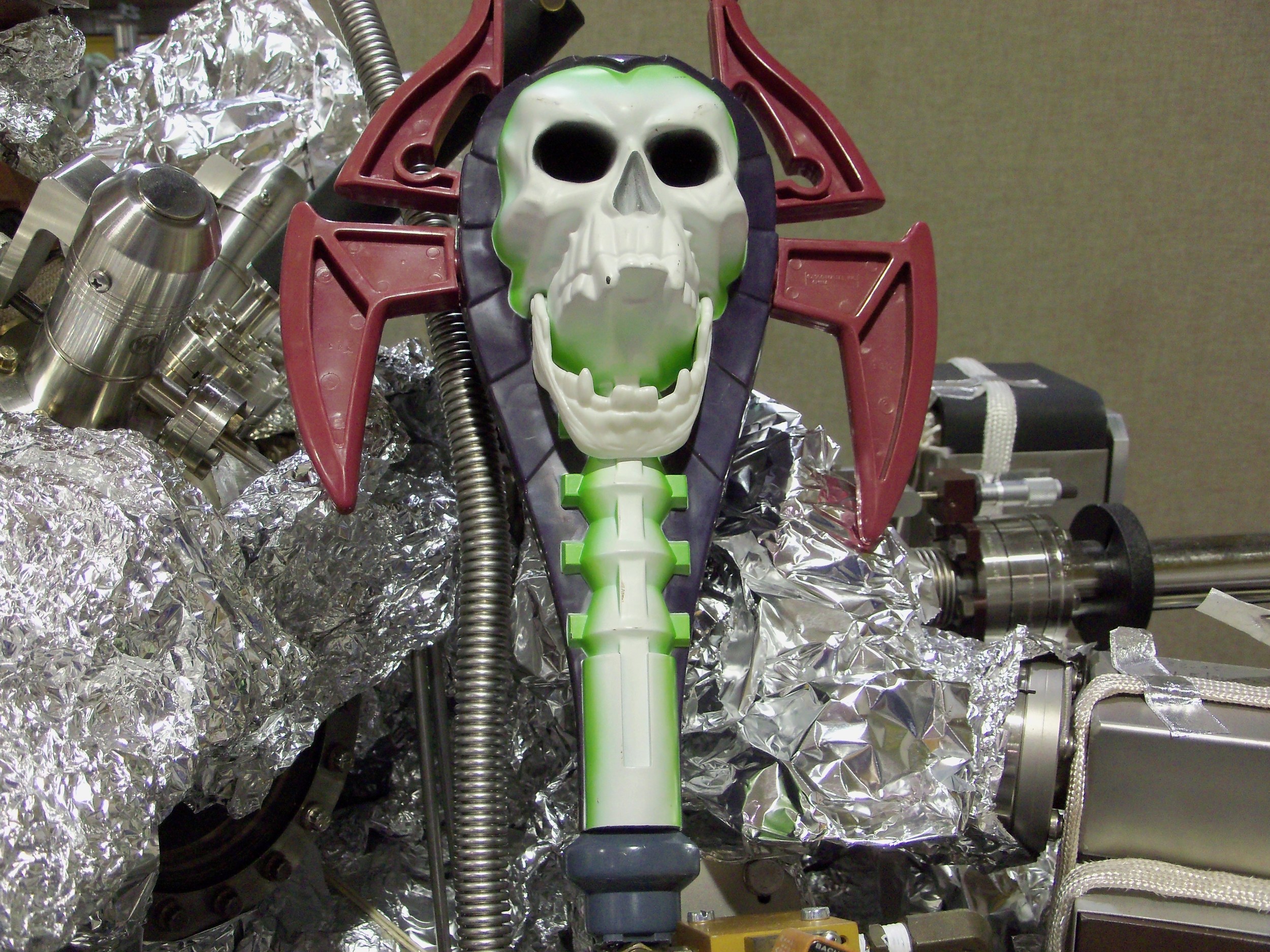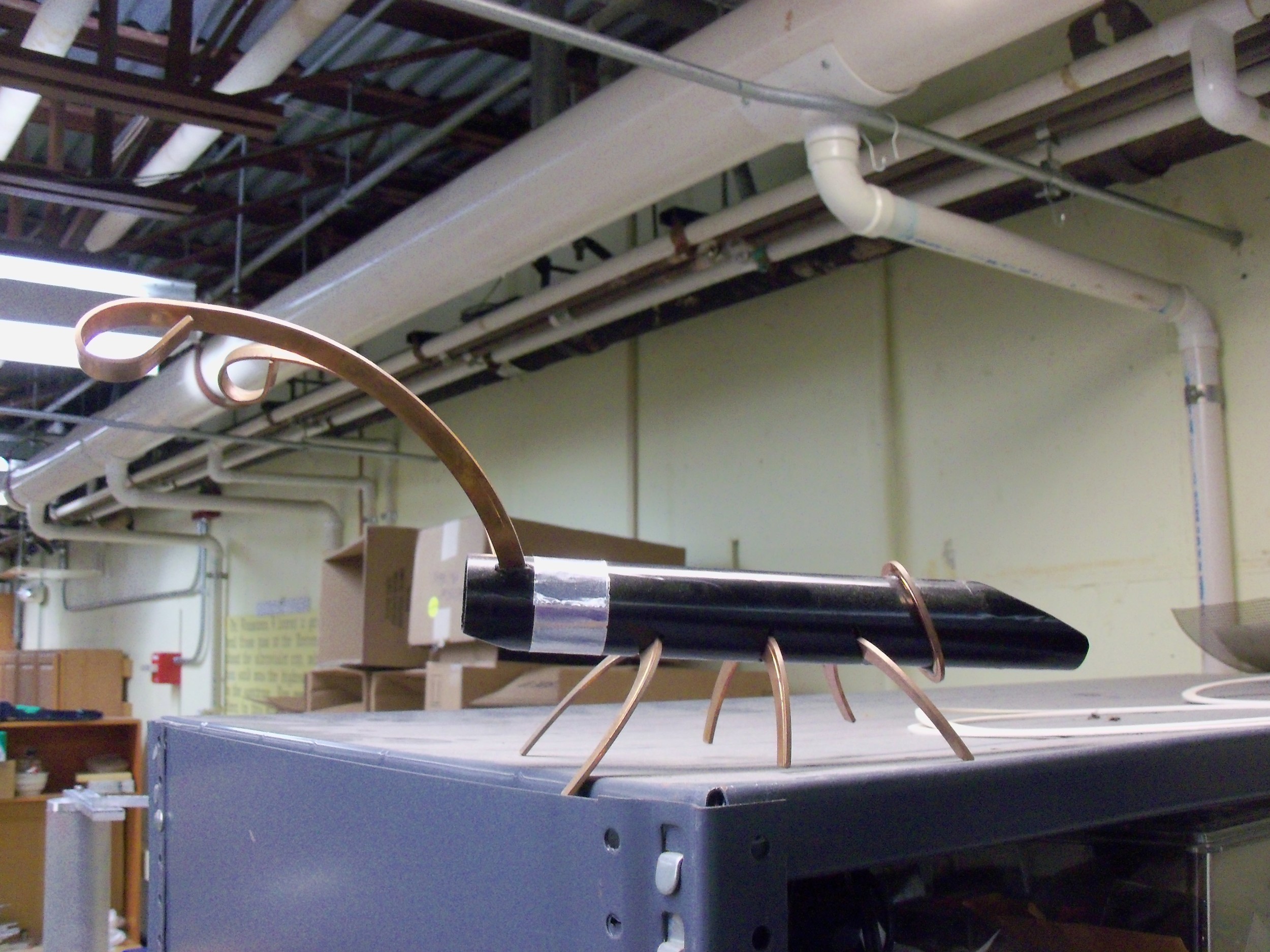The site of Condensed Matter Community is the Synchrotron Radiation Center: Home of Aladdin (SRC), a now-decommissioned advanced light source or electron storage ring, popularly referred to as a particle accelerator. The SRC was the successor to the Tantalus light source which operated from the late 1950's to mid-1960's. The full history of the Tantalus and Aladdin electron storage rings is relayed in The Official Write-up History of the Synchrotron Radiation Center, graciously provided by the University of Wisconsin Madison Archives. Therein the story of how the SRC came to be through years of evolving funding sources is detailed. Both facilities were built on the same land in separate structures, overlooking Lake Kegonsa in rural Stoughton, Wisconsin and were used to harness synchrotron radiation for a wide variety of experiments.
The following images were collected from the University of Wisconsin Madison Archives, employees of the Synchrotron Radiation Center, and taken on-site.
The Tantalus electron storage ring:
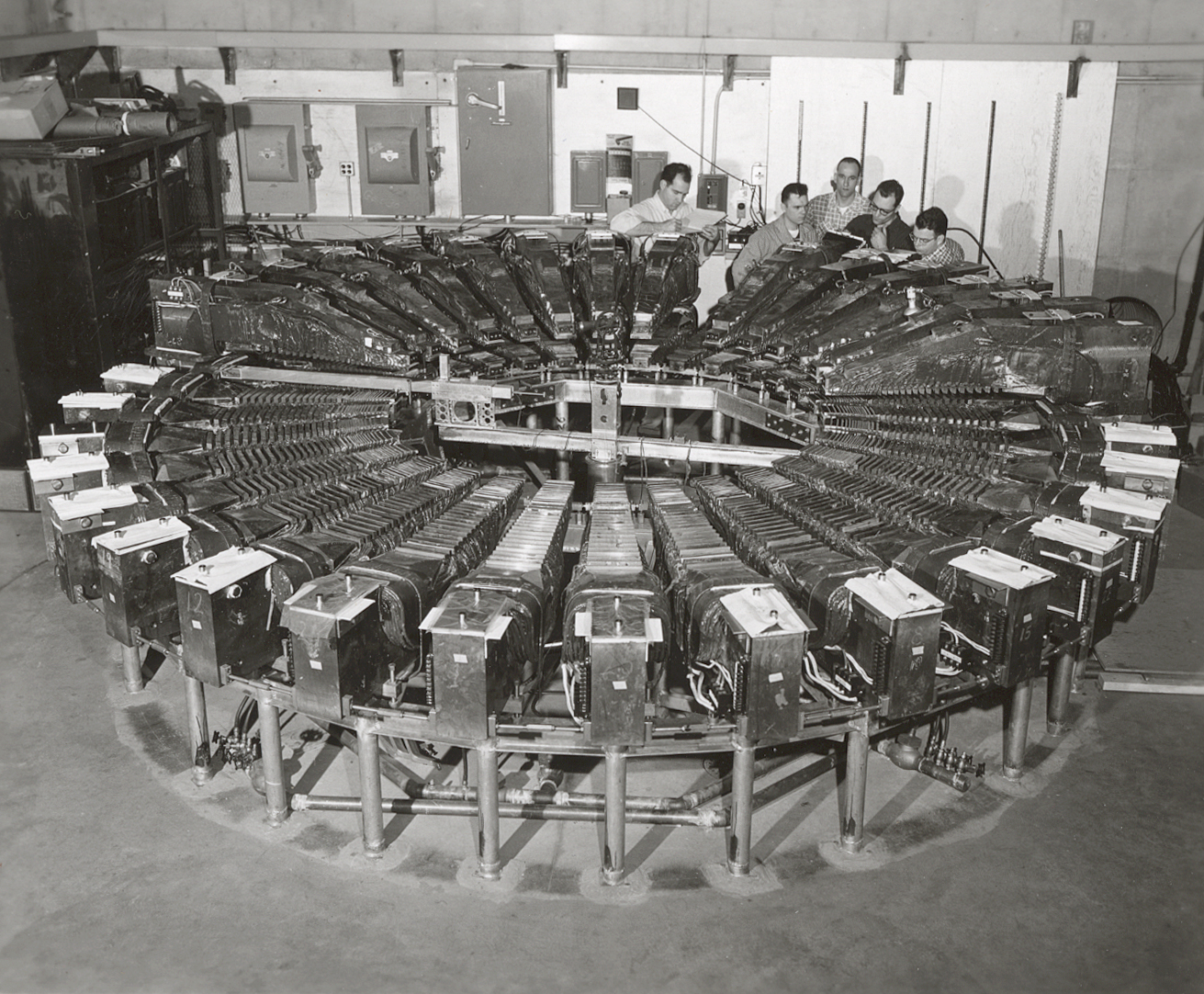
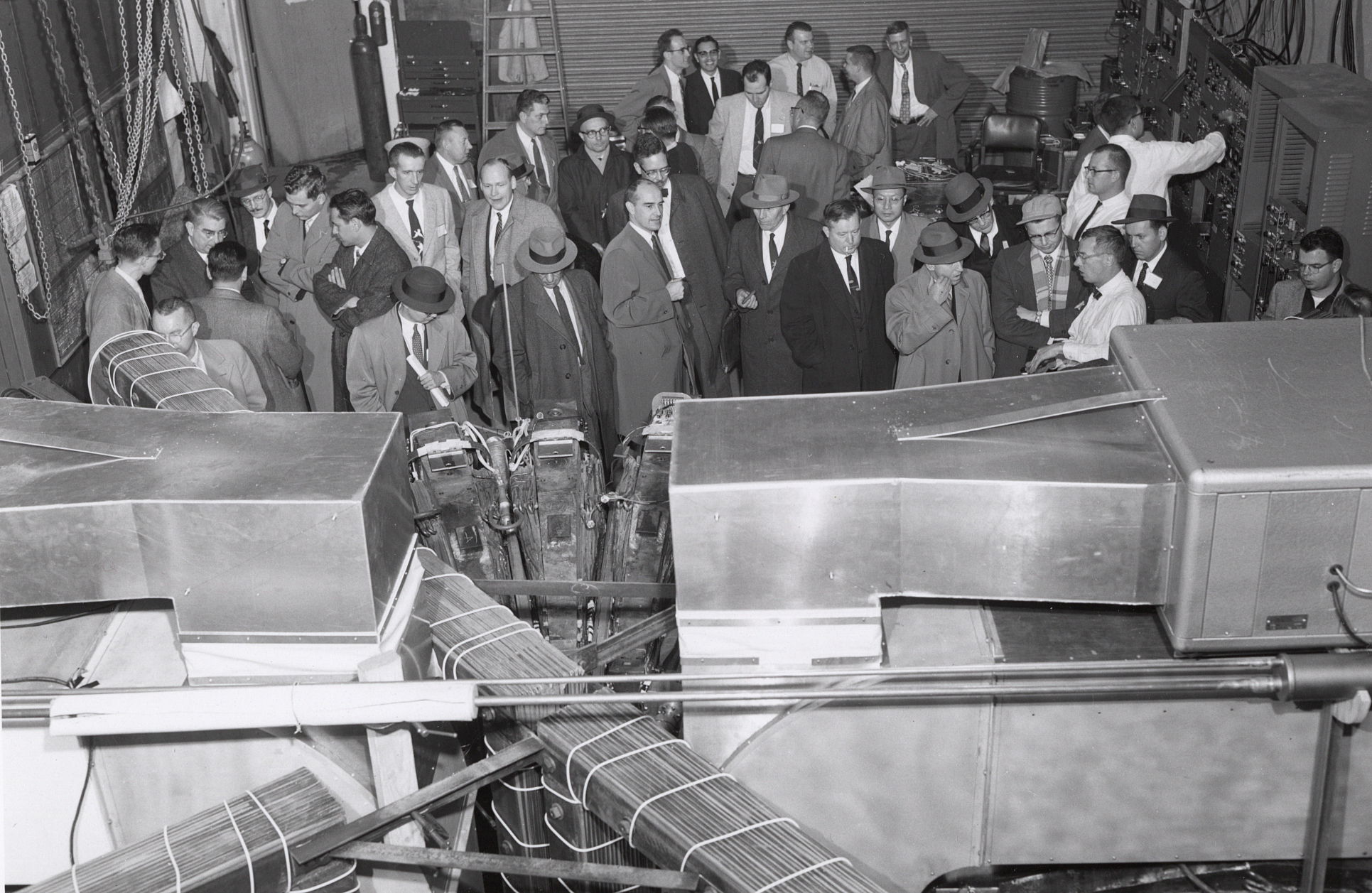
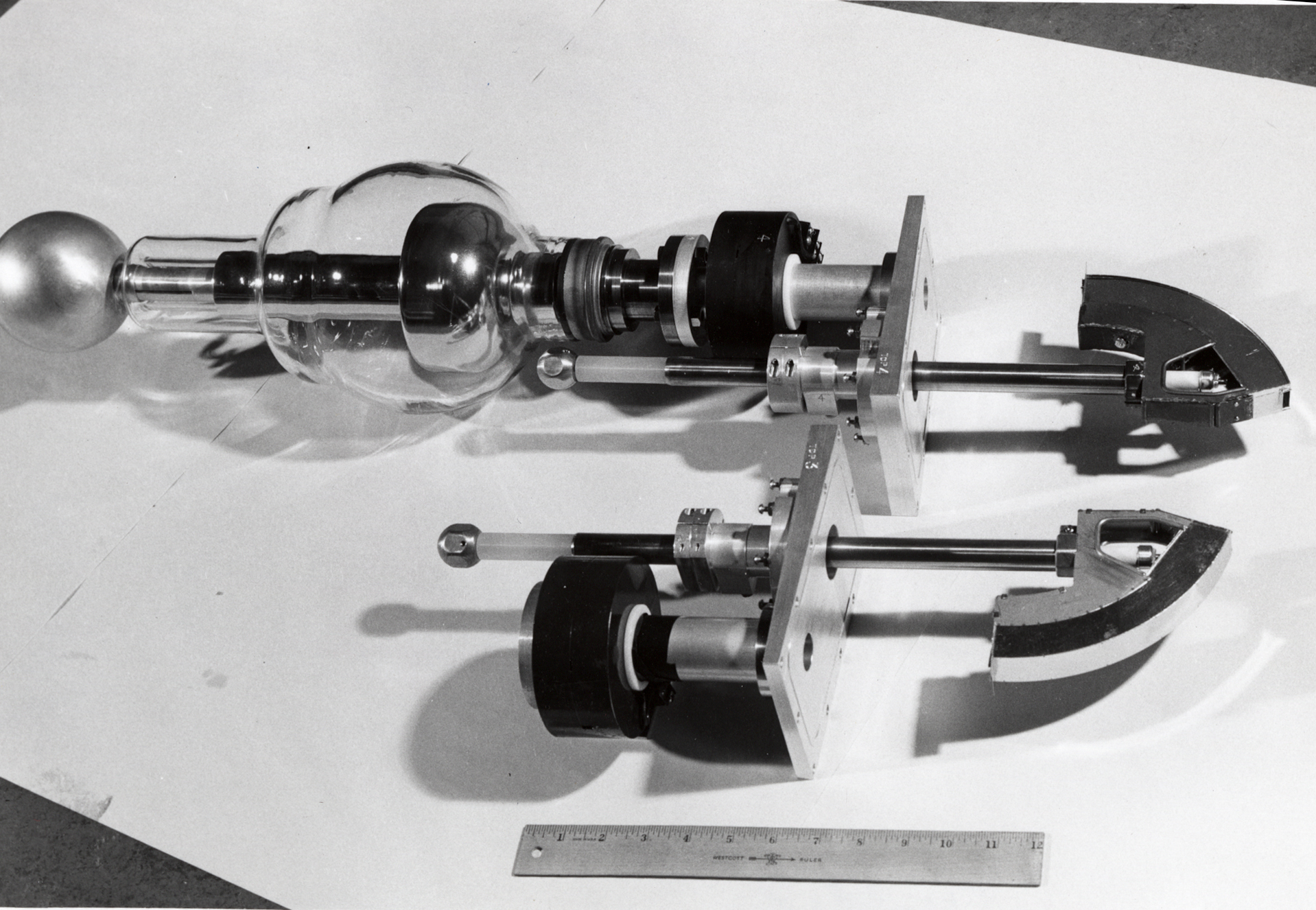
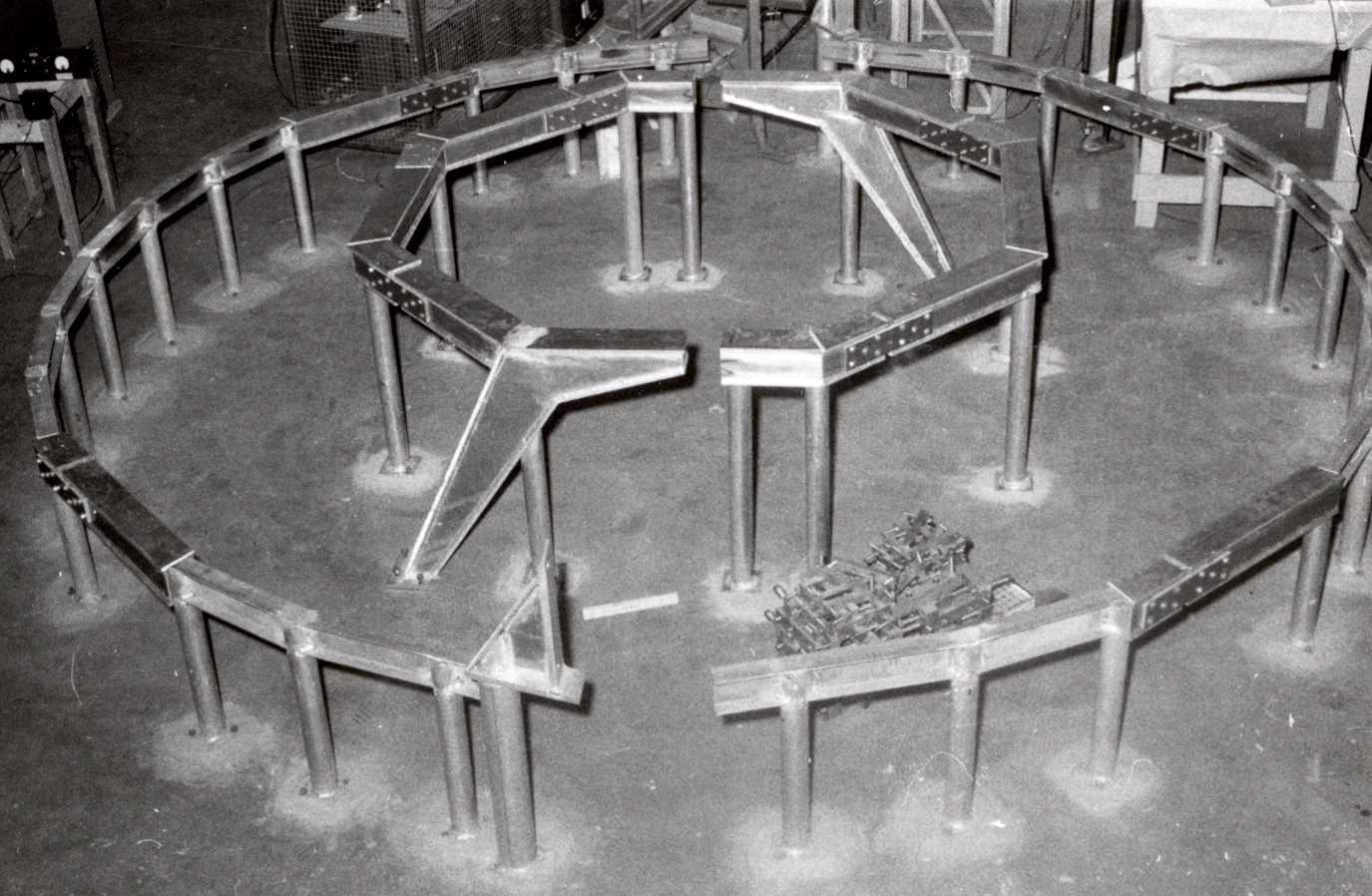
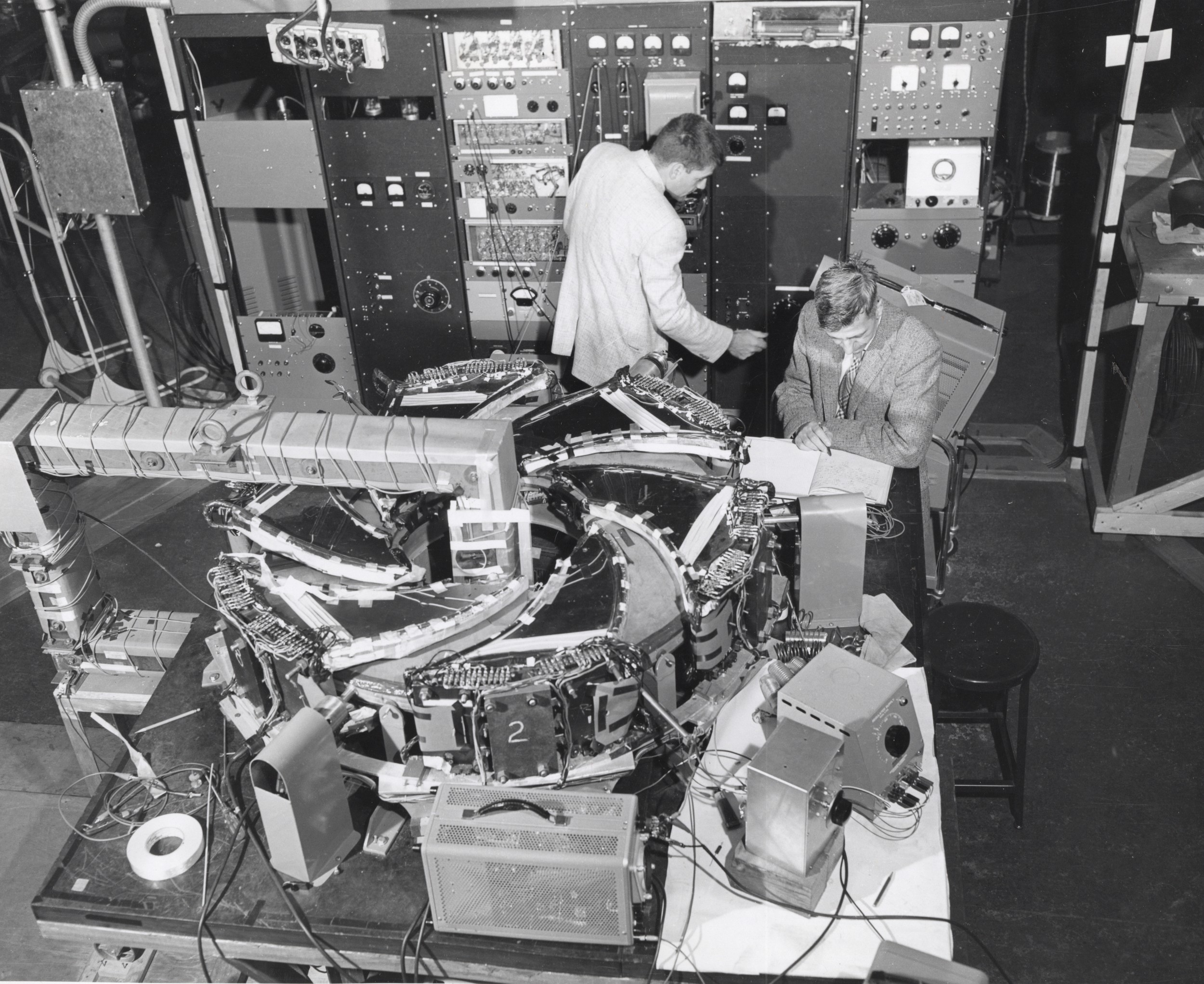
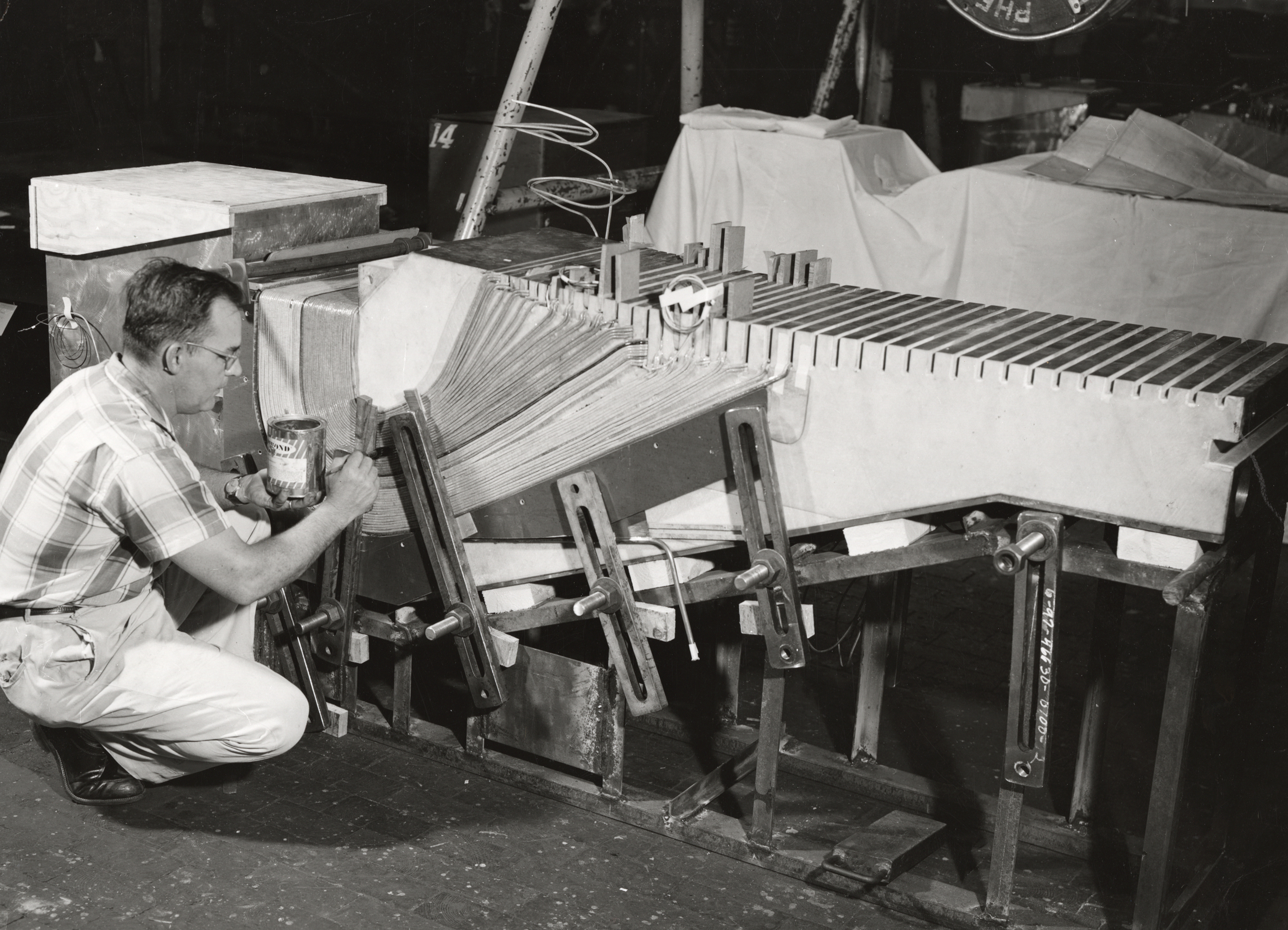
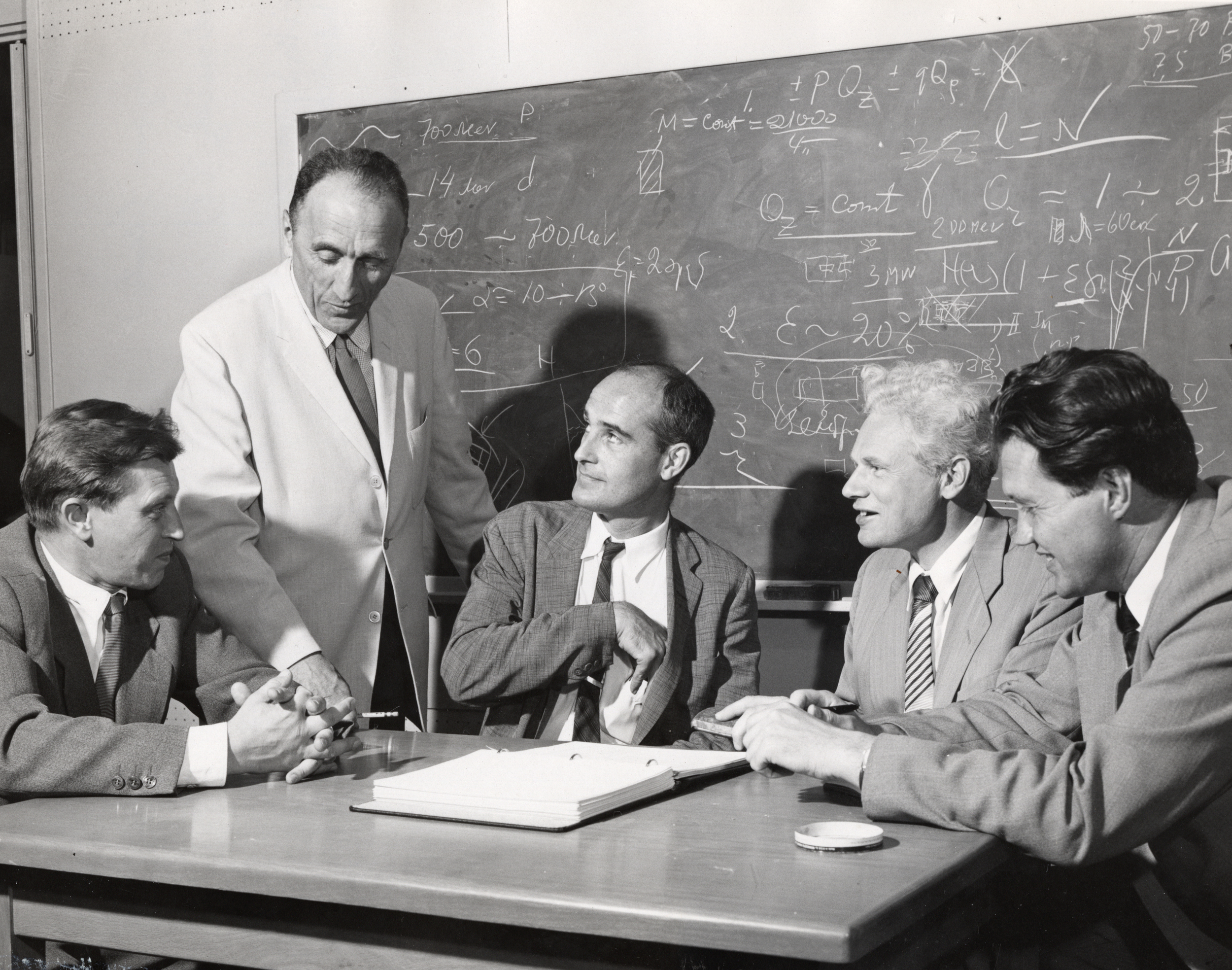
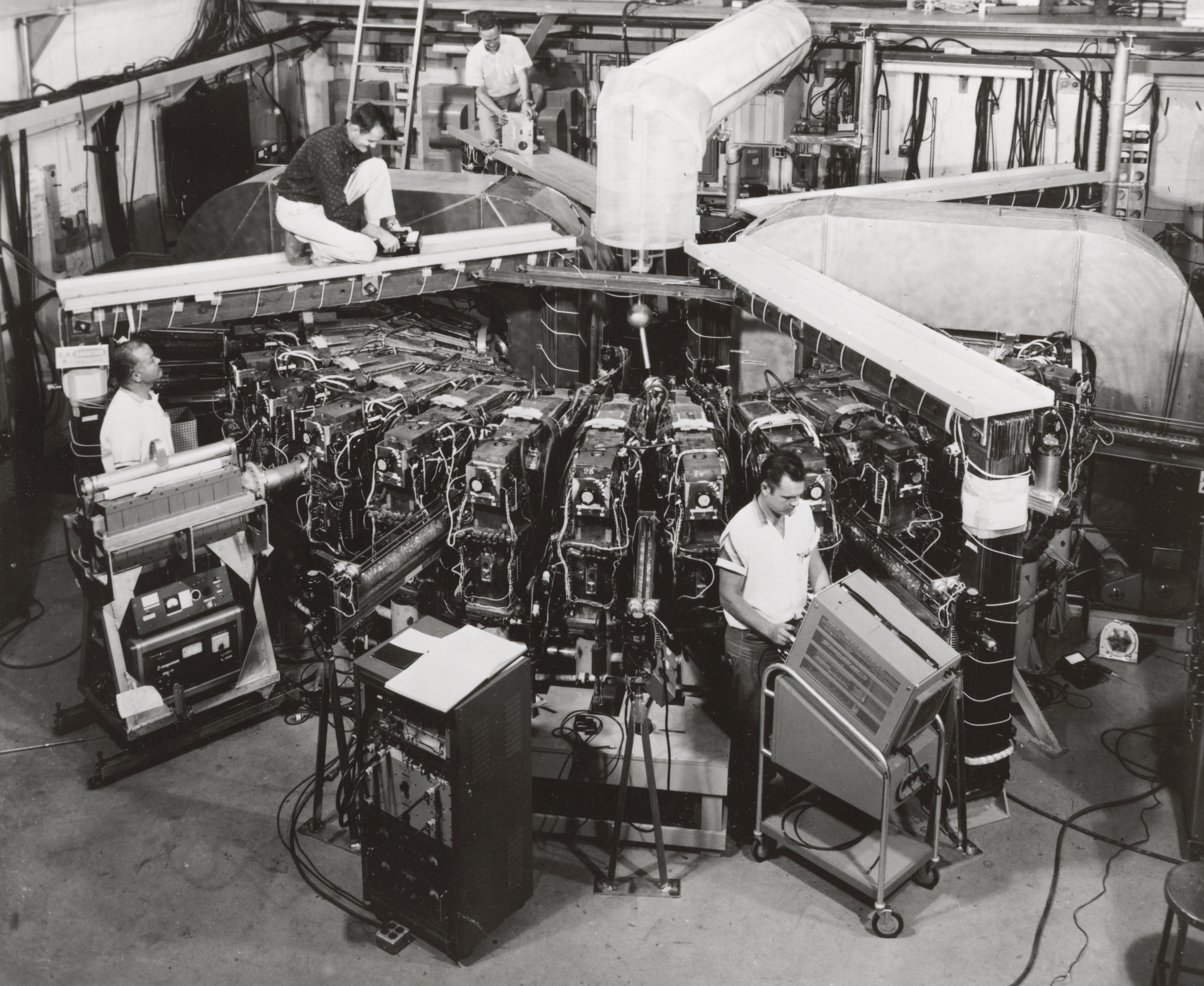
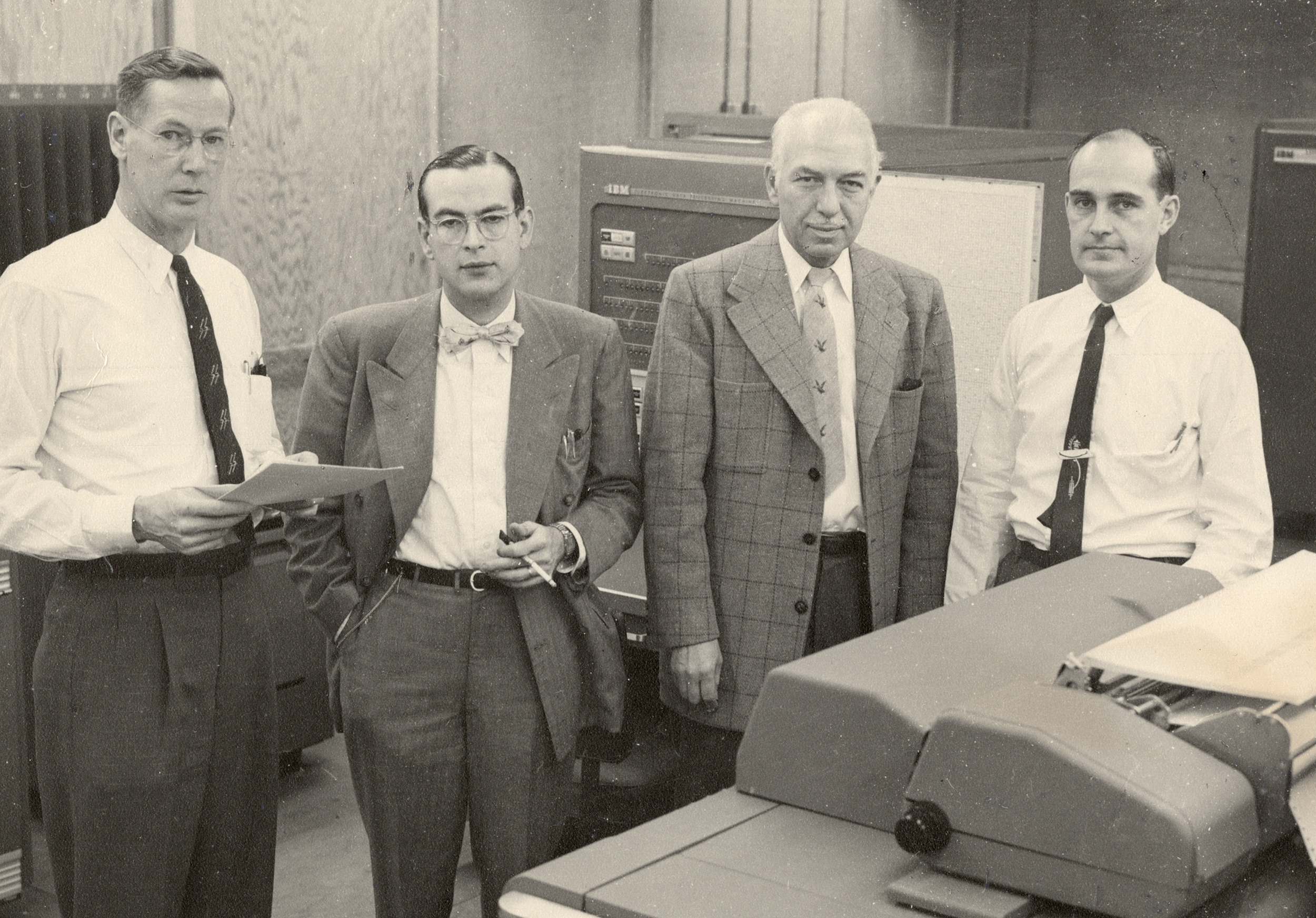

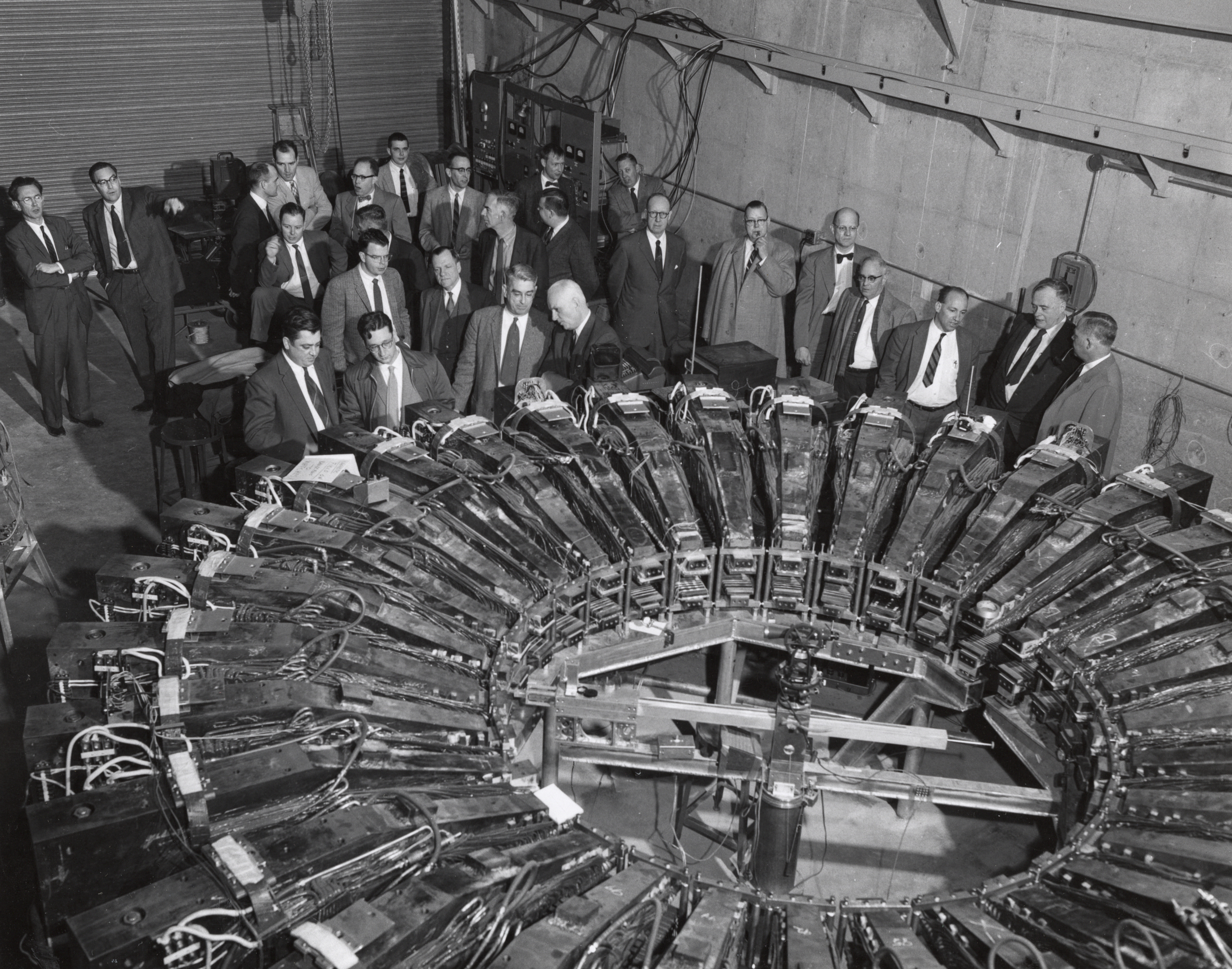

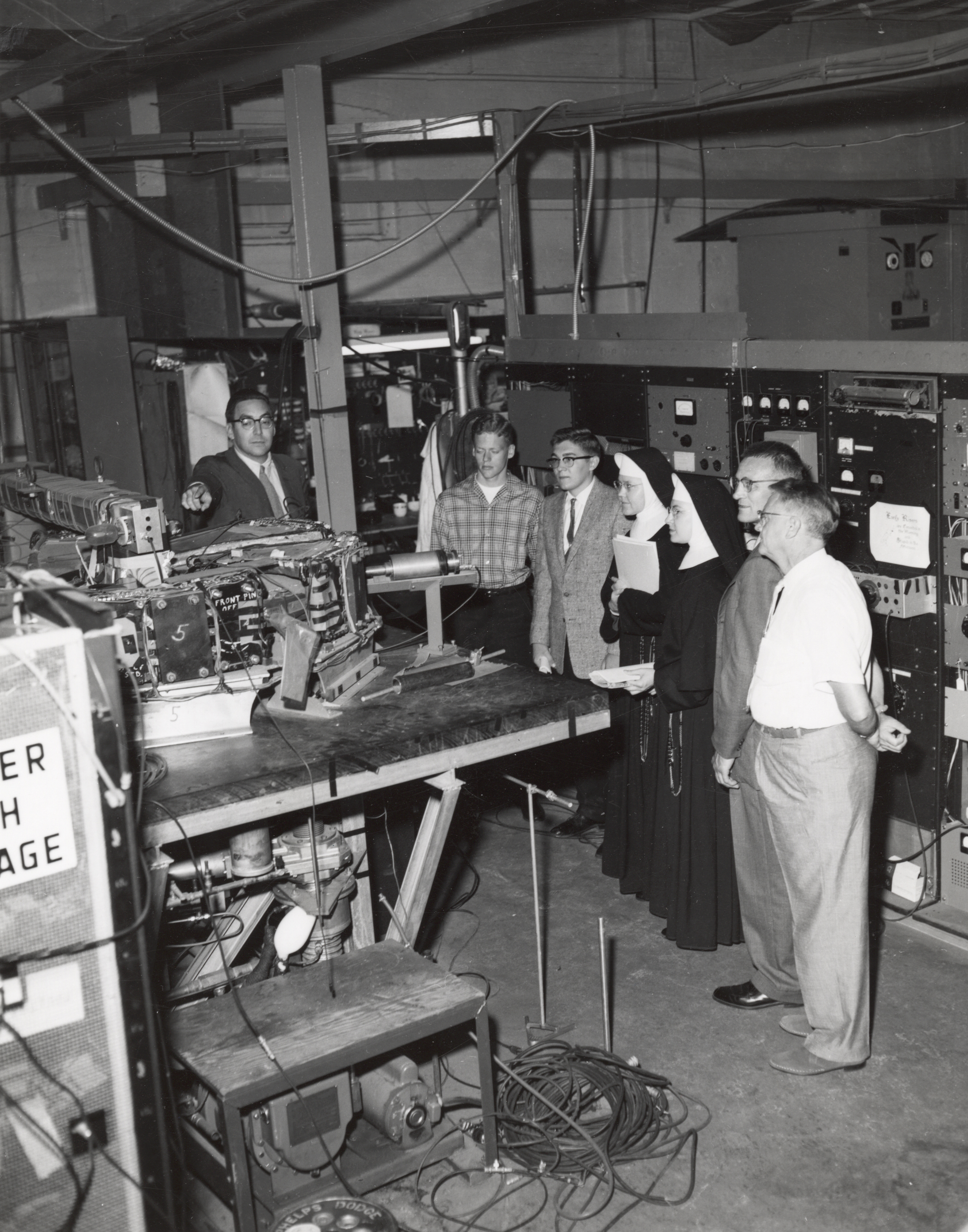
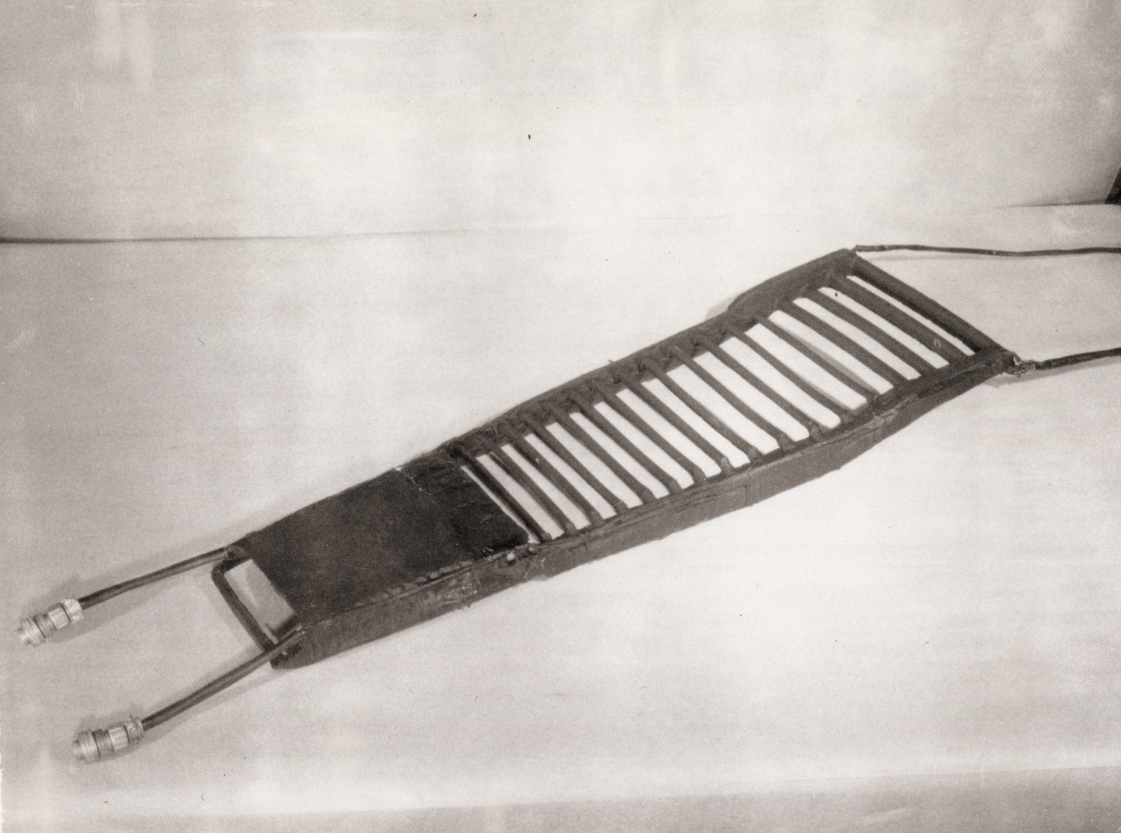
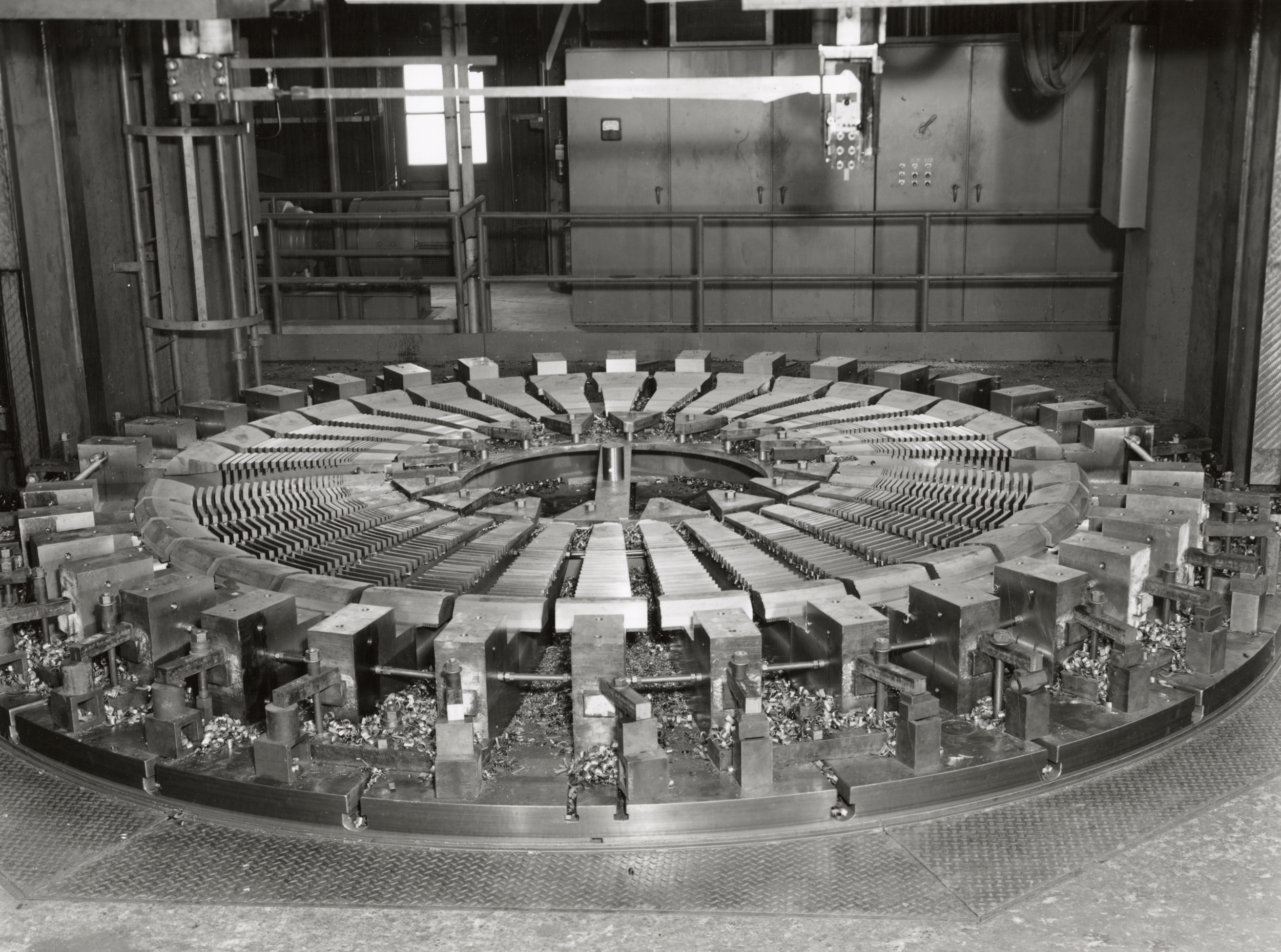
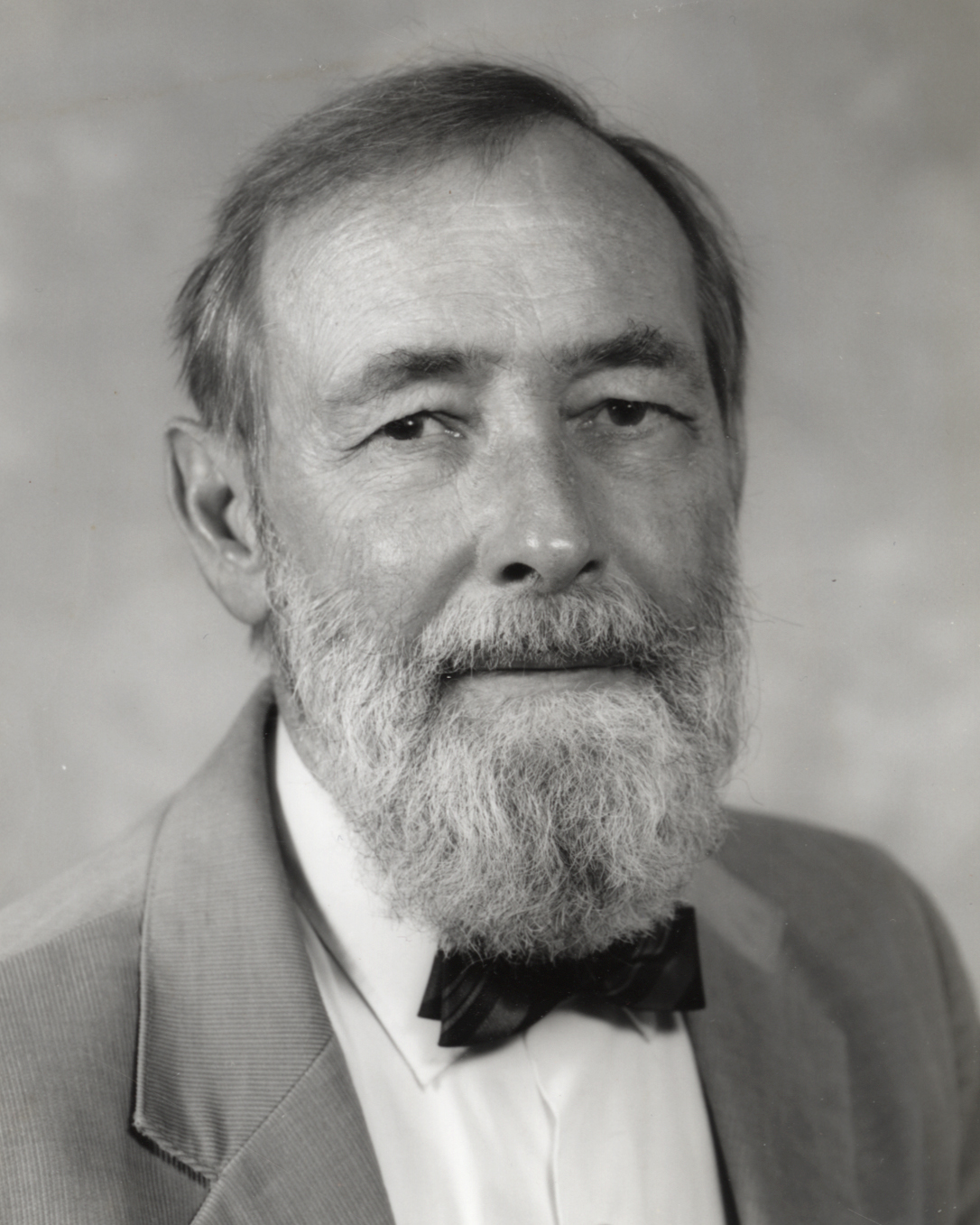
Precision instrumentation needed to be fabricated and documented for various aspects of the light source (Photos: University of Madison Wisconsin Archives):
The Synchrotron Radiation Center was built between 1979 and 1981 on the same land as the Tantalus accelerator. It's electron ring wouldn't gain full functionality until the mid-1980's after National Science Foundation funding was restored.
Photo: University of Wisconsin Madison Archives
The photo below was taken before the installation of user chambers and gives a clear view of the Aladdin beamline in the SRC's "vault", the underground chamber housing the accelerator. The electron storage ring and bending magnets can be seen clearly. The equipment is bolted into the cement floor, which was poured in nine sections and lies directly on bedrock. This provided the stability required to adjust the apparatus to micron-level accuracy:
Photo: University of Wisconsin Madison Archives
The space would eventually fill with the infrastructure of experimentation. The below photos are from the mid-1980's. Aluminum foil adorns sections of the equipment as its non-conductivity, ease of manipulation, and low-cost make it an excellent choice for electronic shielding:
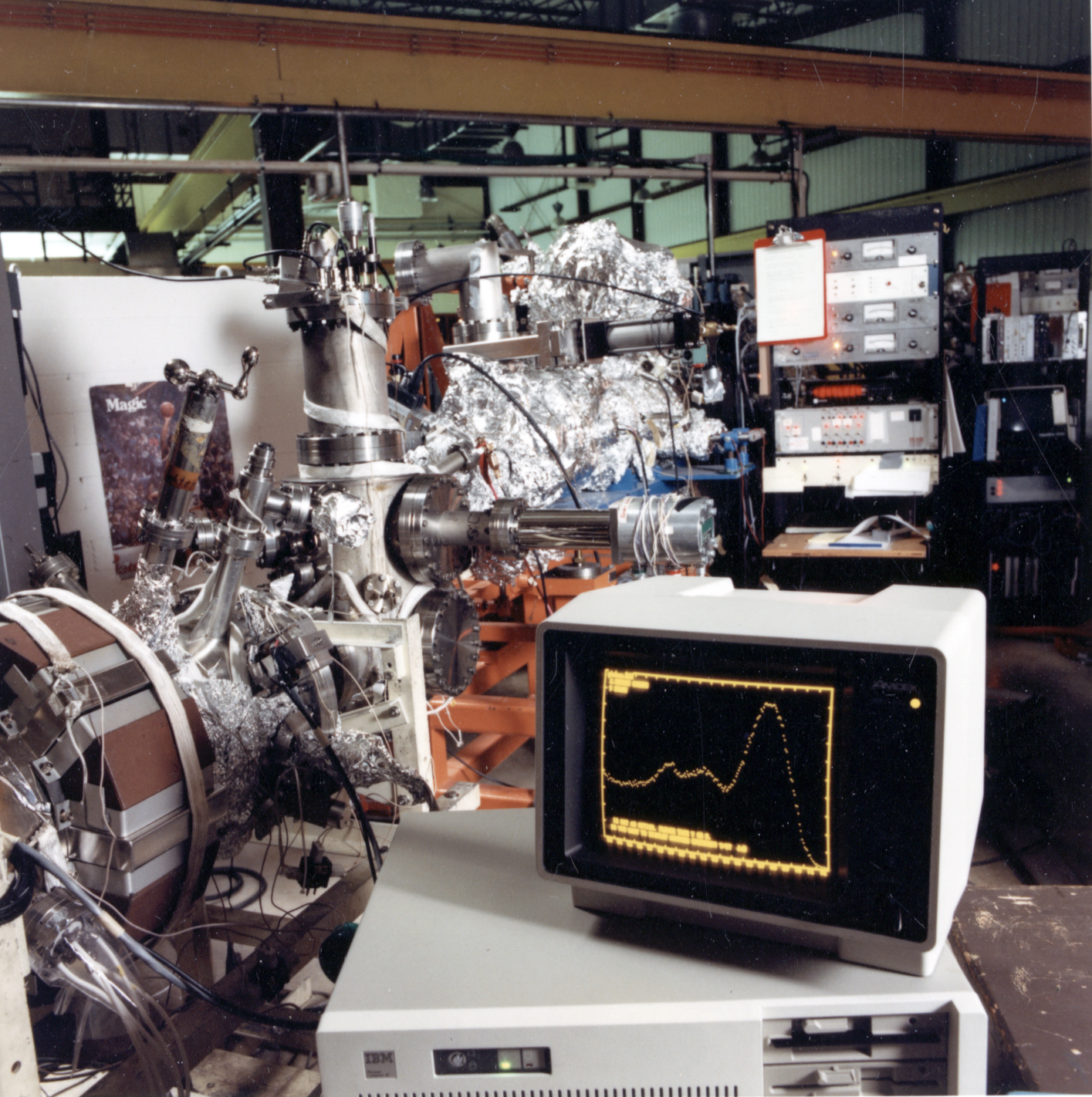
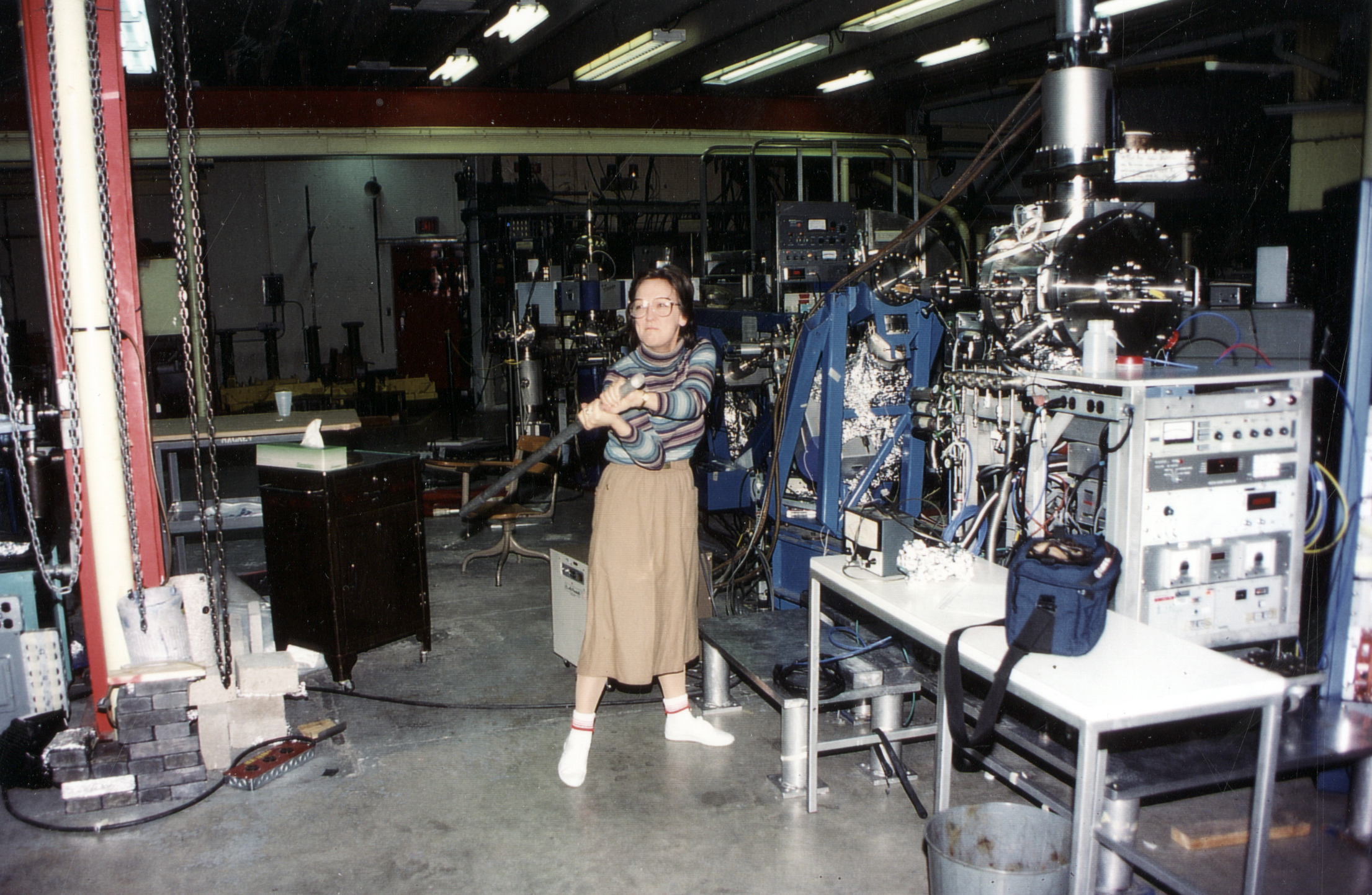

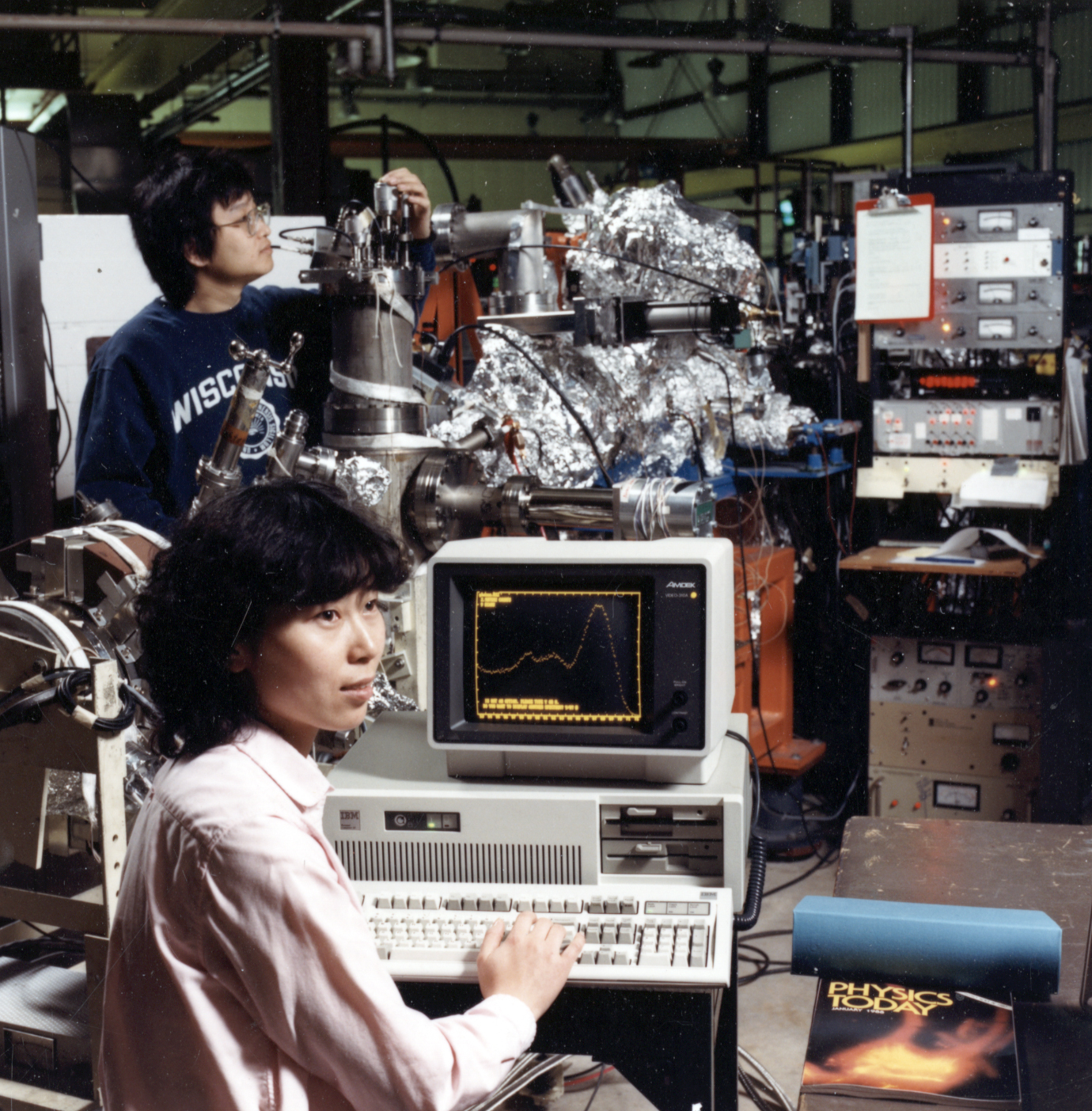
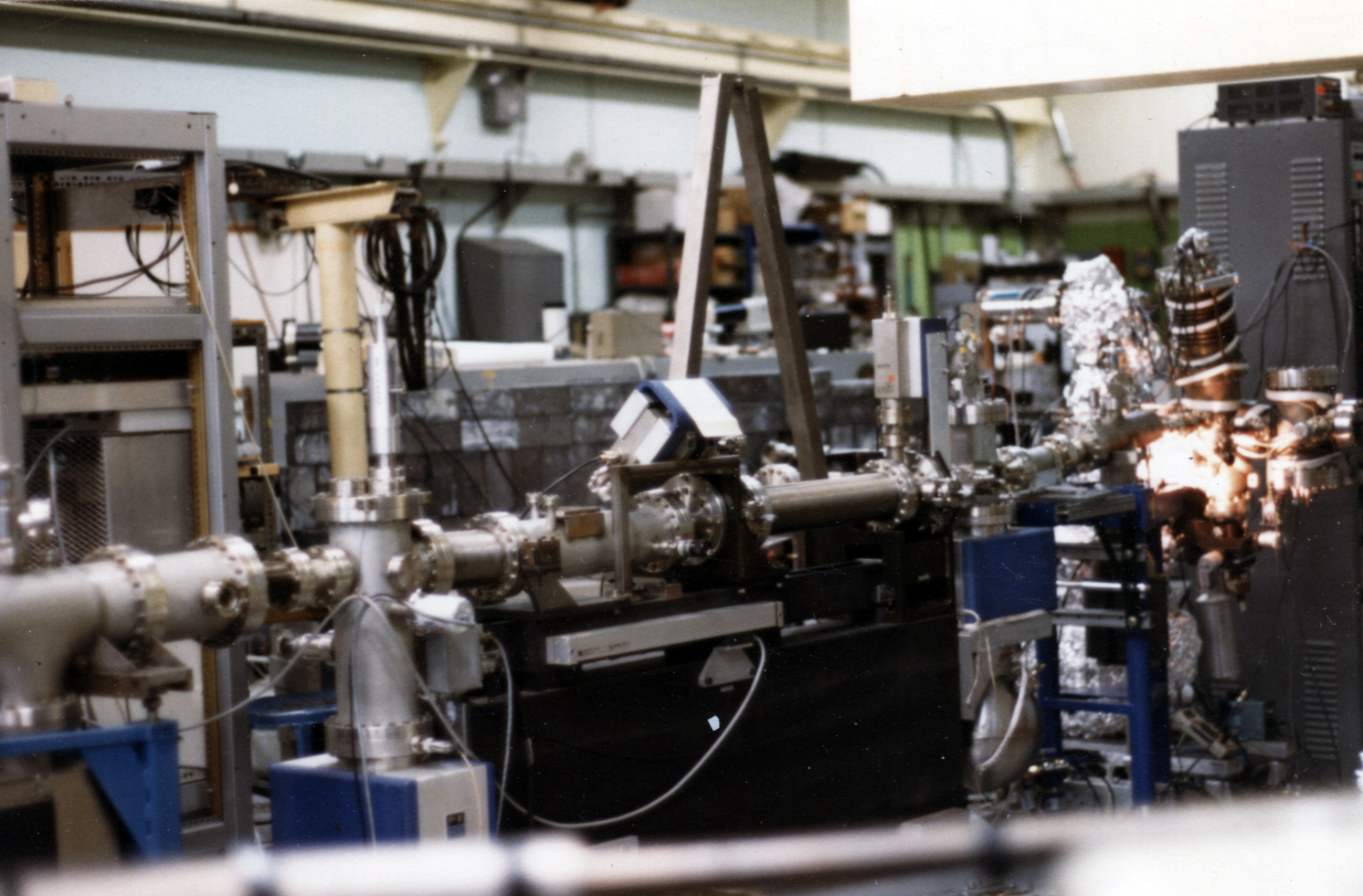

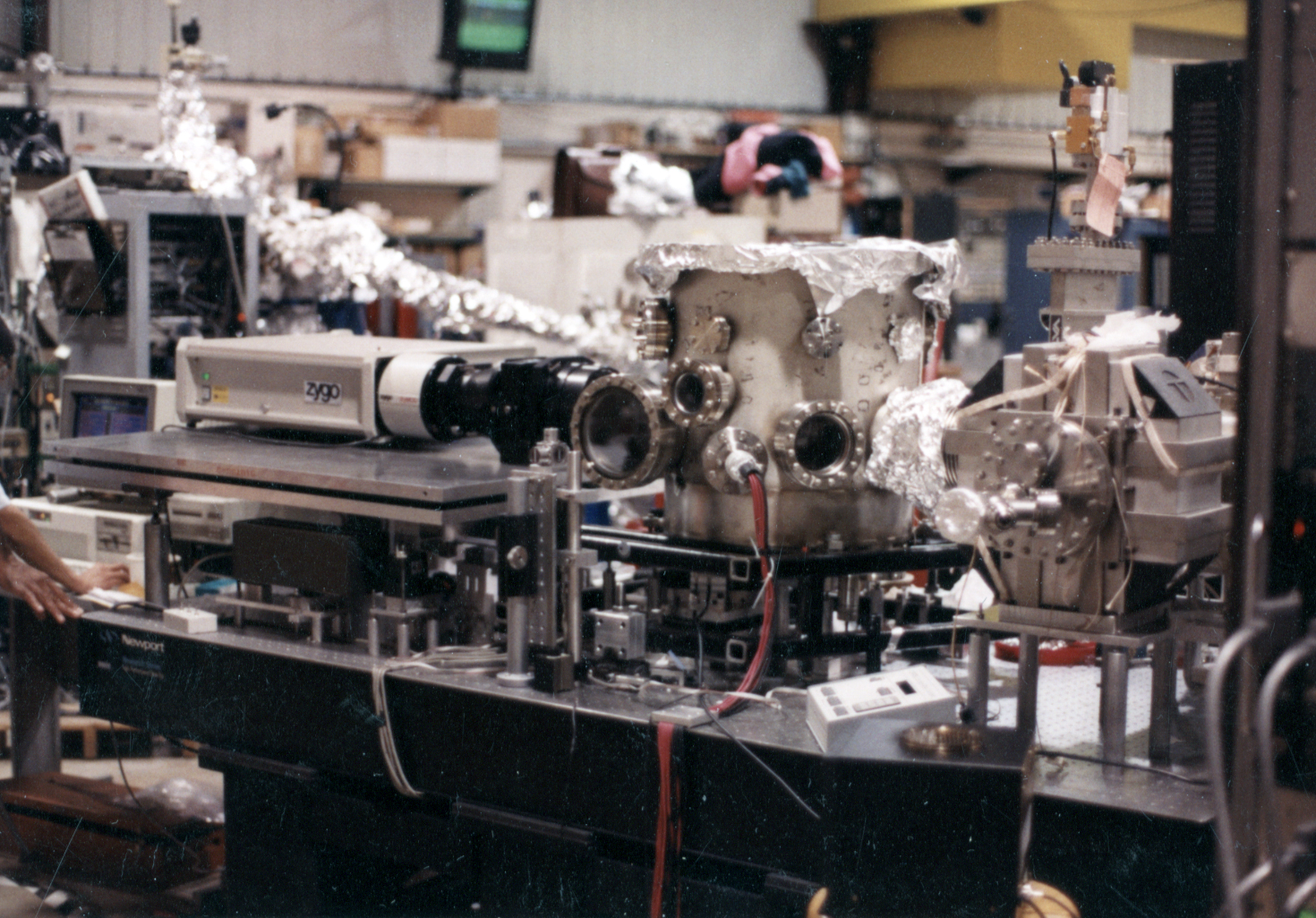
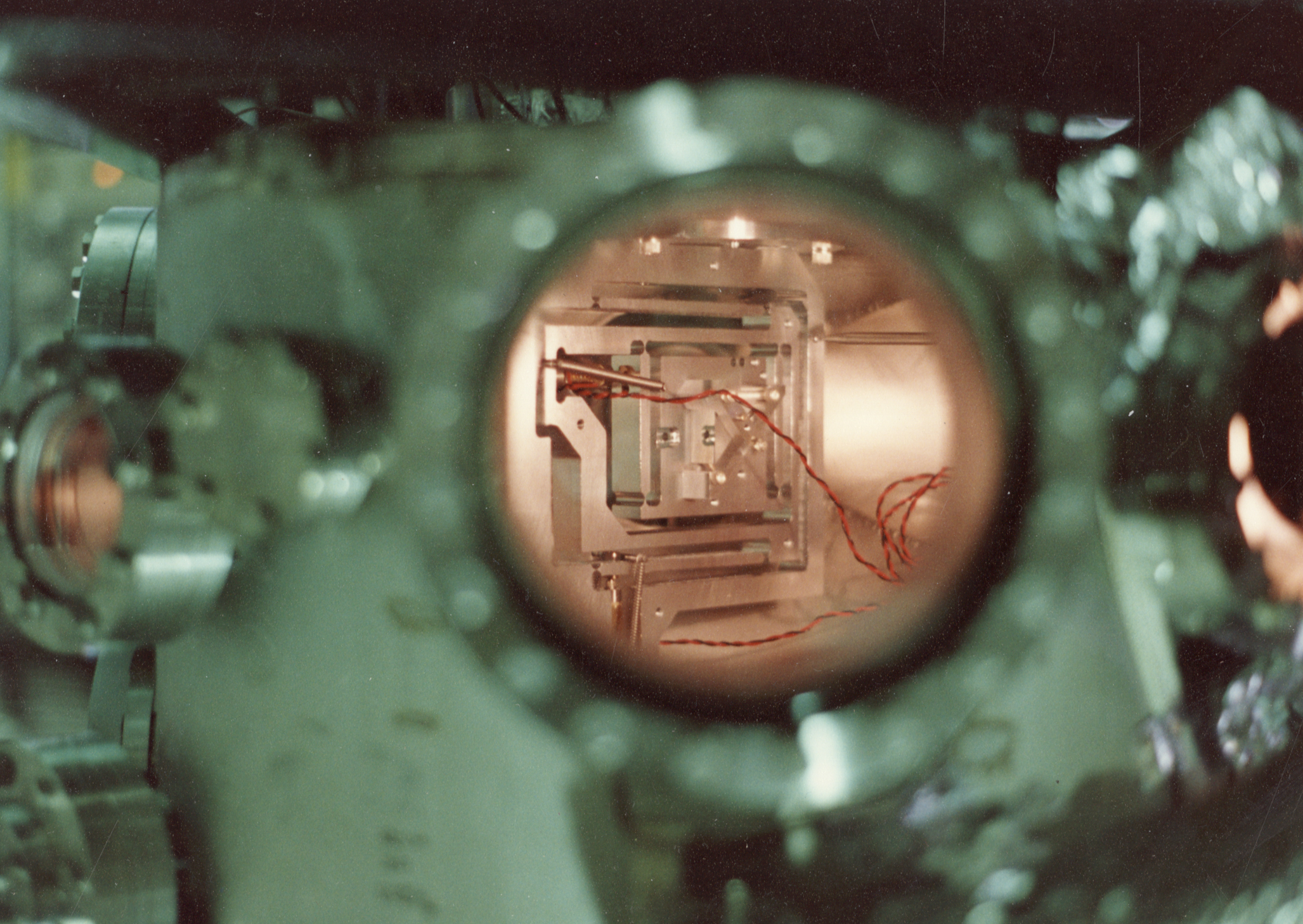

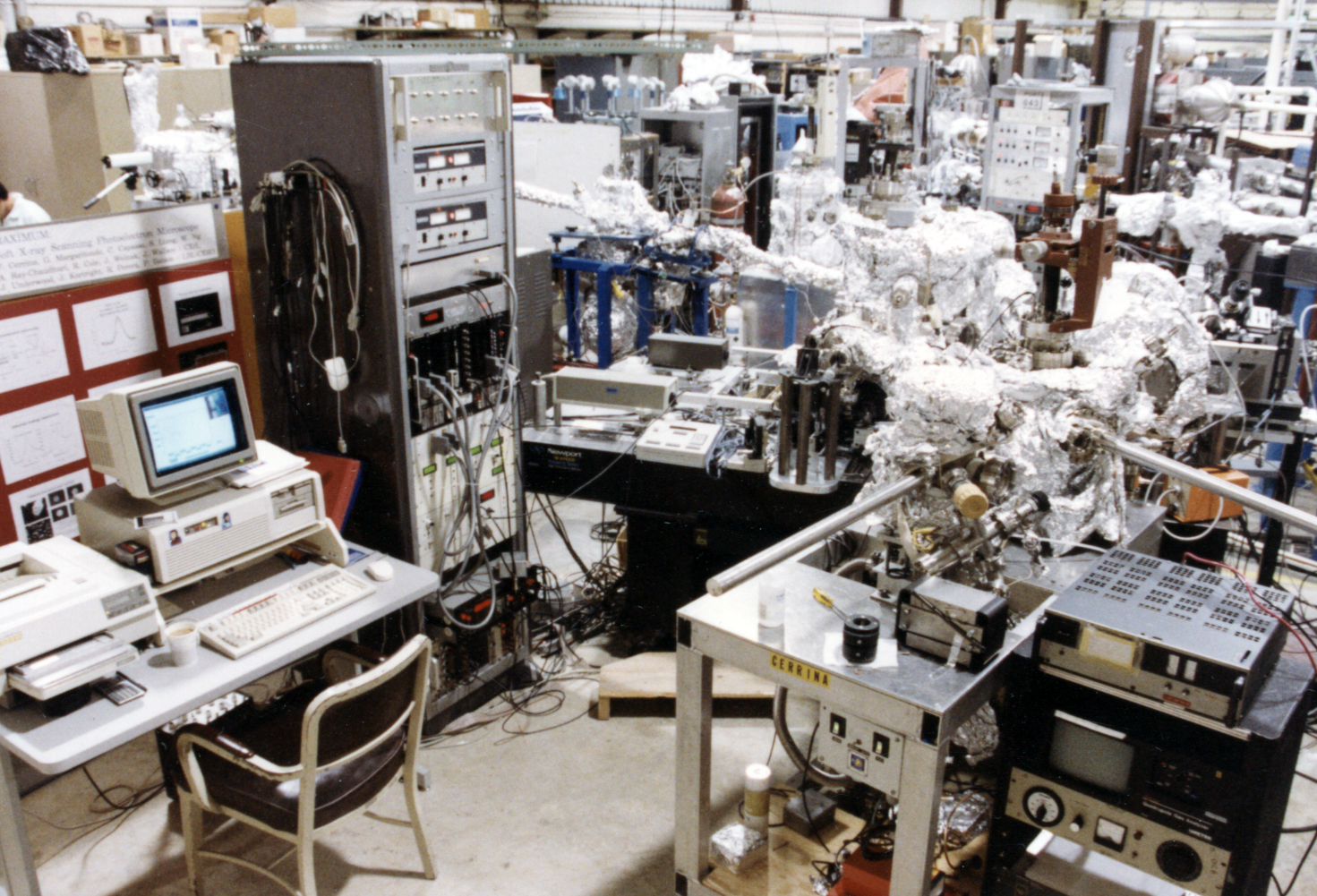
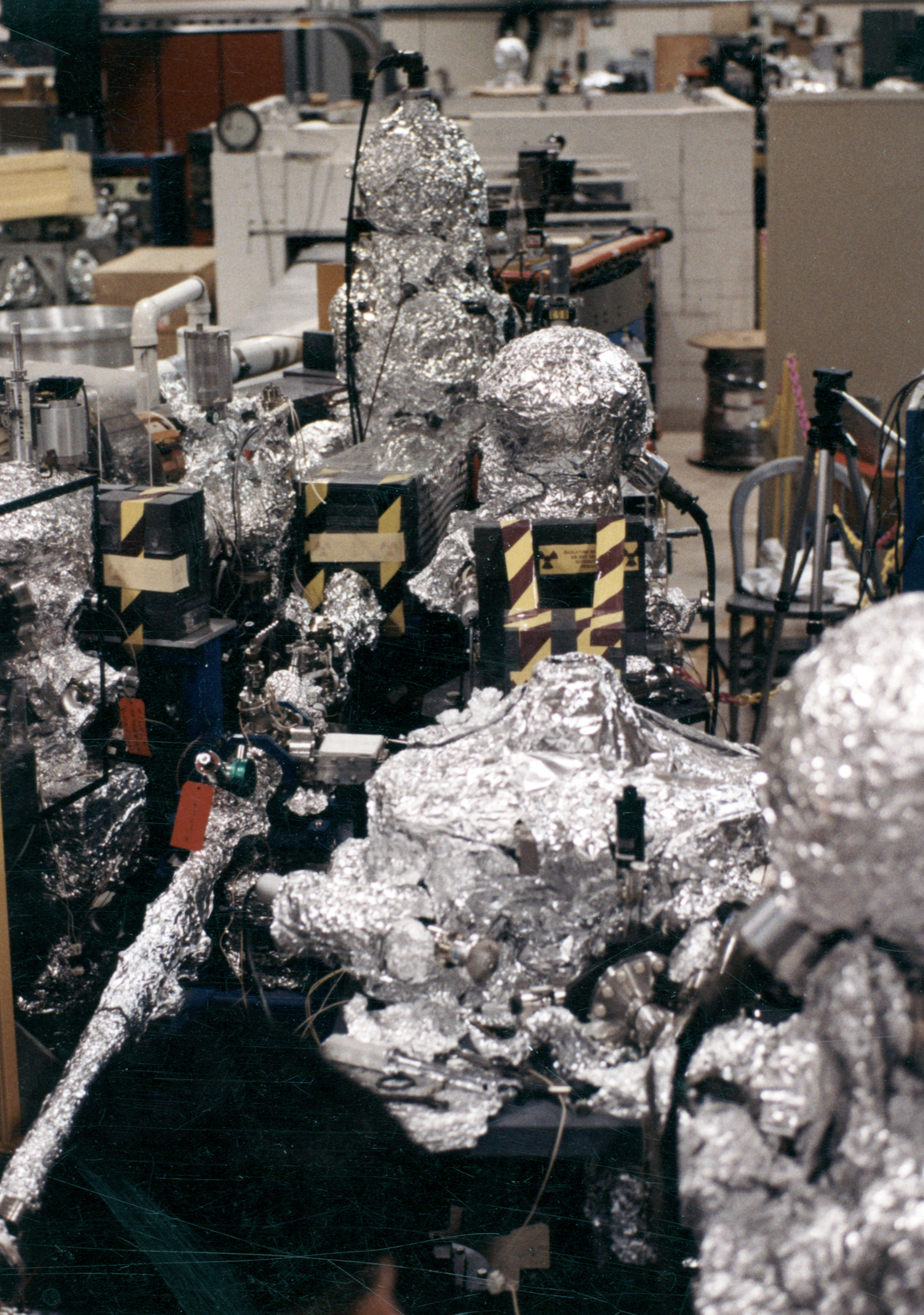
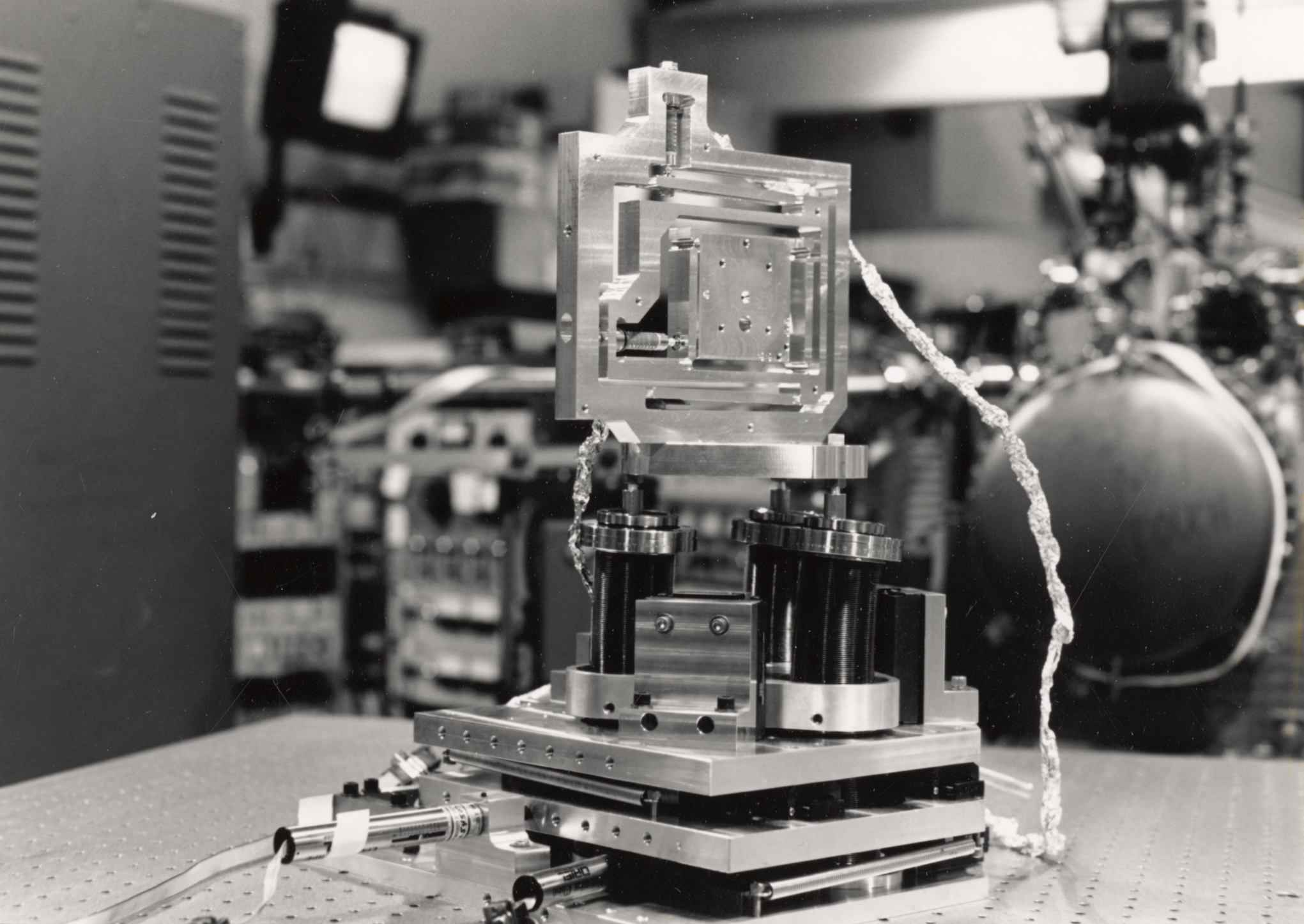
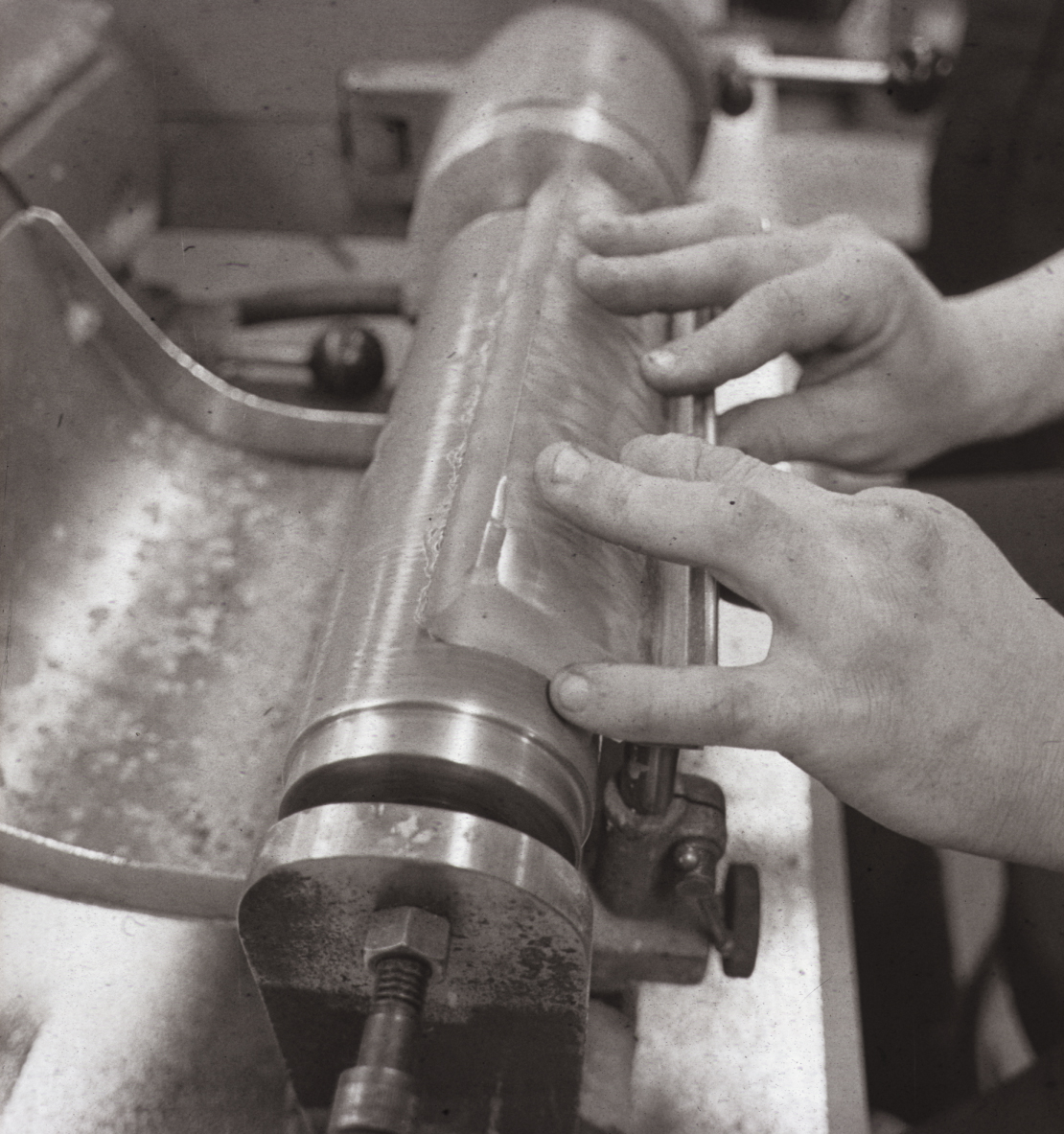
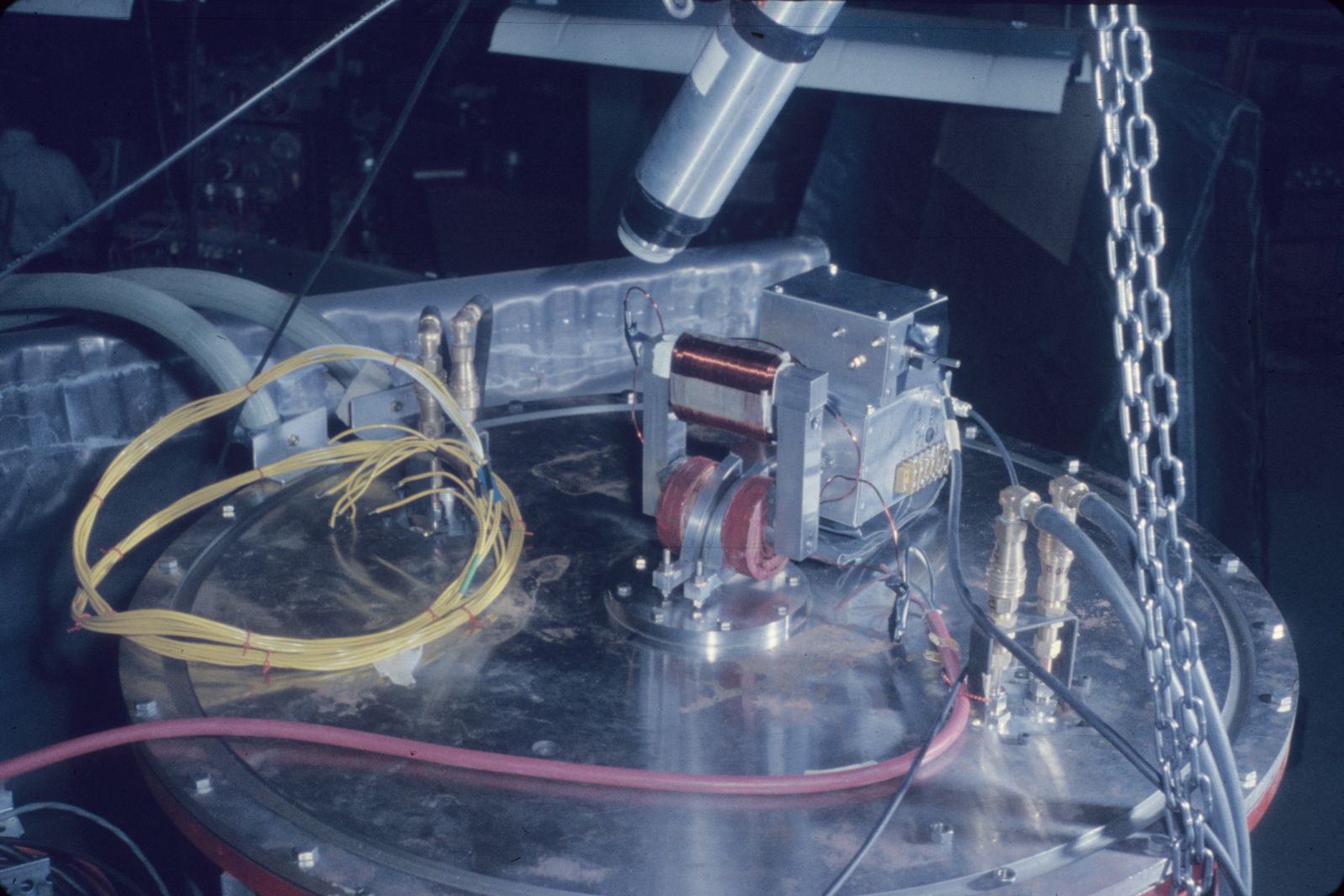

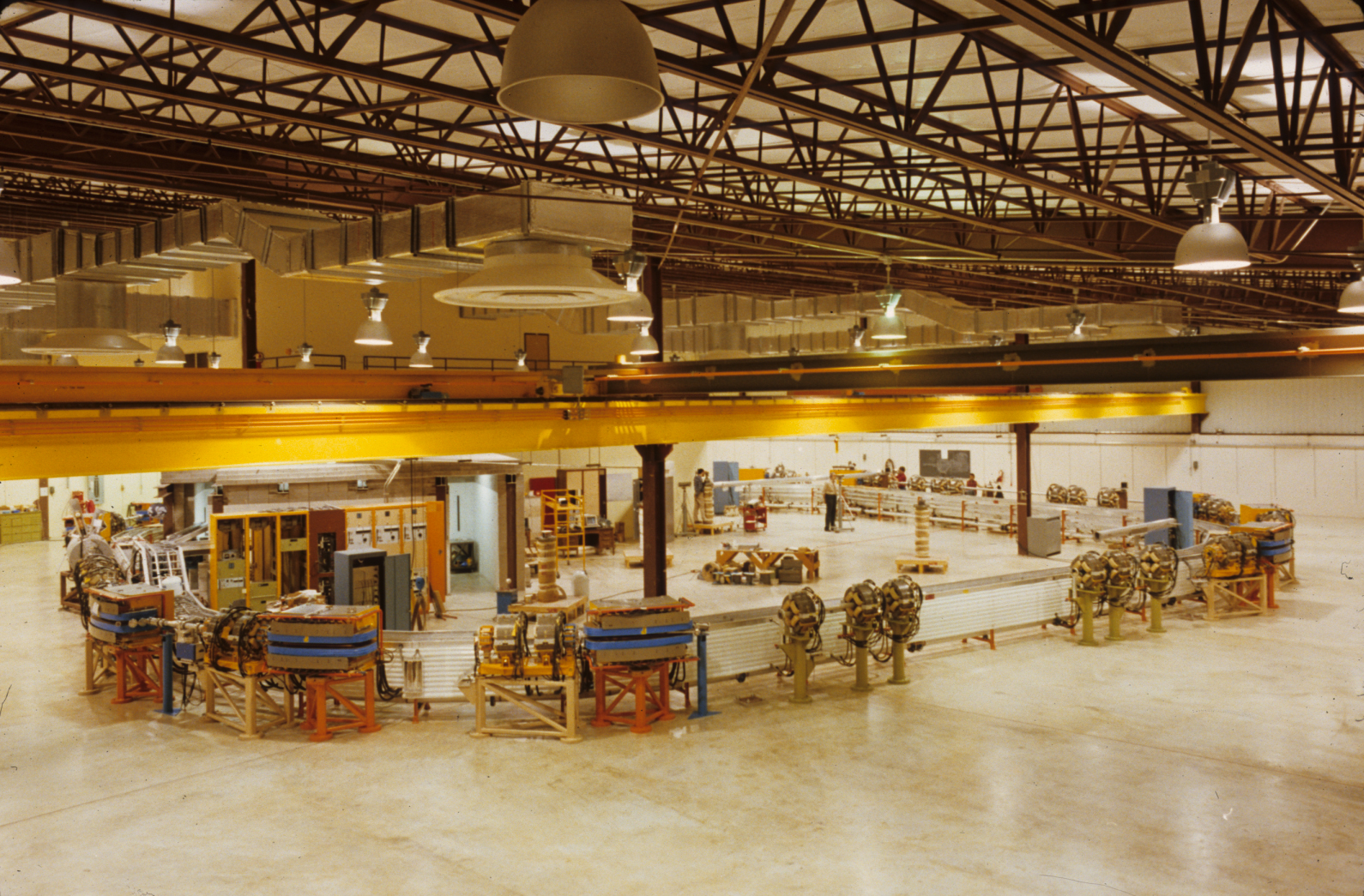
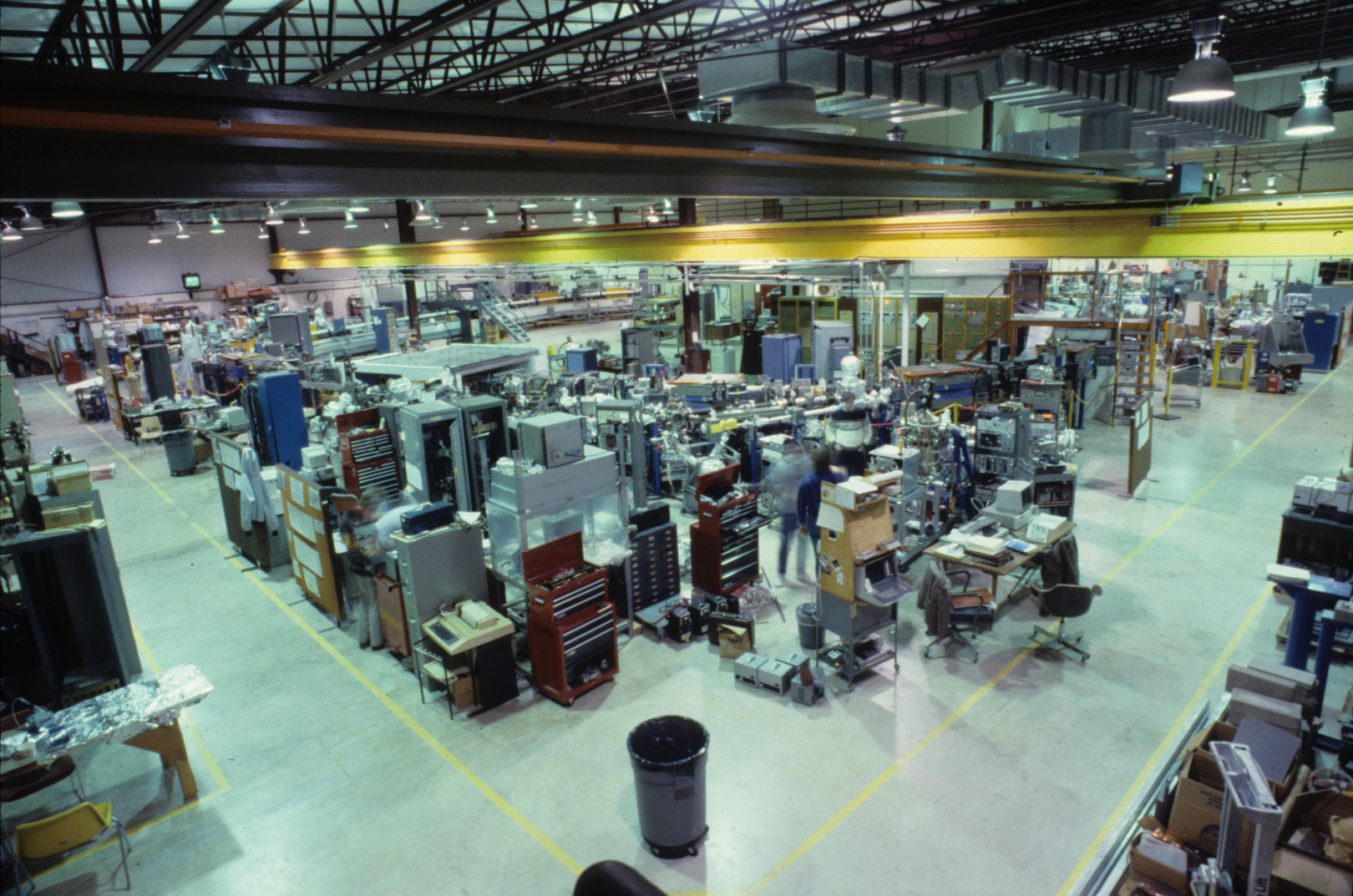
Below is a hand-drawn aerial view of the Aladdin storage ring at the SRC. Highly energized electrons traveled clockwise around the ring in an enclosed vacuum. Powerful electromagnets allowed the beam to change course and turn around the corners of the ring. In doing so, photons in the form of synchrotron radiation shed from the main energy beam. The antennae-like extensions that branch off of the ring are user chambers, individual platforms for experimentation, each designed for a specific purpose. There the synchrotron radiation was harnessed and manipulated:
Photo: University of Wisconsin Madison Archives
The beamline was like a high-tech campfire, an energy source around which gathered researchers from all over the globe. Outside of the main facility, a small village of mobile offices grew to accommodate its visitors:
Photo: Mary Severson
The following photos were taken in March of 2014 during the final days of the SRC's full functionality and reflect the technological complexity that had amassed around the beamline (Photos: Mary Severson):
In addition to the technology, personal artifacts also accumulated in the facility (Photos: Mary Severson):
Each time the Aladdin ring reached a new, higher power-level, celebration ensued:
Photo: Mary Severson
The last beam was injected into Aladdin on March 7th, 2014. A message thanking Ed Rowe, the "father" of the SRC was displayed on the closed-circuit monitors:
Photo: Mary Severson
After funding for the SRC was lost, its employees, many of whom had built aspects of the beamline, were tasked with its disassembly. For many, this was an all-too-early conclusion to a life's work in the sciences.















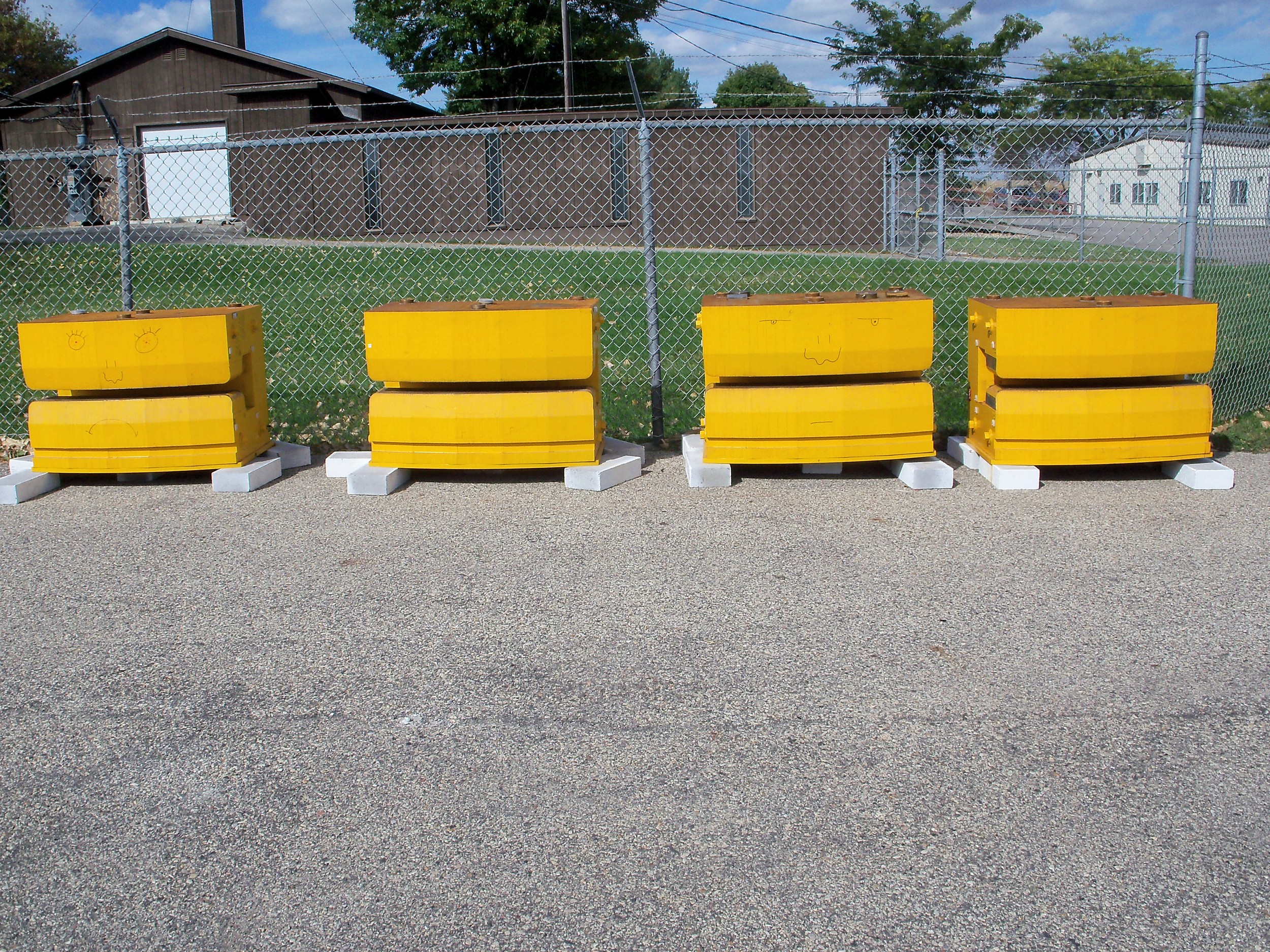



As the disassembly of the Aladdin beamline reached near-completion, Condensed Matter Community was organized and installed. Below are images from planning sessions prior to the exhibition:
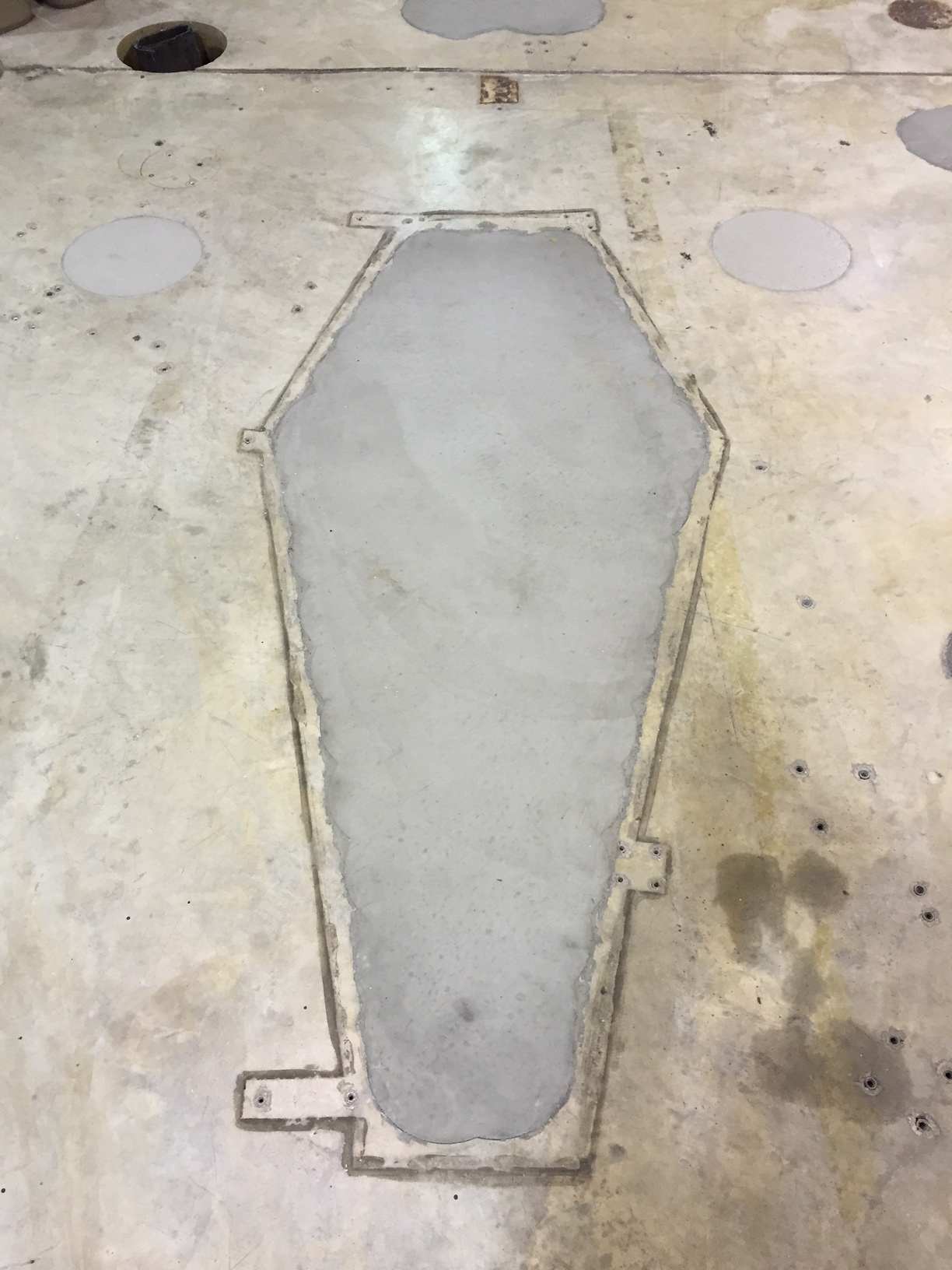


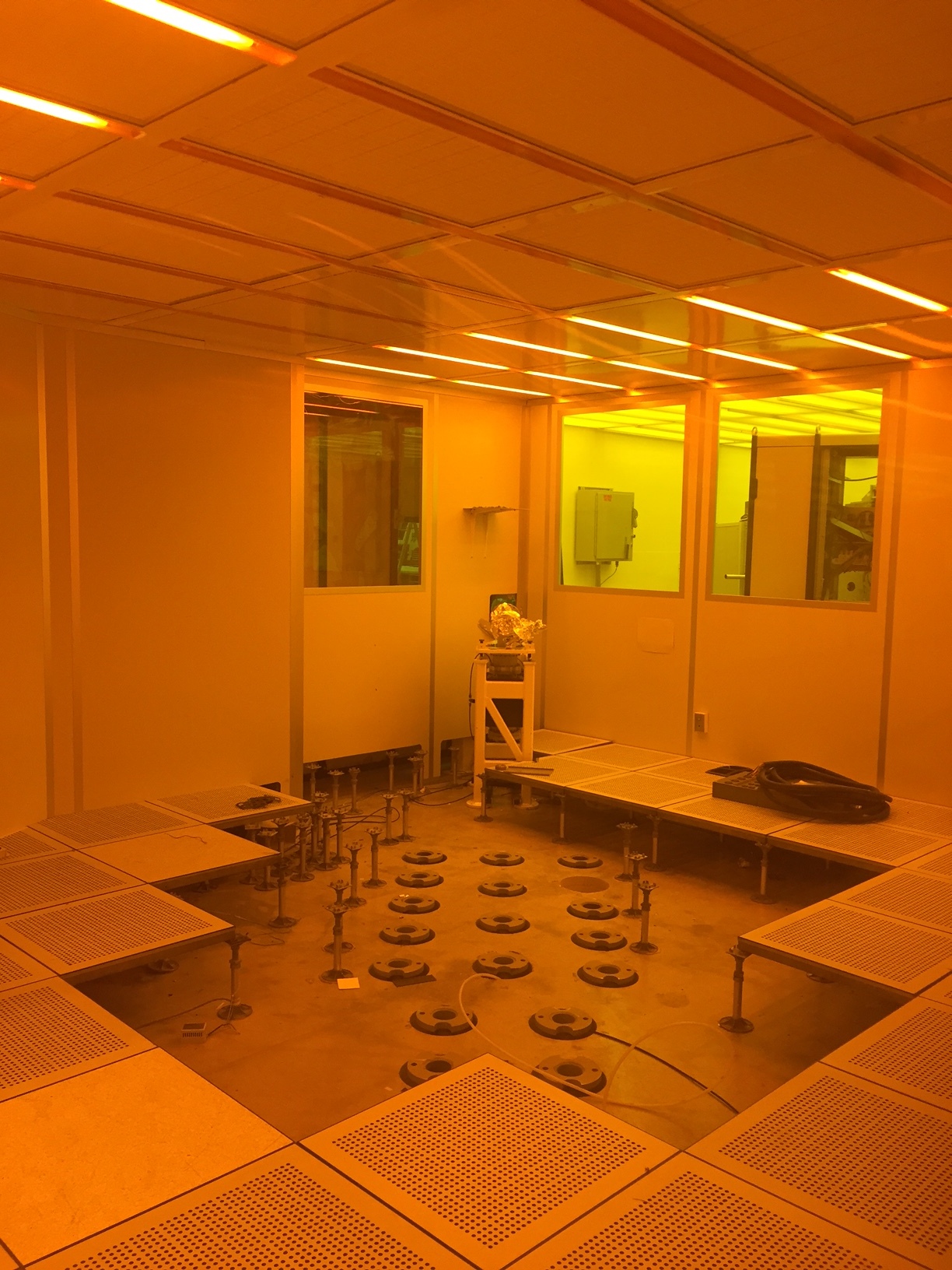


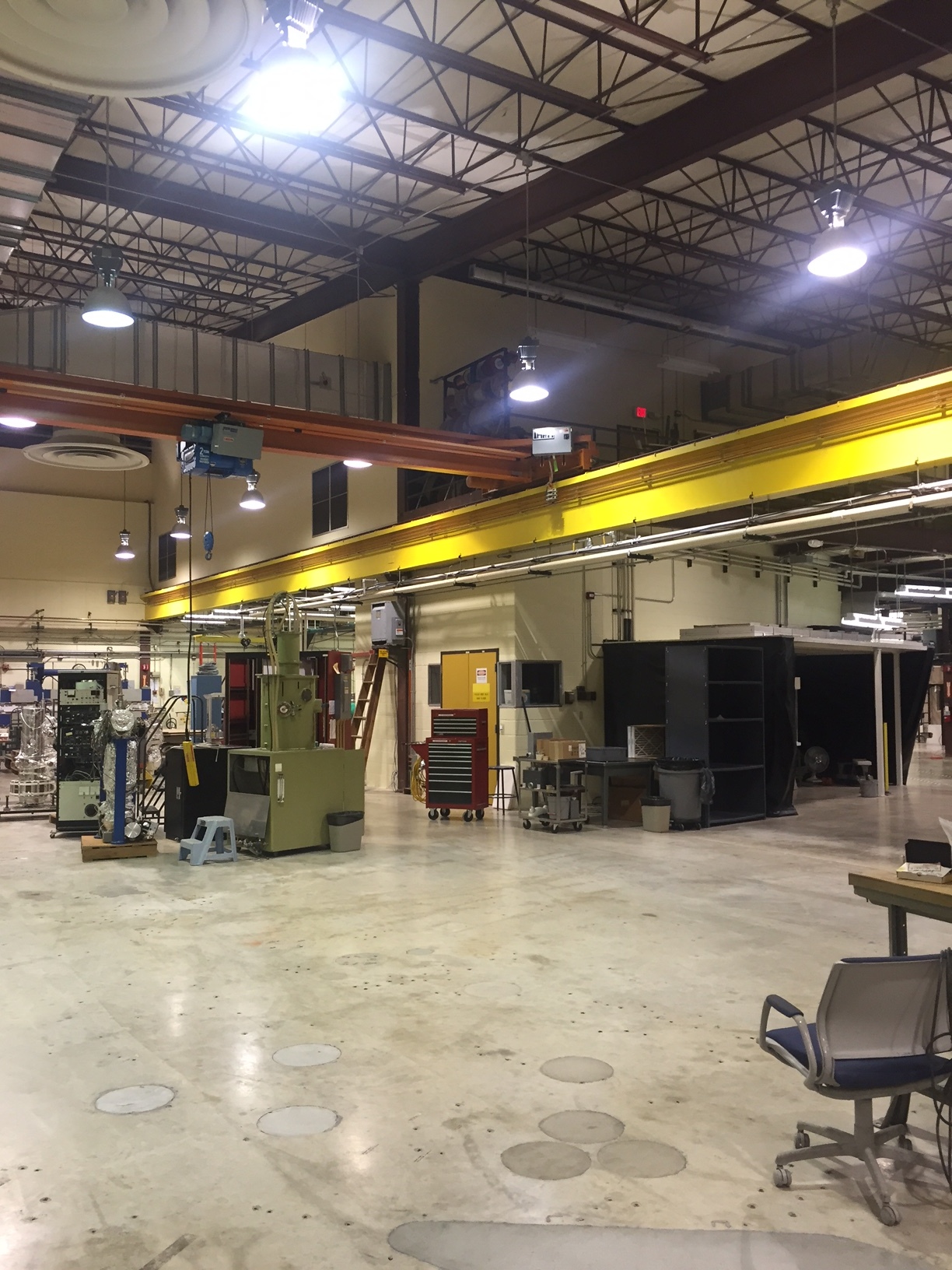
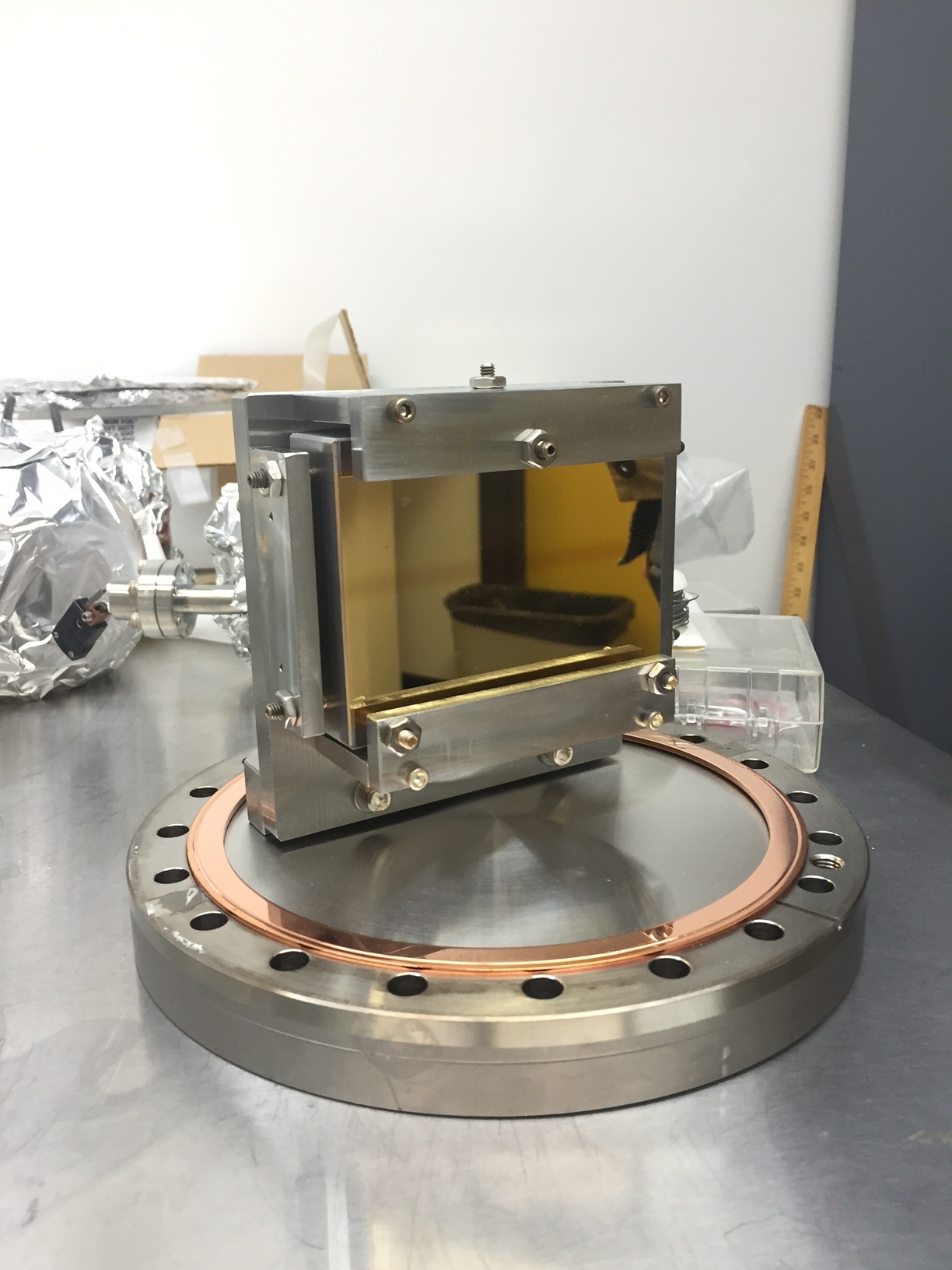
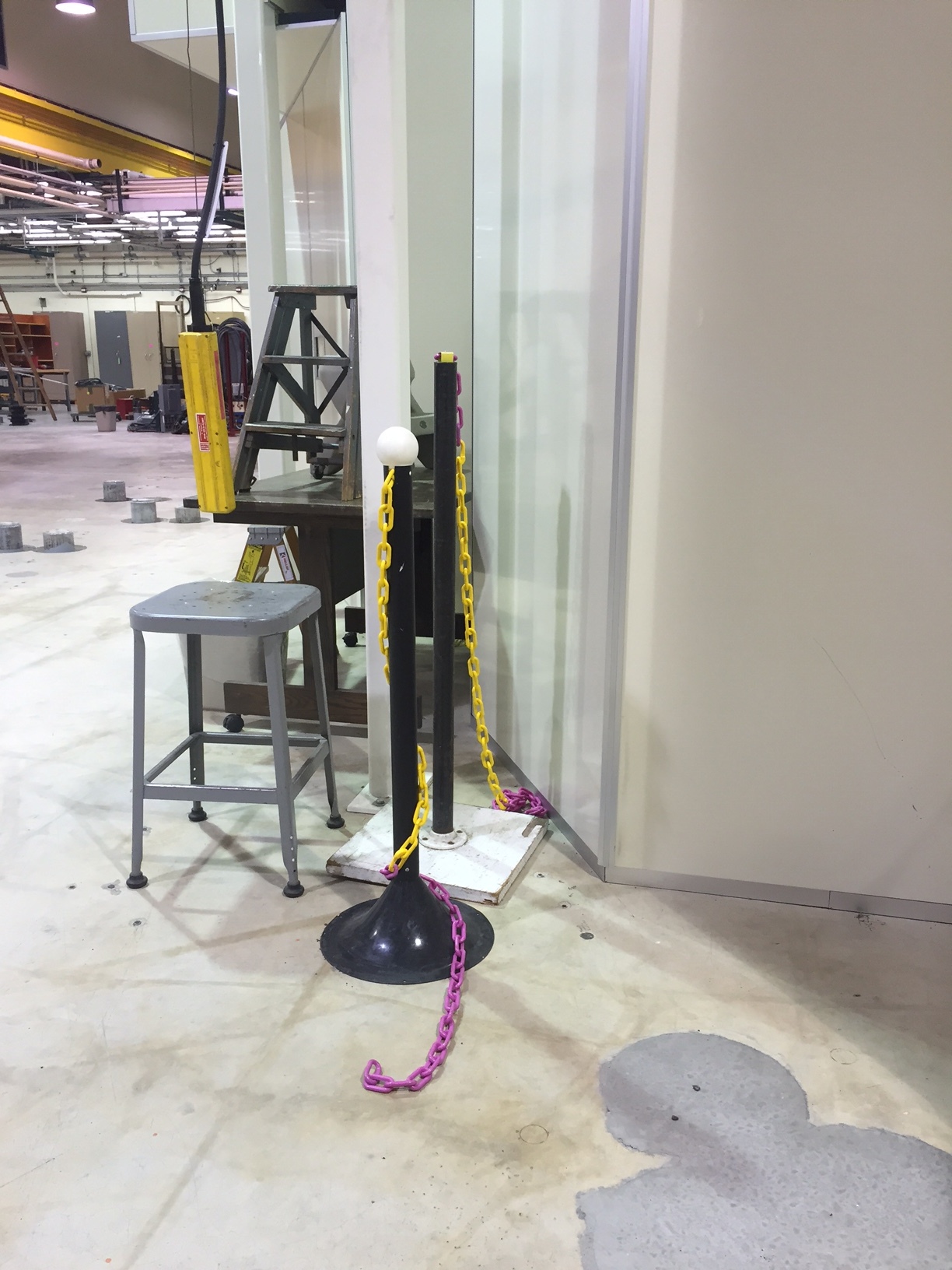

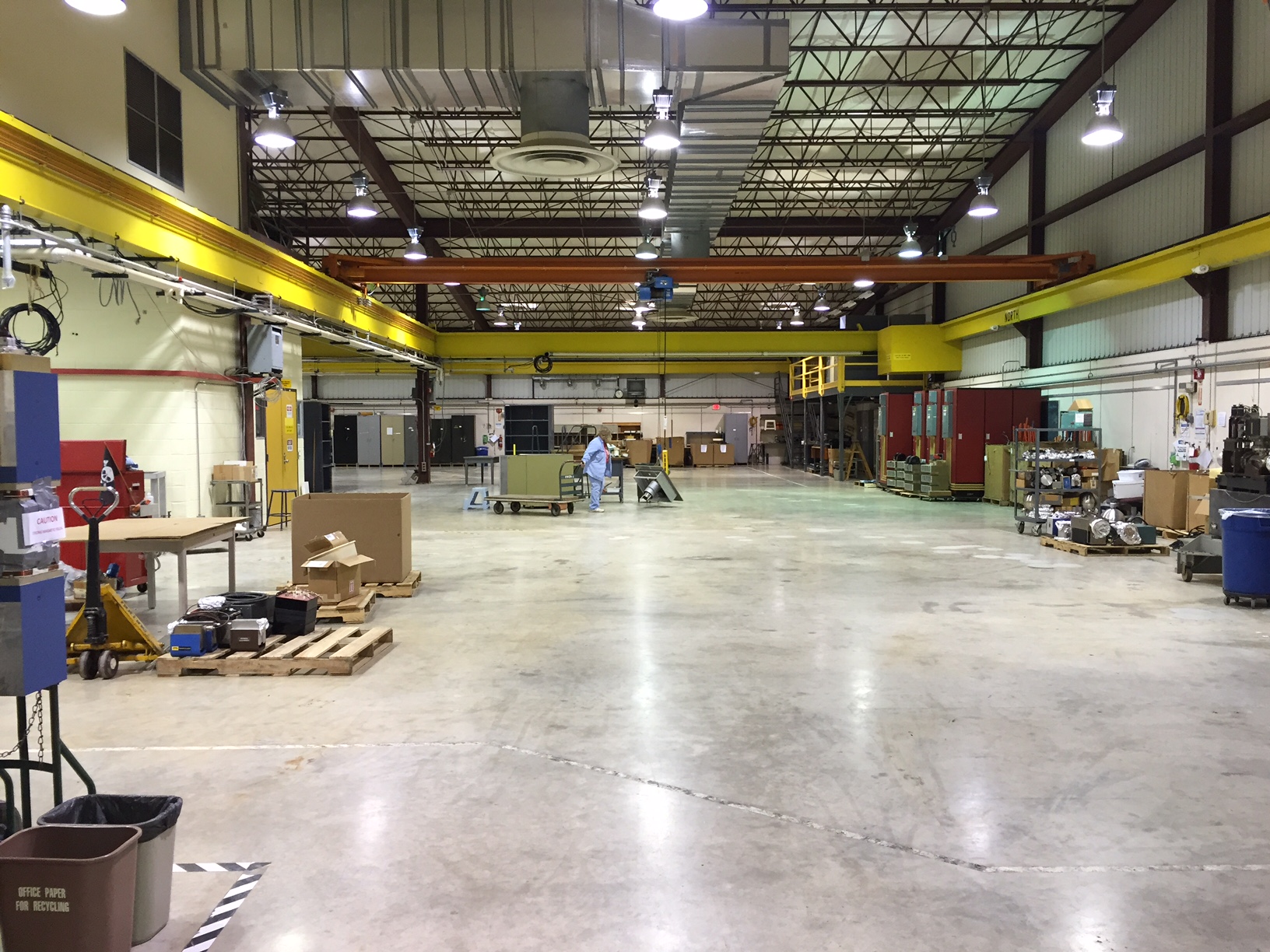

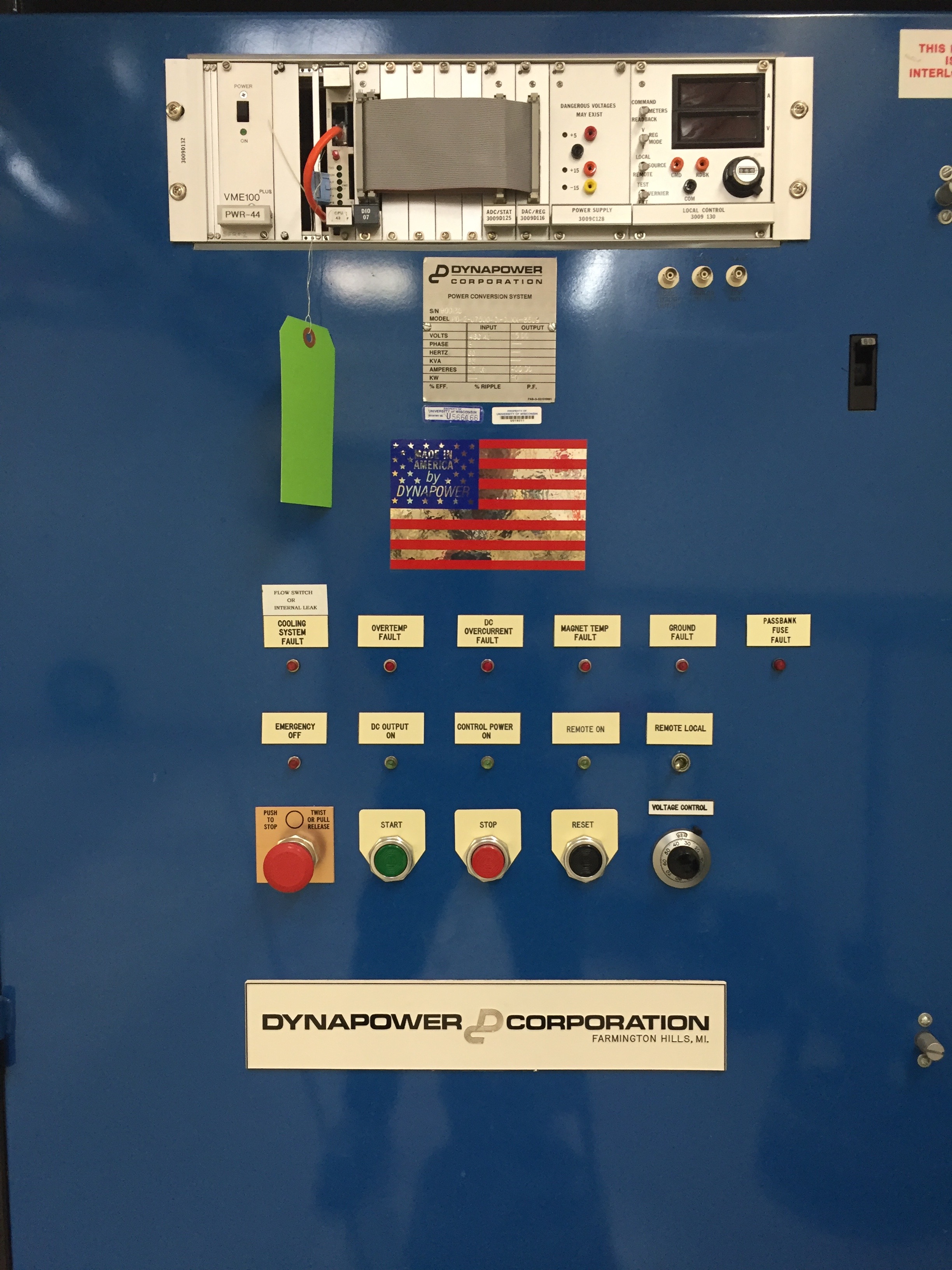

Photo: Evan Gruzis
